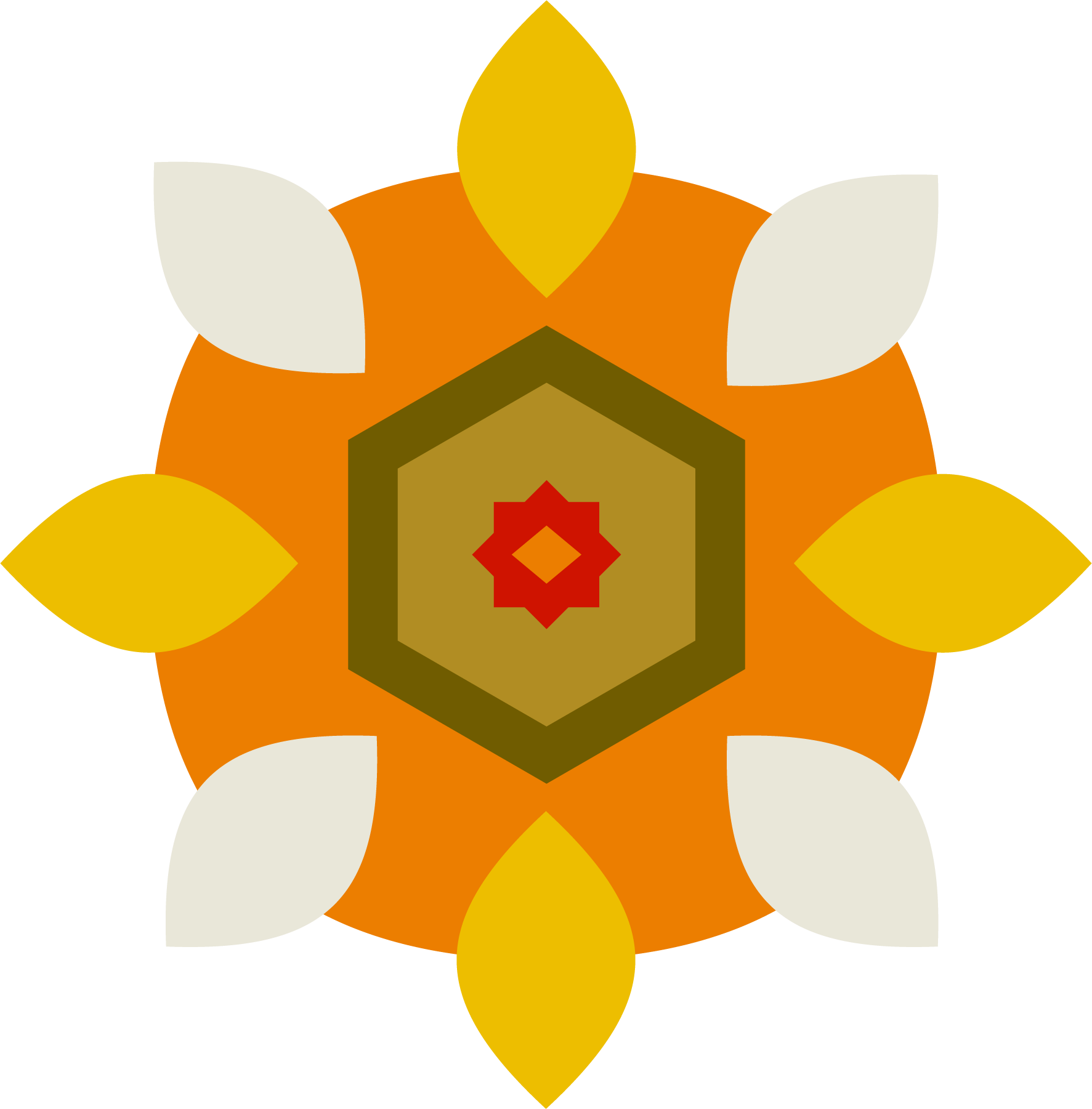ลัดเลาะผ่านขอบเขตกําแพงเมืองเก่า สู๋ย่านที่ครั้งหนึ่งเป็นโรงงานไม้ของเมือง
Walking through old city boundary and explore a part of once a city wooden factory district

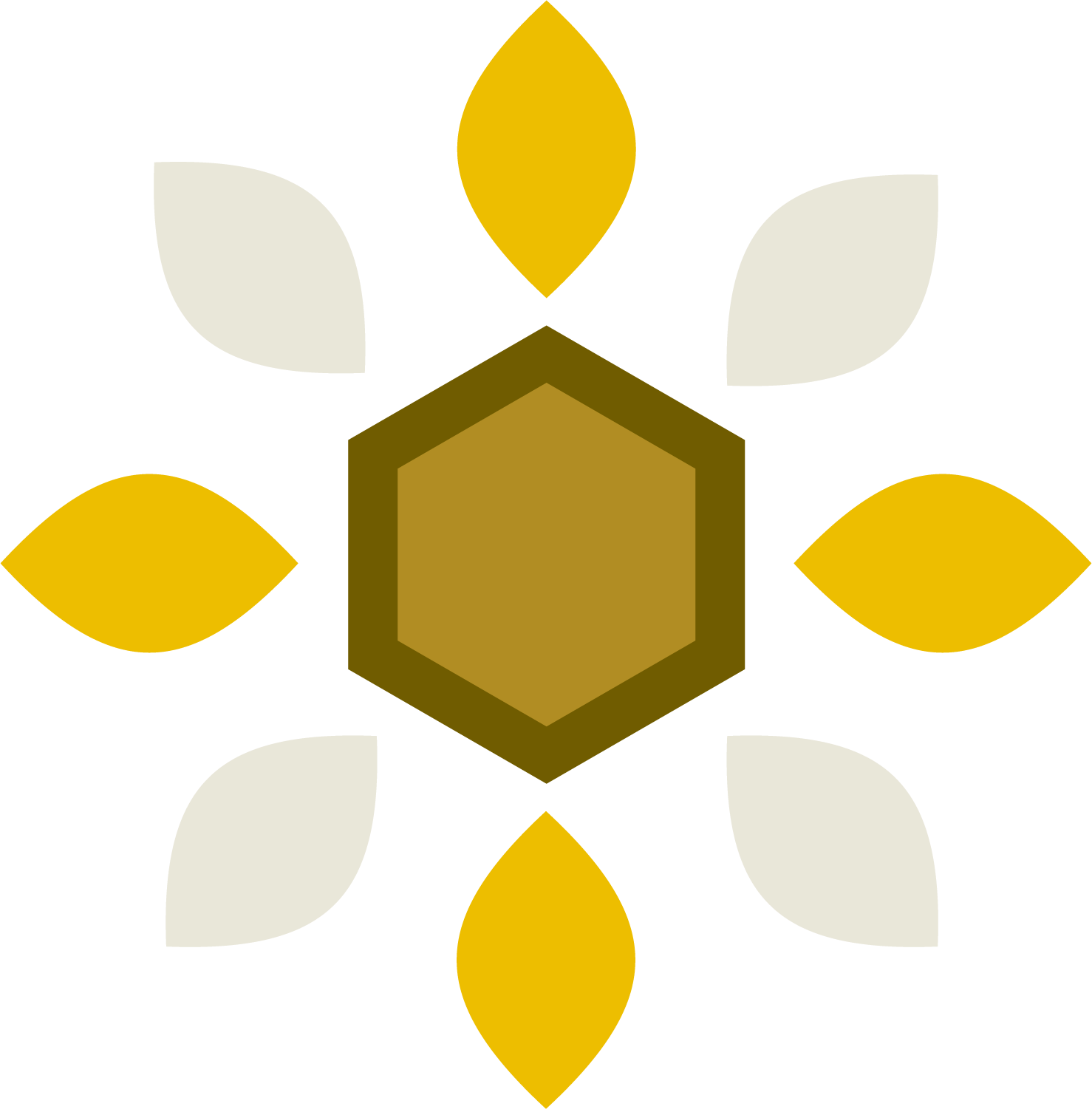
เดินในซอยข้างวัด สูดกลิ่นอาหารเลิศรส ดื่มกาแฟที่คาเฟ่สุดชิค ชมผลิตภัณฑ์ไม้ในย่านดั้งเดิม
Walk along the alley beside the temple, savor the aroma of exquisite food, enjoy a cup of coffee at the chic café, and admire the wooden products in the historic district.
ชวนชมสถานที่สำคัญ ผ่านทางออกสู่นอกเมืองเก่า เพื่อสำรวจย่านที่ครั้งหนึ่งเป็นแหล่งผลิตสินค้างานไม้ที่สำคัญแห่งแรกของกรุงเทพ
Explore the important sites through the exit to the outskirts of the old city to investigate the area that was once the first and crucial hub for the production of wooden products in Bangkok.

Introducing Our Audio Guide
ทําความรู้จักแต่ละสถานที่ให้มากขึ้นด้วย audio guide ของเรา ที่มีอยู่ในแต่ละสถานที่ โดยเราจะนําทางคุณไปตามเส้นทางต่างๆให้คุณสามารถ เดินไป ดูไป และฟังไปแบบเพลินๆเลย
Our Audio guides are available for each location, guiding you along various routes for you to enjoy a next-level walking experience that makes you feel like an explorer.

Scout through your lens with IG filters
สํารวจและเก็บภาพความทรงจําเก๋ๆที่ photo spot ผ่าน instagram filter ของเรา เพื่อนําไปเป็นส่วนลดในร้านพาร์ทเนอร์ในแต่ละเส้นทางของเราได้ด้วย!
Snap and cherish moments at our photo spot with our Instagram filter! you can score some discounts at our partner shops while exploring our routes.
All Destinations
Wat Thepthidaram Worawihan
วัดเทพธิดา วัดแห่งศิลปกรรมและวรรณศิลป์ครั้นต้นกรุง
The temple of Angel where arts and literature were crafted since Bangkok's dawn
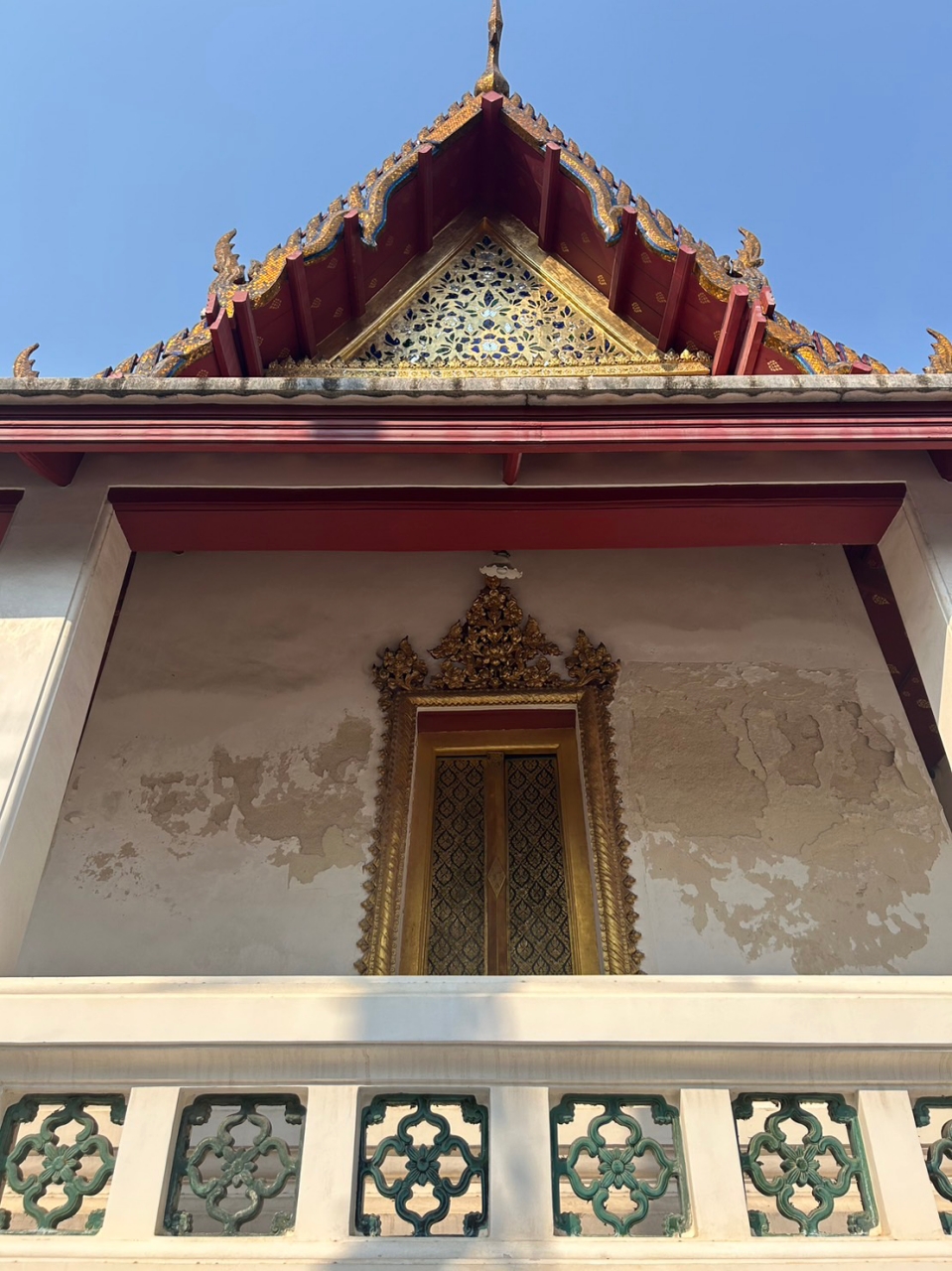
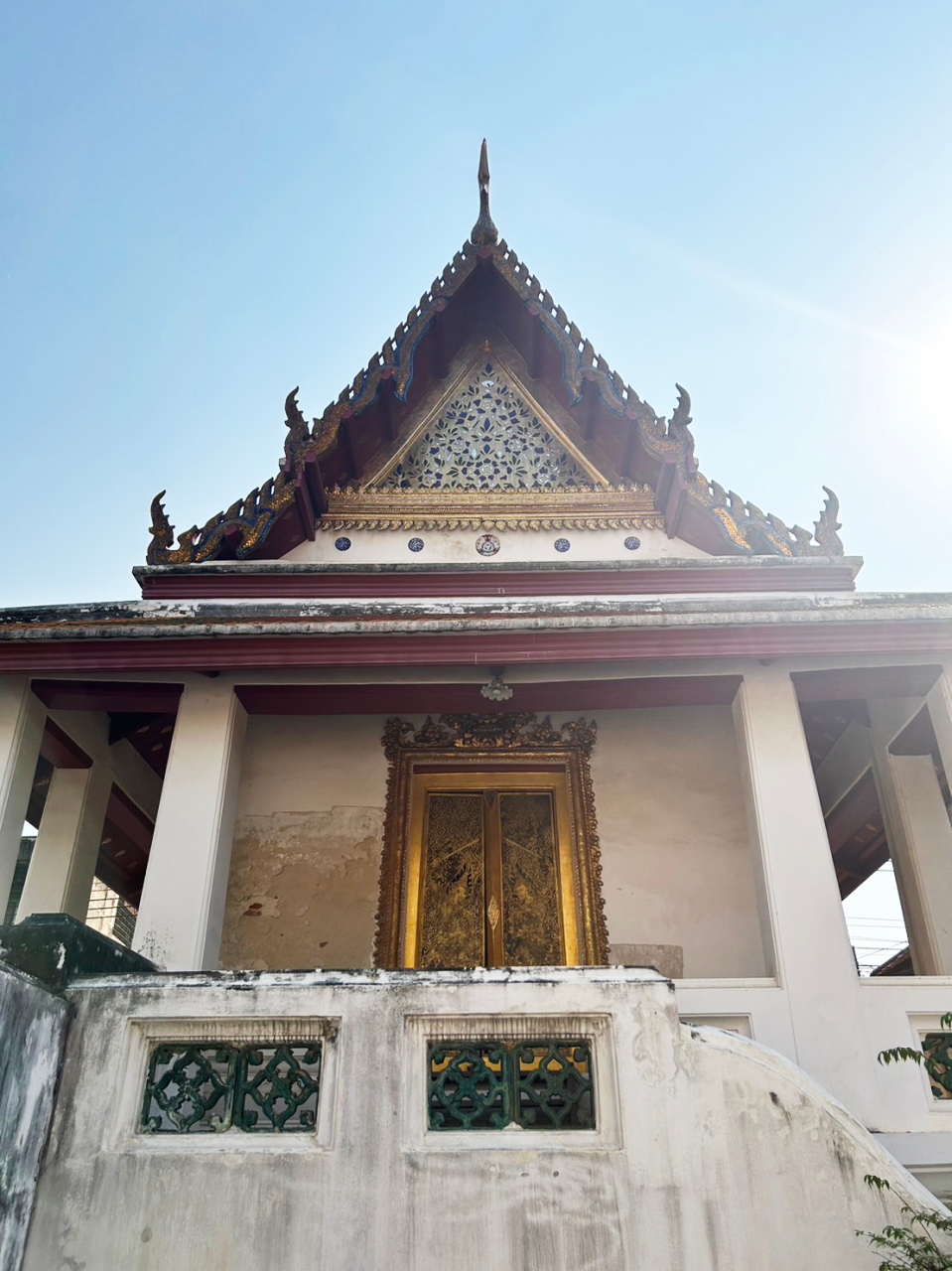
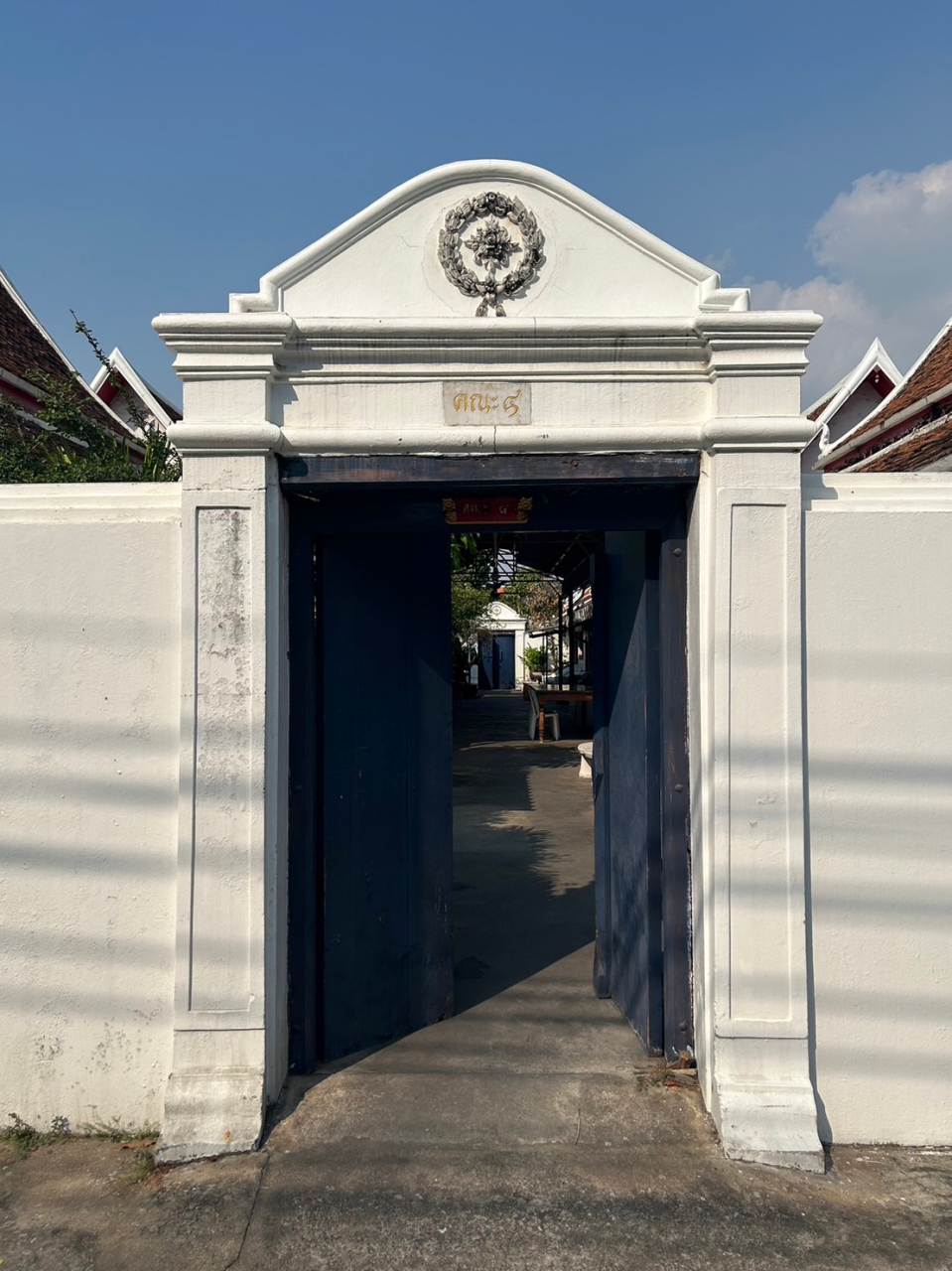
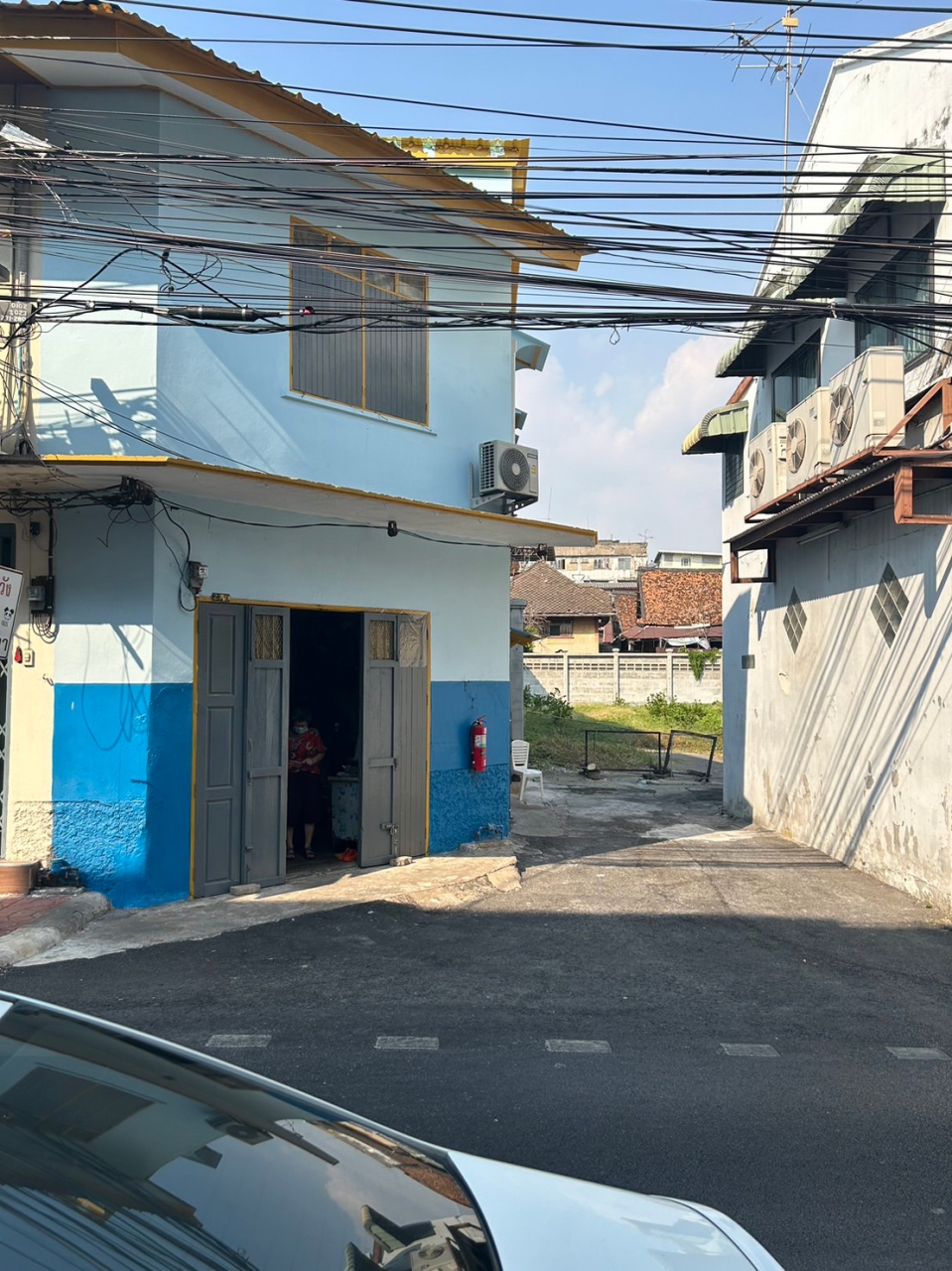
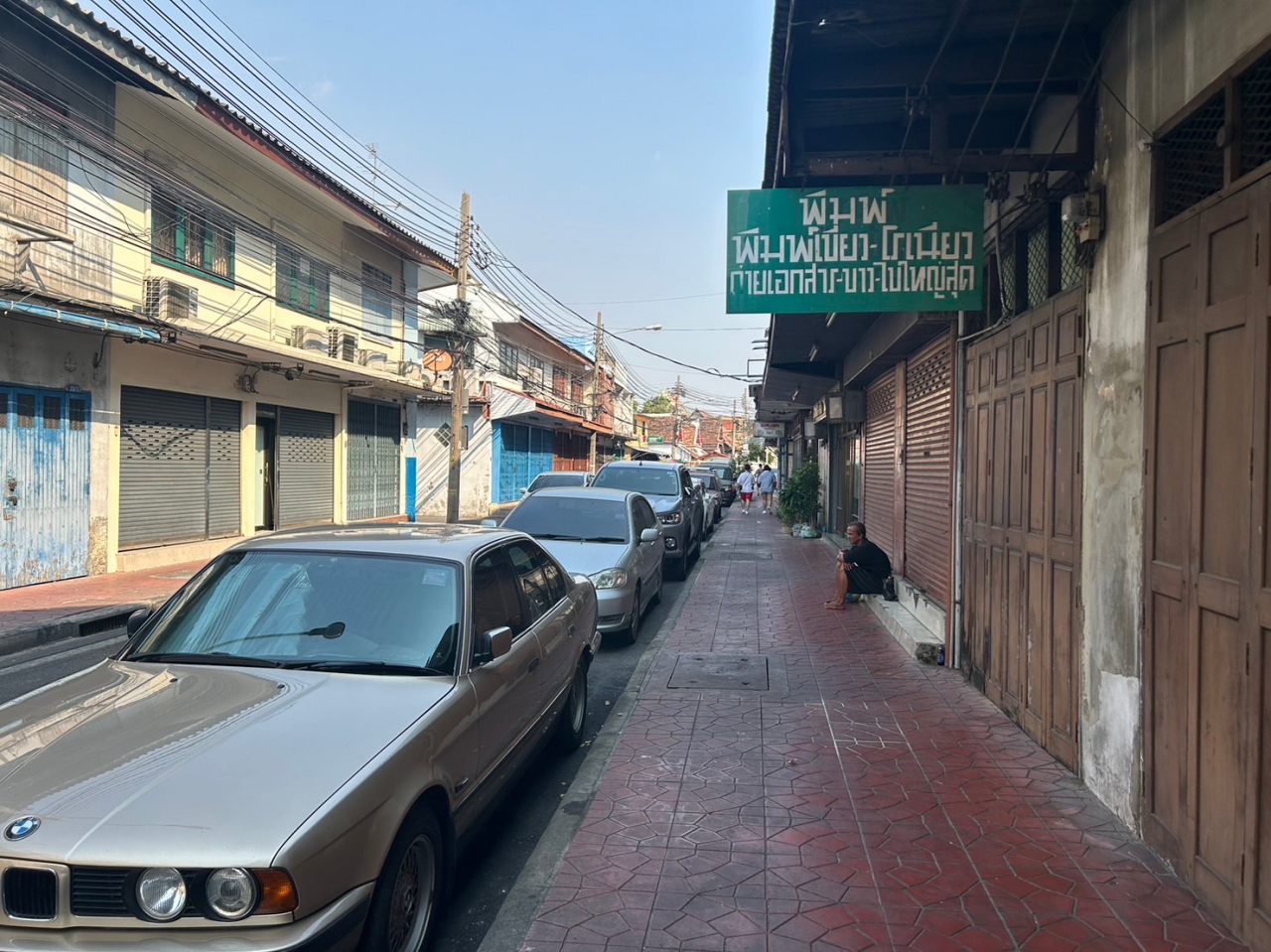
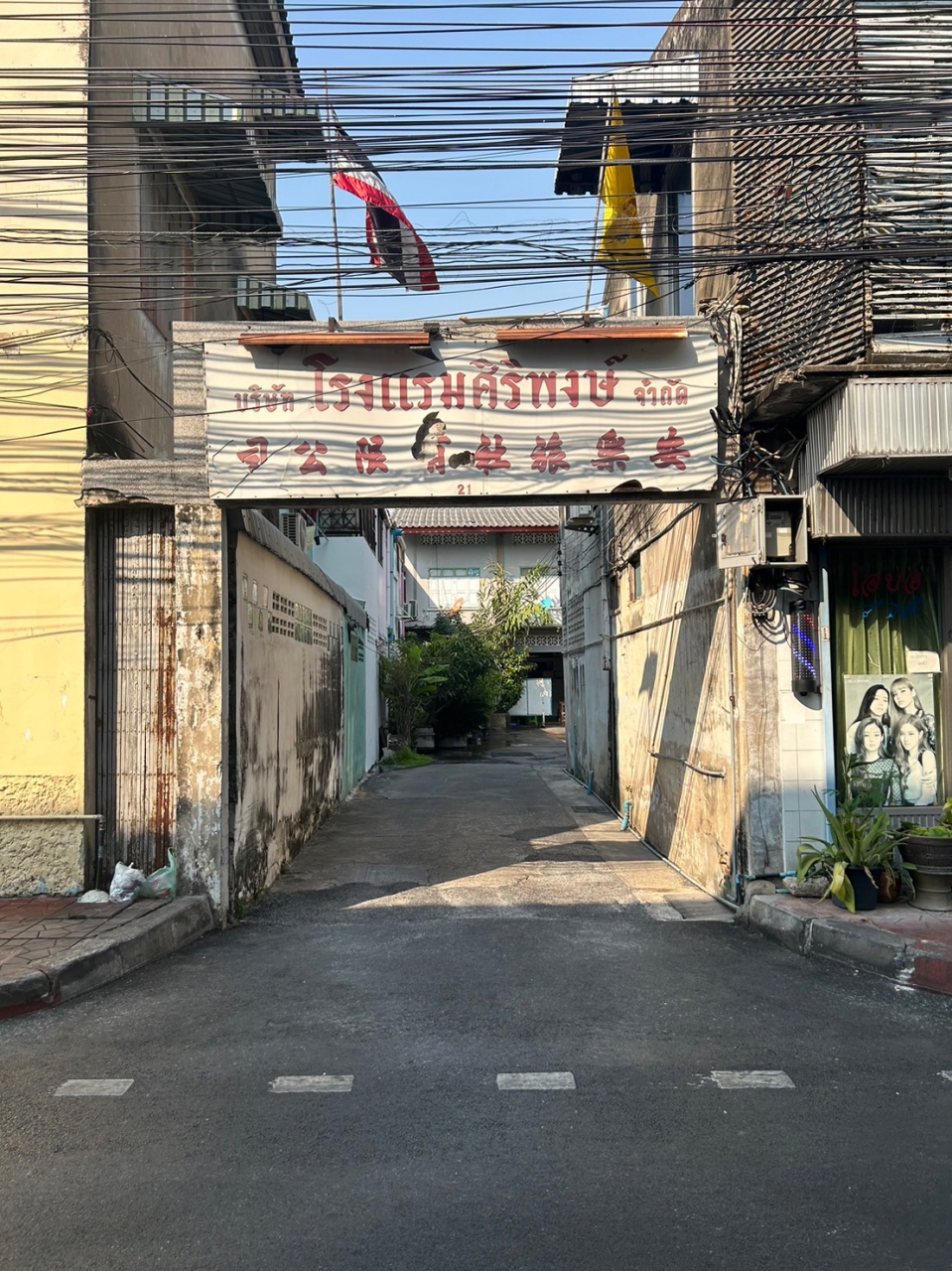


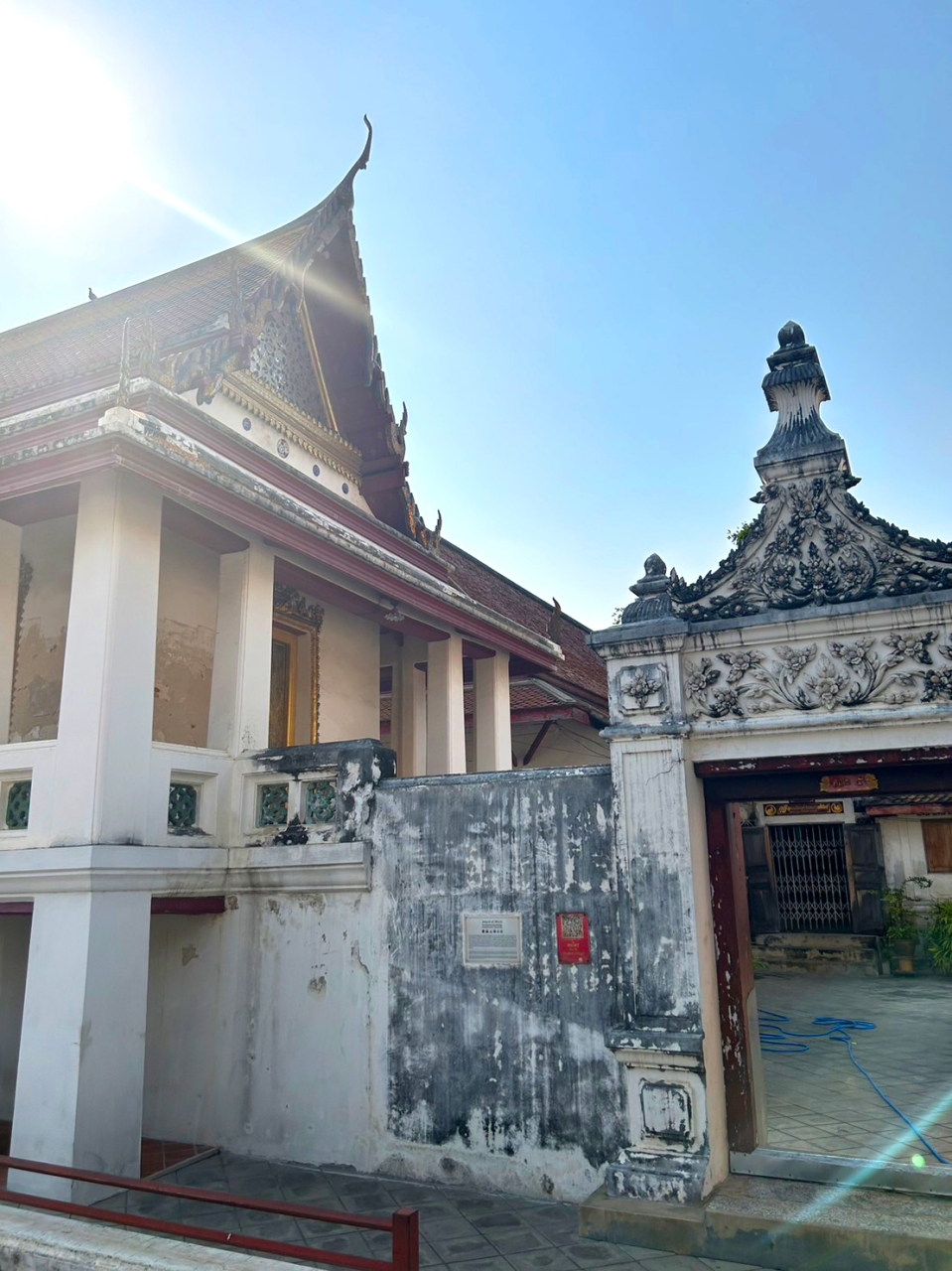
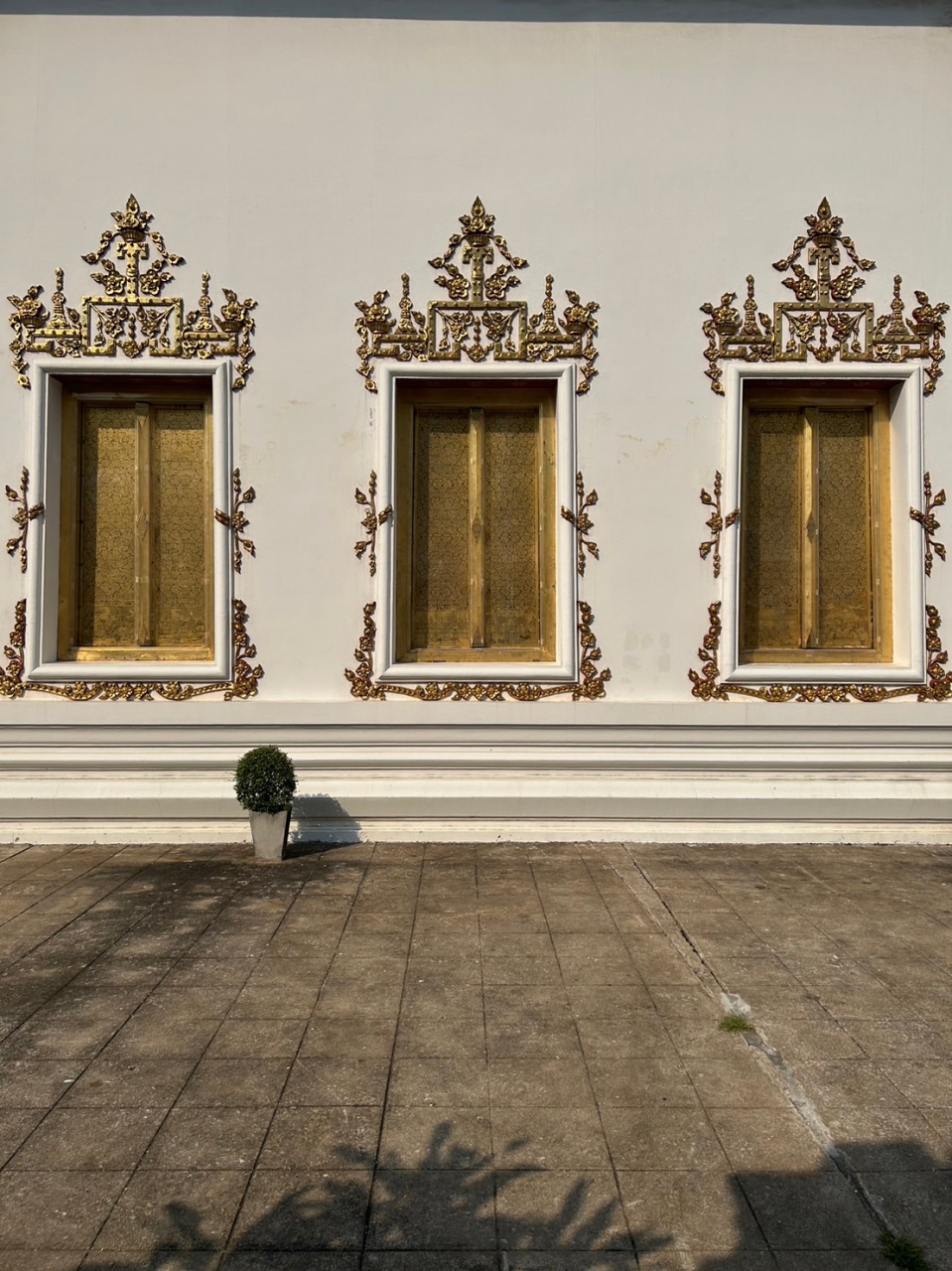
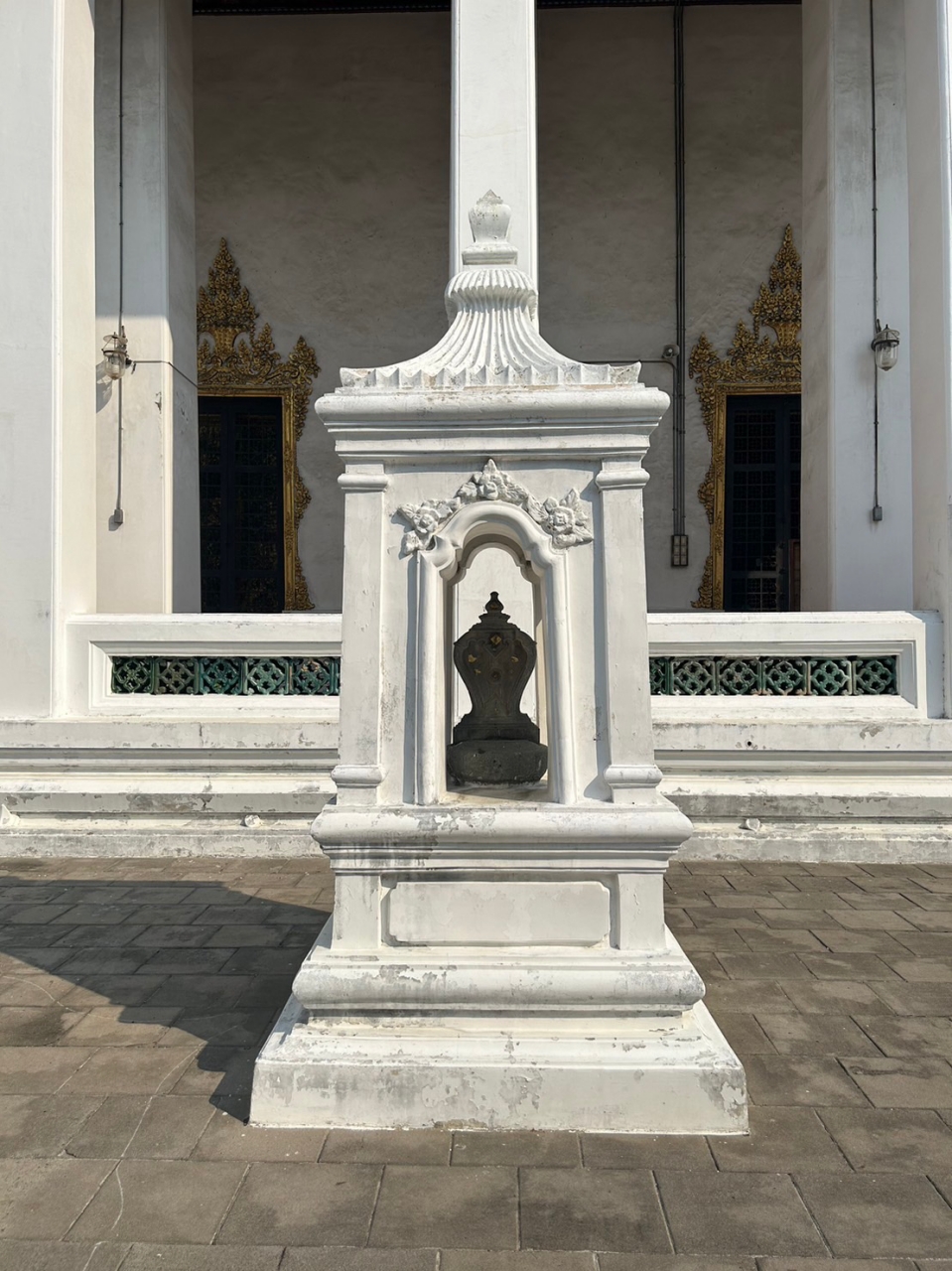
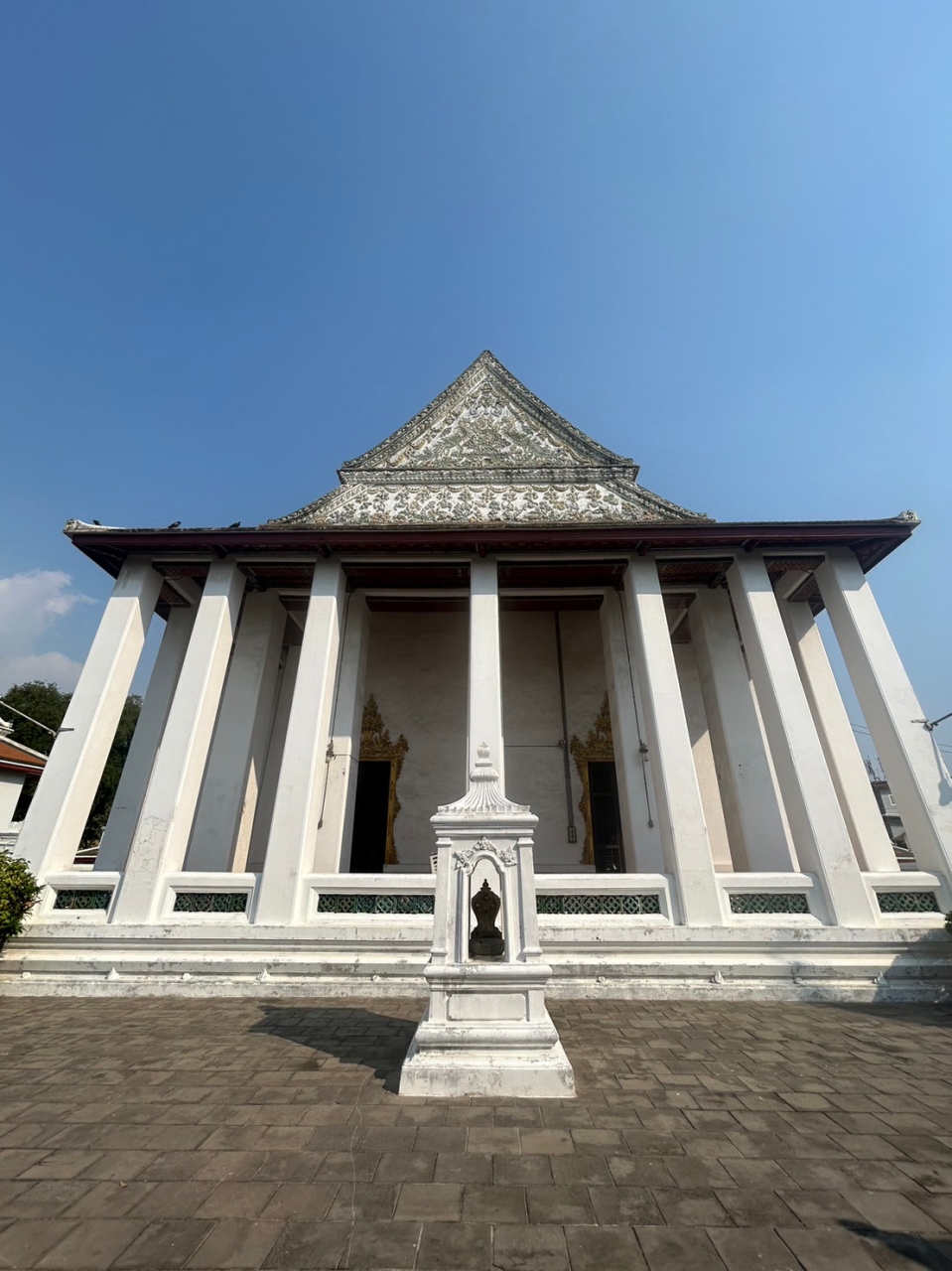


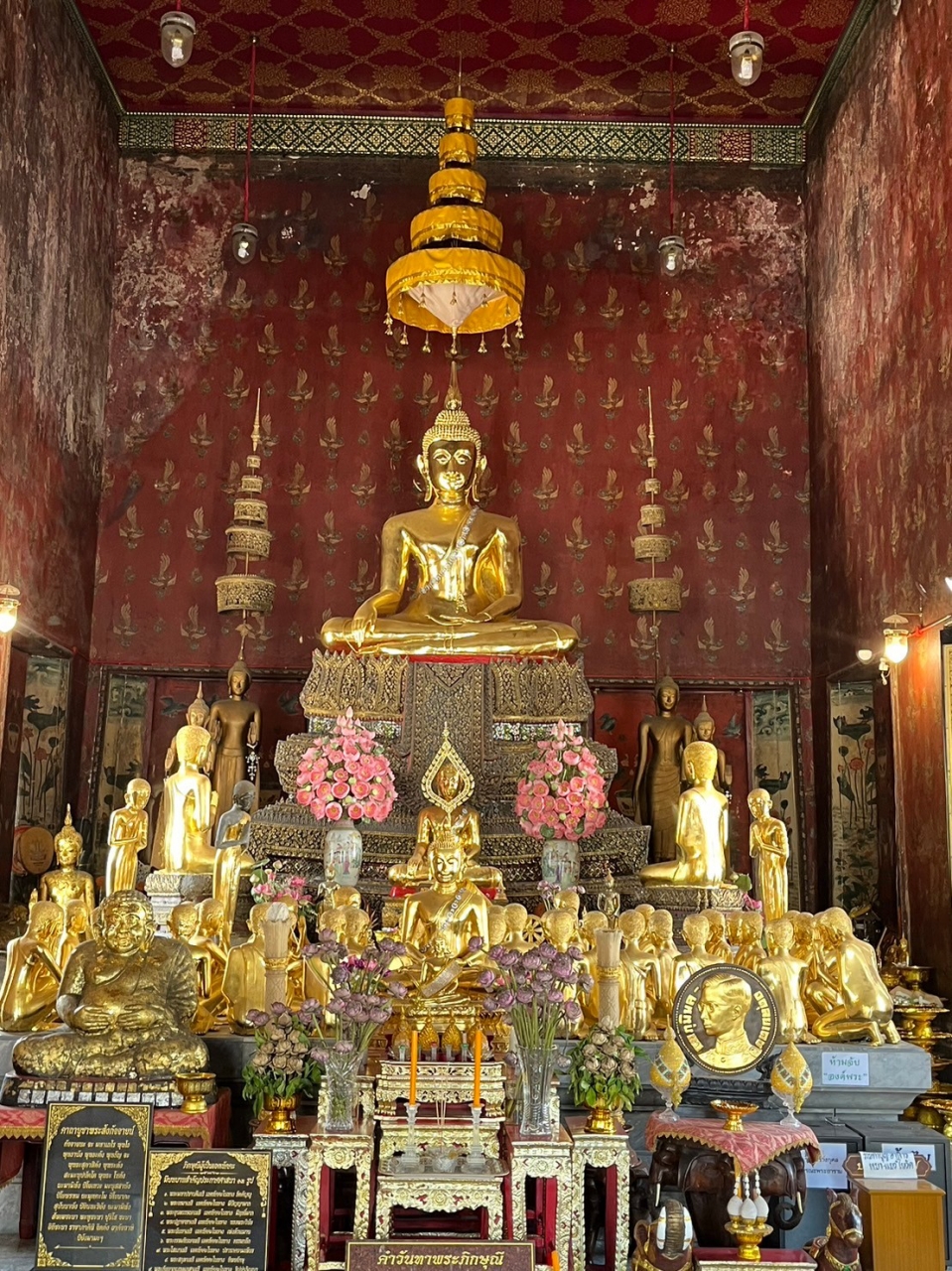


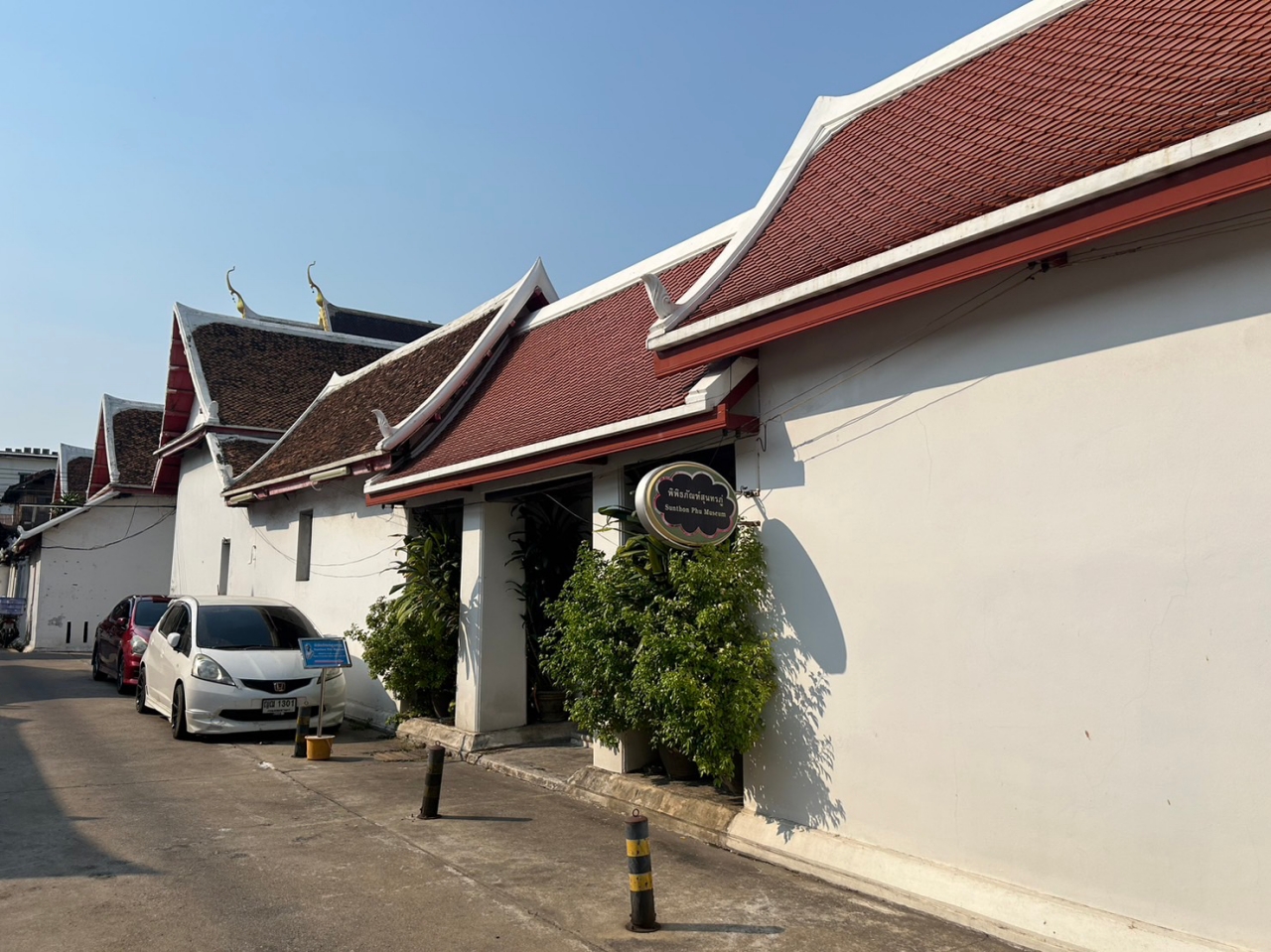
Walking Path Overview
เข้าสู่วัดเทพธิดาราม ชมงานพุทธศิลป์ของวิหารวัดเทพธิดา และเรียนรู้งานวรรณคดีของสุนทรภู่ กวีเอกแห่งสยาม ครั้งบวชอยู่นี่
Step into Wat Thepthidaram to admire the exquisite Buddhist artistry inside the temple and delve into the literary works of Sunthorn Phu, the revered poet of Siam. This is where he once took monastic vows, leaving behind a legacy of wisdom and creativity.

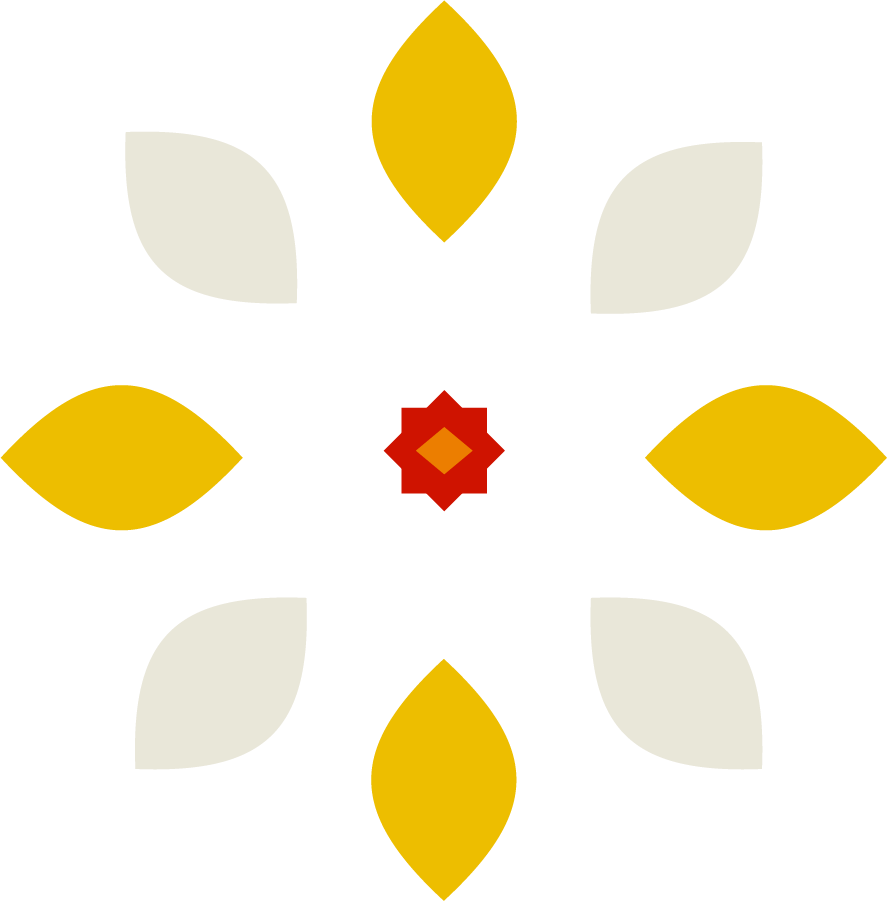
สงบเย็น พักกายกับงานพุทธศิลป์ในโบสถ์ และกลอนไพเราะของกวีเอก
Tranquility with Buddhist art and wonderful poetry of the famous artist
ด้านหลังซุ้มประตูเล็กสีขาว คือวัดเทพธิดาราม ที่เป็นหนึ่งใน 3 วัด ที่พระเจ้าอยู่หัวรัชกาลที่ 3 ทรงสร้าง แต่เดิมเรียกวัดพระยาไกร โดยทรงพระกรุณาโปรดให้ พระองค์เจ้าชายลดาวัลย์ เป็นแม่กองสร้างวัดแห่งนี้ ในปี พ.ศ. 2379 มาแล้วเสร็จในปี พ.ศ. 2382 และเสด็จพระราชดําเนินมาผูกพัทธสีมา และพระราชทานนามวัดนี้ว่า วัดเทพธิดาราม เพื่อเฉลิมพระเกียรติแก่ พระเจ้าบรมวงศ์เธอ กรมหมื่นอัปสรสุดาเทพ (พระองค์เจ้าหญิงวิลาส) พระธิดาพระองค์ใหญ่
The small white gate at the back is the entrance to Wat Thepthidaram, one of the three temples commissioned by King Rama III. Originally known as Wat Phraya Krai, it was graciously commissioned by Prince Daduangwan, who served as the chief builder. Construction commenced in 2379 B.E. and was completed in 2382 B.E., and the king personally came to the opening ceremony. The temple was named Wat Thepthidaram in honor of Her Royal Highness Princess Wilas, the eldest daughter of Prince Damrong Rajanubhab.
ภายในวัดมีสถานที่สําคัญ ที่เราแนะนําให้ชม 3 จุด คือ หอไตรวัดเทพธิดาราม วิหารภิษุณี และกุฏิสุนทรภู่
หอพระไตรปิฎก คืออาคาร ซึ่งใช้เป็นที่เก็บคัมภีร์พระไตรปิฎก หรือหนังสือพระธรรมคัมภีร์ ในทางพระพุทธศาสนา หอพระไตรปิฎกจึงมีสถานะเท่ากับเป็นหอสมุดของวัด เดิมหอไตรหลังนี้ถูกทิ้งร้างอยู่ในสภาพชํารุดทรุดโทรม เนื่องจากไม่ได้มีการใช้งานมานาน ต่อมาในปี พ.ศ. 2551 ทางสมาคมสถาปนิกสยามในพระบรมราชูปถัมภ์ได้ให้การช่วยเหลือทั้งกําลังทรัพย์และกําลังอาสาสมัครในการบูรณะปฏิสังขรณ์ โดยองค์การยูเนสโกภาคพื้นเอเชียแปซิฟิคได้มอบรางวัลด้านการอนุรักษ์ดีเด่นให้กับโครงการอนุรักษ์หอพระไตรปิฎกวัดเทพธิดาราม ในปี พ.ศ. 2554
Inside the temple, there are three notable places we recommend exploring: The Tripitaka Hall, the Phisunee Shrine, and the Kuti Suntara Phu Building. The Tripitaka Hall is a structure used to store the Buddhist scriptures, known as the Tripitaka or the Buddhist Canon. It holds a significant status as the temple's library. This building was previously abandoned and deteriorated due to long periods of disuse. However, in 2008, the Association of Siamese Architects under Royal Patronage collaborated with UNESCO Asia-Pacific to provide both financial and volunteer support for the restoration of the scripture hall. In recognition of outstanding conservation efforts, the project received the UNESCO Asia-Pacific Heritage Awards for Cultural Heritage Conservation in 2011. Adjacent to the entrance gate we passed through is the Hall of the Tripitaka, serving as a testament to the commitment to preserving cultural and religious heritage in the heart of Bangkok.








พระวิหารวัดเทพธิดาราม ลักษณะสถาปัตยกรรม เป็นศิลปะในช่วงสมัยรัชกาลที่ 3 ซึ่งได้รับอิทธิพลจากศิลปะจีน เป็นอาคารแบบไม่มีช่อฟ้า ใบระกา ภายในพระวิหารถือเป็นไฮทไลท์ของวัด เมื่อเข้าไปจะพบลายหงส์ร่อน เป็นลายอย่างจีน บนผนังสีแดง หงส์นี้เป็นสัญลักษณ์สื่อถึงเพศหญิง เนื่องจากที่หน้าพระประธานพระวิหาร มีรูปหล่อลงรักปิดทอง หมู่ภิกษุณี จํานวน 52 องค์ อยู่ โดยมีองค์พระประธานพระภิกษุณี คือ พระนางปชาบดีโคตมีเถรี มีศักดิ์เป็นพระน้าและแม่เลี้ยงของพระพุทธเจ้าซึ่งในทางพระพุทธศาสนา พระนางมีความสําคัญ เป็นพระภิกษุณีองค์แรกและเป็นพระอรหันต์ ที่มีความสามารถด้านกรรมฐานเป็นอย่างยิ่ง ลองสังเกตุดูรูปหล่อภิกษุณีแต่ละองค์อยู่ในอิริยาบถต่างกัน มีทั้งท่านั่งปฏิบัติธรรม ฟังธรรม ฉันหมาก สูบยา ยืนไหว้ นั่งพนมมือ ถือเป็นสถานที่ 1 เดียว ในโลกที่รวบรวมองค์บูชาพระภิกษุณีในอริยาบทต่างๆ กัน ขณะที่นั่งฟังธรรมเทศนาจากพระพุทธเจ้าไว้มากที่สุด นอกจากนี้ บริเวณโดยรอบวัดมีอับเฉา หรือตุ๊กตาสลักหินจากเมืองจีน ทั้งรูปคนและสัตว์ประดับอยู่ทั่ววัด โดยที่วัดเทพธิดารามนี้เป็นวัดที่มีรูปสลักผู้หญิงในลักษณะต่าง ๆ เป็นส่วนมาก
The architecture of the Phra Vihara (Shrine) in Wat Thepthidaram reflects the artistic influence from the reign of King Rama III, heavily inspired by Chinese art. This building is characterized by its unique structure, lacking a pyramidal roof commonly found in traditional Thai temples. Inside the shrine, which serves as the main highlight of the temple, one can find exquisite details such as bas-reliefs depicting flying swans, reflecting Chinese artistic motifs, on red-painted walls. The swan, a symbol of femininity, holds significance due to the presence of the revered Phra Phuttachao, a group of 52 female Buddha images. Among them, the principal image is Phra Nang Petchaburi Kohtomineetri, who is regarded as the mother and nurturer of Lord Buddha. In Buddhist teachings, female deities, particularly Phra Nang, play a crucial role, being the first and foremost female monk with exceptional virtues. If one observes the sculptures of each Phra Phuttachao within the shrine, various postures and activities are depicted, including meditation, listening to the teachings, playing chess, smoking opium, standing in reverence, and sitting in different manners. Notably, Wat Thepthidaram stands as the sole location worldwide that gathers Buddha images of Phra Phuttachao in various poses, creating a unique congregation of devotion. Furthermore, the temple's vicinity features a unique collection of stone carvings, or 'takrut,' imported from China, depicting both human and animal figures, enhancing the spiritual ambiance. Wat Thepthidaram stands out as a temple that predominantly features sculptural representations of female figures in diverse forms.






เรื่องราวในกุฏิคณะ๗ ของวัด เคยเป็นที่จำพรรษาของสุนทรภู่กวีเอกของไทยในสมัยรัตนโกสินทร์ เคยบวชครั้งที่ 2 และมาจําพรรษาที่วัดเทพธิดาราม ราวปี พ.ศ. 2384 โดยพระองค์เจ้าหญิงวิลาสให้การอุปการะ เนื่องจากทรงอ่านผลงานเรื่องต่างๆ ของสุนทรภู่ที่ตกทอดมาจากพระองค์เจ้าลักขณานุคุณ พระอนุชา ซึ่งเคยให้การอุปการะสุนทรภู่เมื่อครั้งบวชครั้งแรก แล้วโปรดเรื่องพระอภัยมณีมาก จึงได้โปรดให้สุนทรภู่แต่งเรื่องพระอภัยมณีถวาย เดือนละ 1 เล่มสมุดไทย ขณะที่จําพรรษาที่วัดเทพธิดาราม สุนทรภู่เป็นครูสอนภาษาไทยด้วย จึงได้แต่งหนังสือฝึกอ่านเรื่องพระไชยสุริยา สําหรับให้ศิษย์ได้เล่าเรียน นอกจากนี้คงแต่งเรื่อง สิงหไกรภพต่อ เพื่อถวายกรมหมื่นอัปสรสุดาเทพ อีกเรื่องหนึ่งด้วย
The story in Monk residence No. 7 inside Thepthidaram temple was once the residence for the monk-poet Sunthorn Phu, Thailand's national poet during the reign of King Rama III. Sunthorn Phu ordained for the second time and observed his monastic retreat at Wat Thepthidaram around the year 2384 B.E. On this occasion, Princess Wilas, who read Sunthorn Phu's various literary works inherited from her mother Princess Laksmi, provided support and appreciation. Princess Laksmi had previously supported Sunthorn Phu during his first ordination and was particularly pleased with the poet's work, 'Phra Aphai Mani,' so she requested Sunthorn Phu to compose a literary work of Phra Aphai Mani and presenting her one book each month. During his retreat at Wat Thepthidaram, Sunthorn Phu also taught the Thai language and composed a reading practice book about the adventures of Phra Chai Suriya. Additionally, he wrote another work titled 'Singha Krai Phop,' dedicated to Princess Wilas and in homage to Her Royal Highness, Princess Upsornsudathep.



Contributed by
CODE STUDIO
โค้ดสตูดิโอ หรือ cultural Oriented design studio คือสตูดิโอออกแบบที่มุ่งเน้นการนําเรื่องราวทางวัฒนธรรมมาต่อยอดด้วยกระบวนการสร้างสรรค์ เพื่อสร้างงานออกแบบที่มีความสวยงาม บอกเล่าเรื่องราว และมีเอกลักษณ์โดดเด่นเฉพาะตัว พร้อมส่งมอบความภาคภูมิใจไปสู่คนรุ่นถัดไป
Studio Code or Cultural Oriented Design Studio is a design studio that focuses on integrating cultural narratives through a creative process to enhance and extend stories from different cultures. The goal is to craft designs that are aesthetically pleasing, narratively rich, and possess a distinctive identity, all while delivering a sense of pride to be passed on to the next generations.
Samranrat Intersection
แยกแห่งย่านต่างยุค ผสมผสานร้านค้าเก่าแก่และร้านสมัยใหม่ ในขอบเขตกําแพงเมืองเก่า
The intersection of food and culture, a boundary of the historical urban fabric


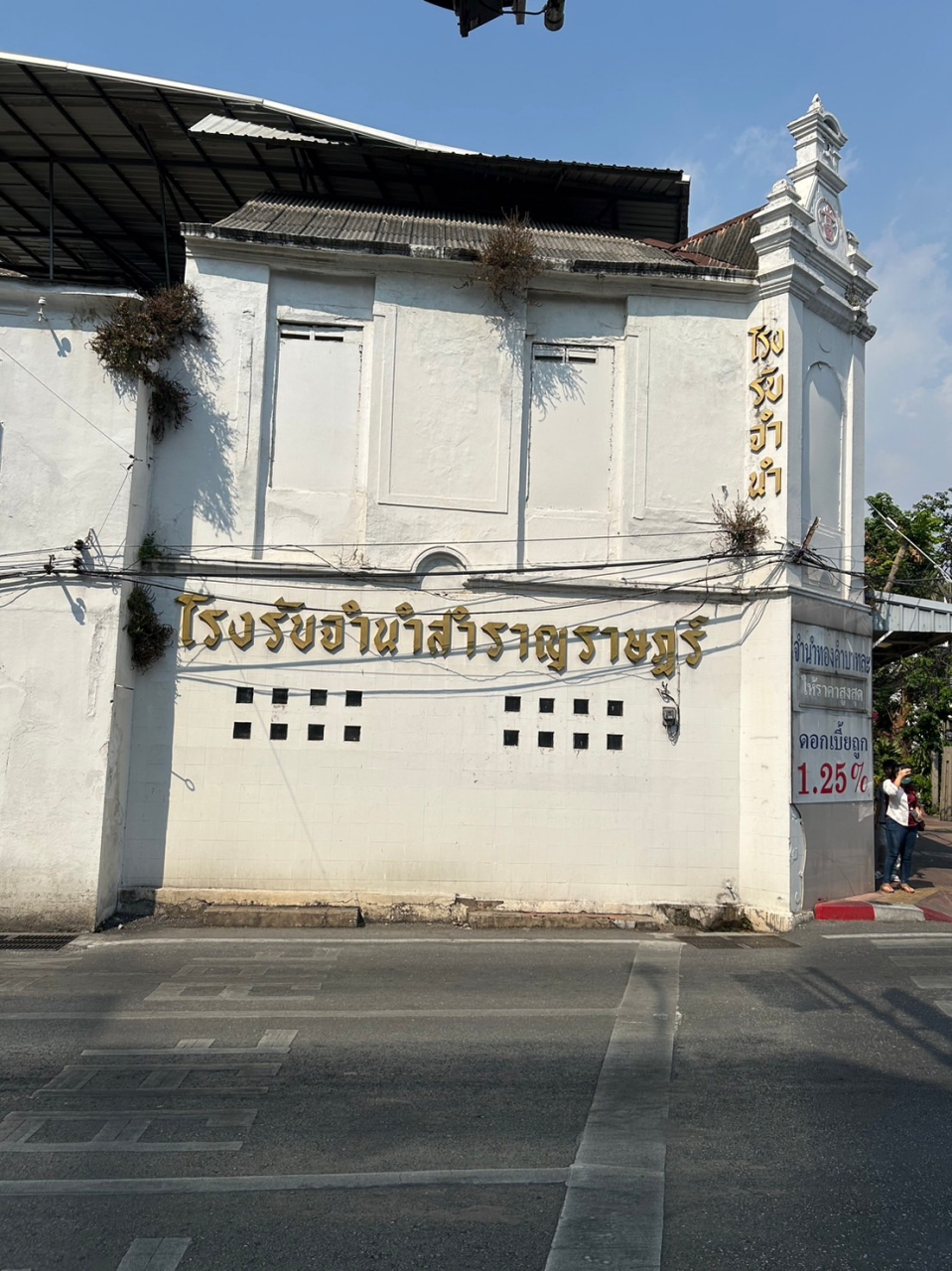
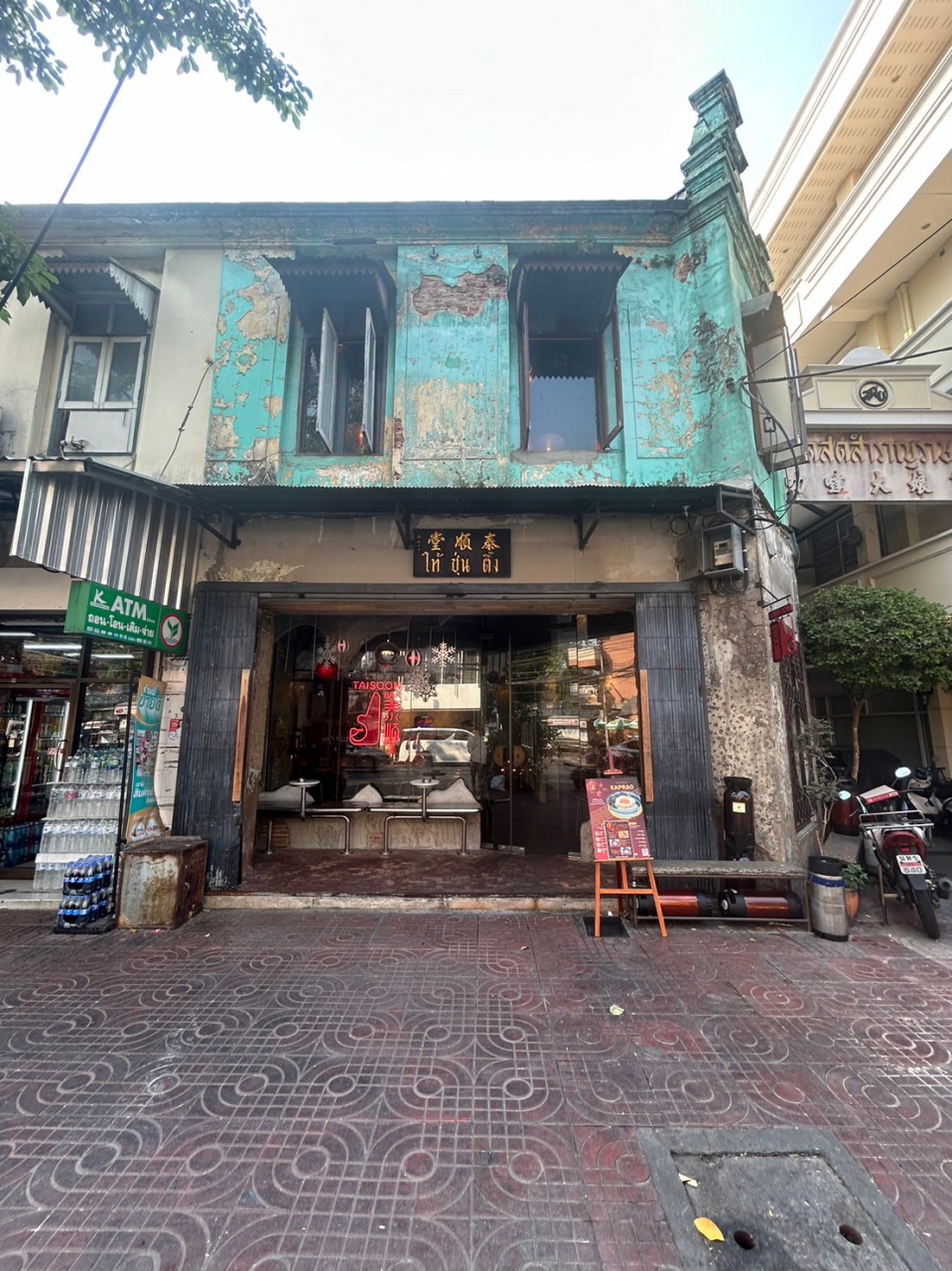
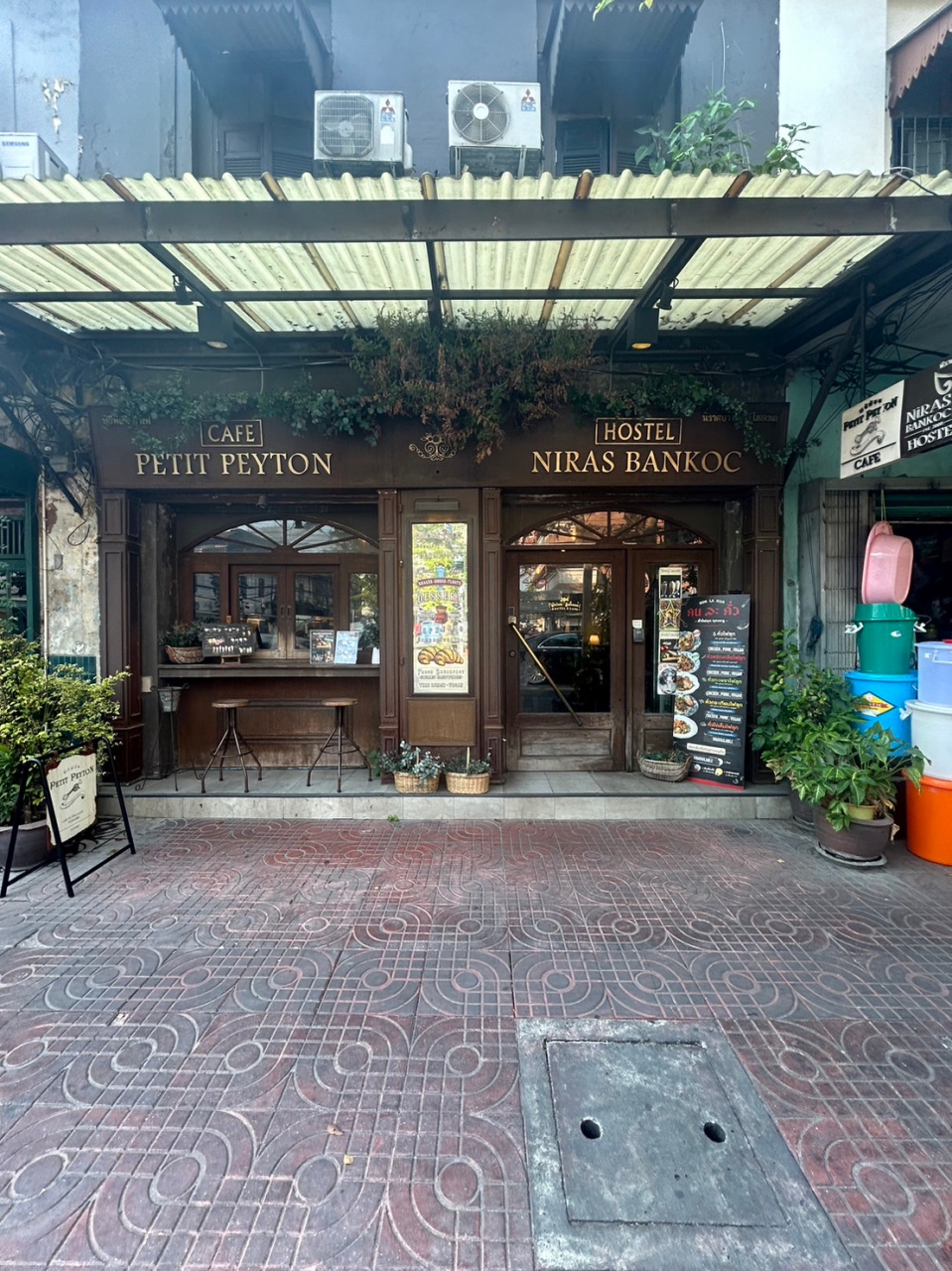

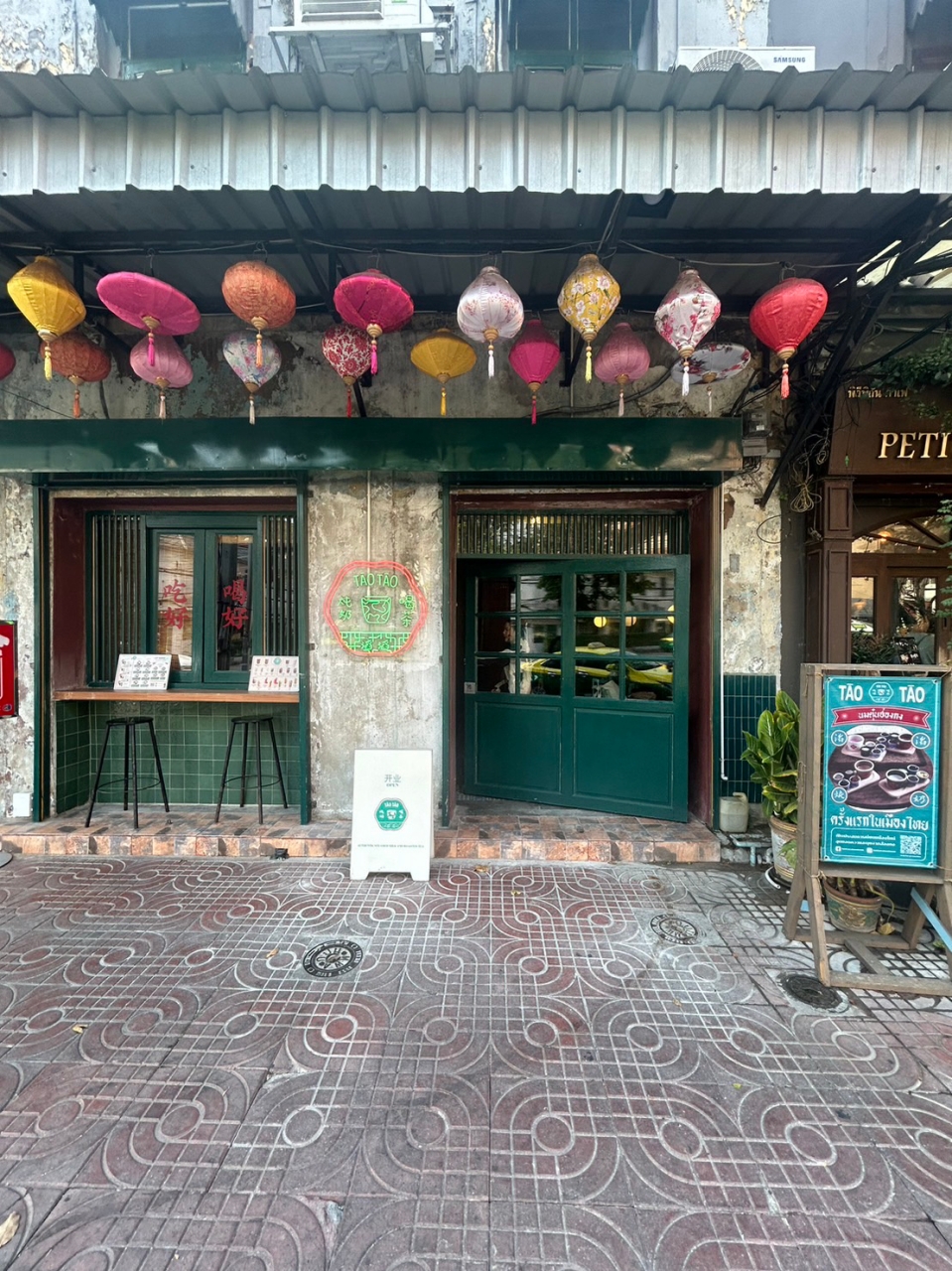

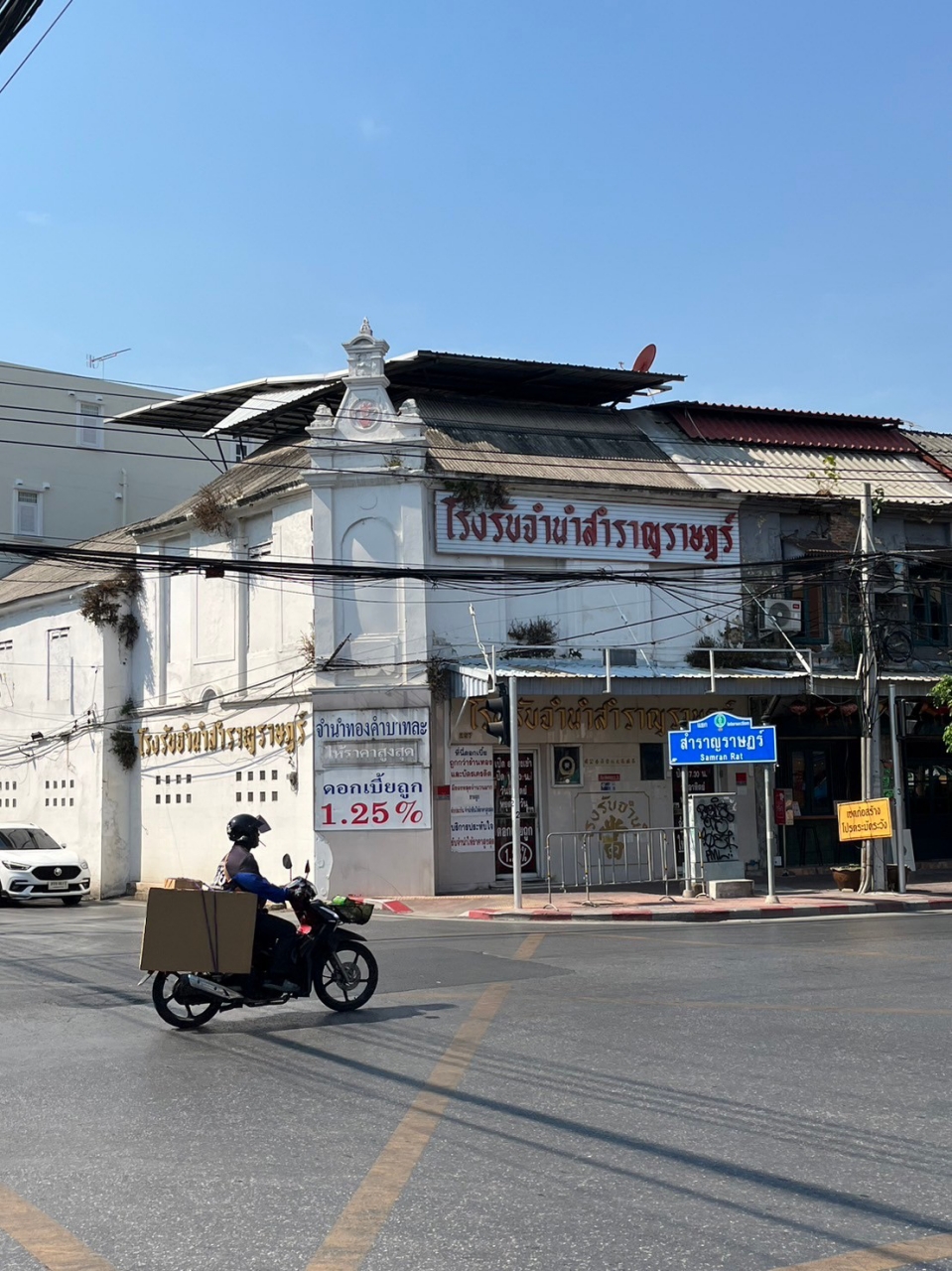
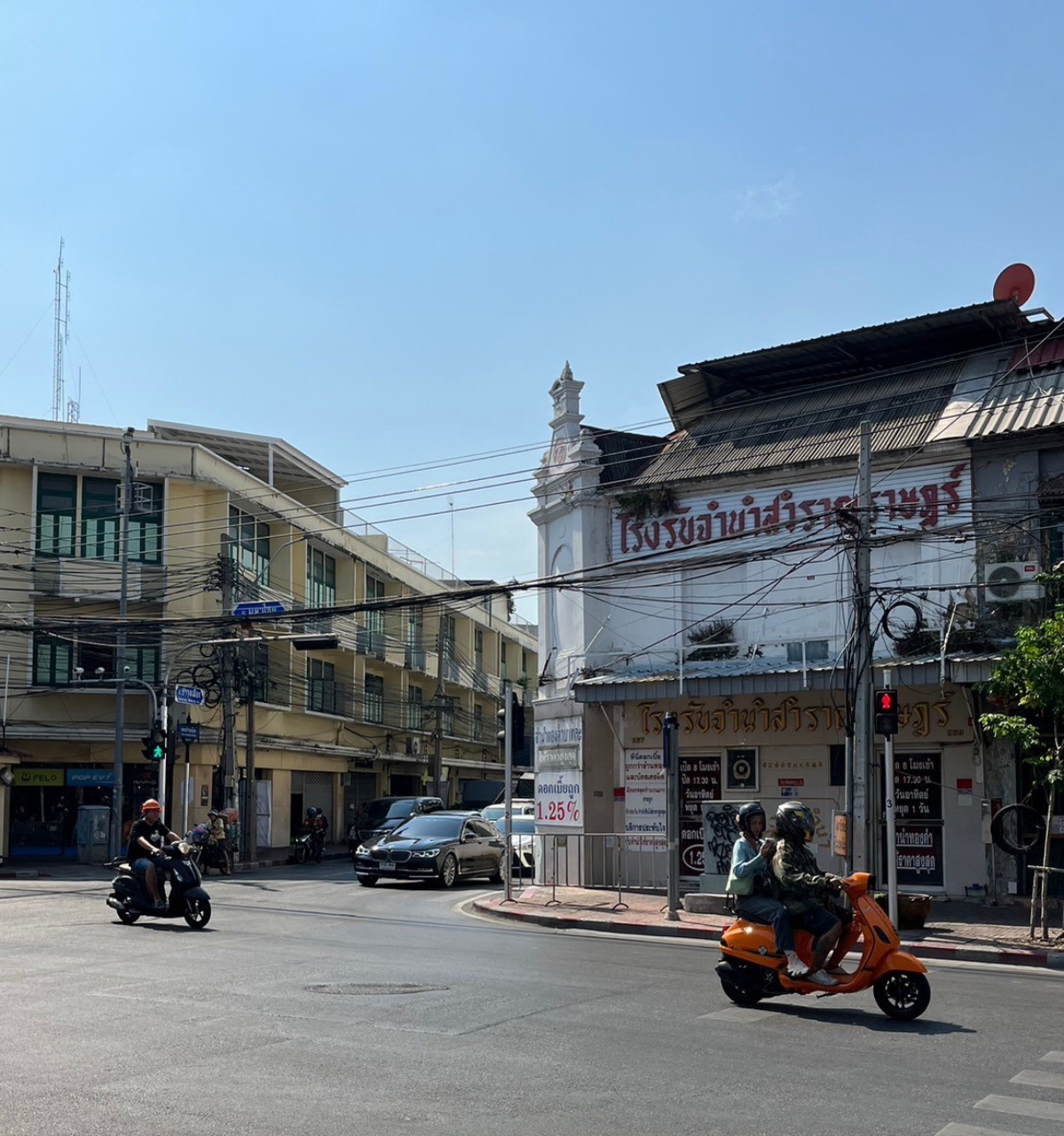
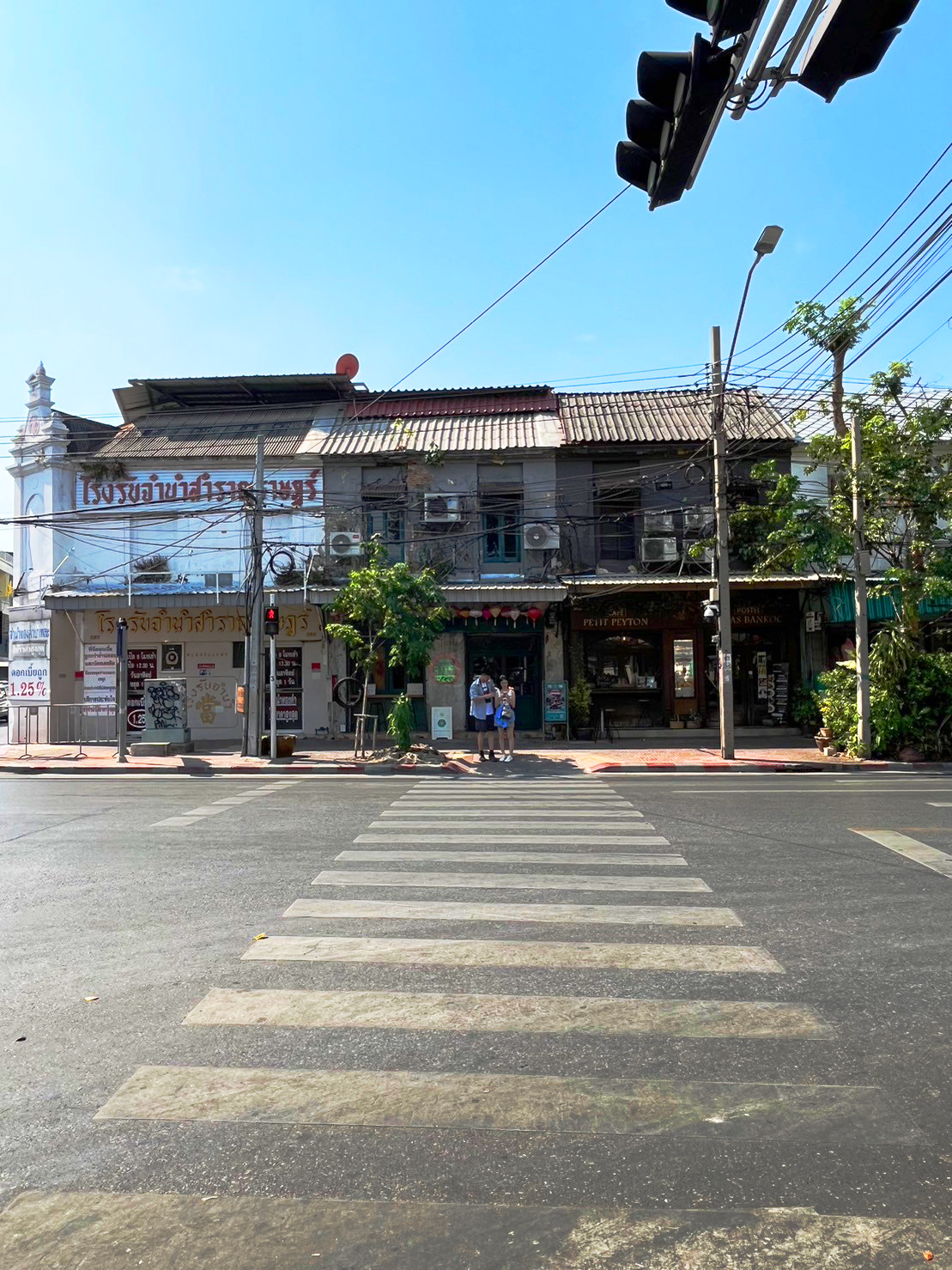
Walking Path Overview
เดินผ่านร้านค้าในชุมชนเข้าสู่ถนนมาหไชย พบกับย่านอาหารอร่อย โรงรับจำนำ รับรู้เรื่องราวของประตูเมืองเก่าในอดีต
Strolling through the shops in the community, entering into MahaChai Road, you'll discover a delicious food district, pawnshops, and learn the stories of the old city gates in the past.

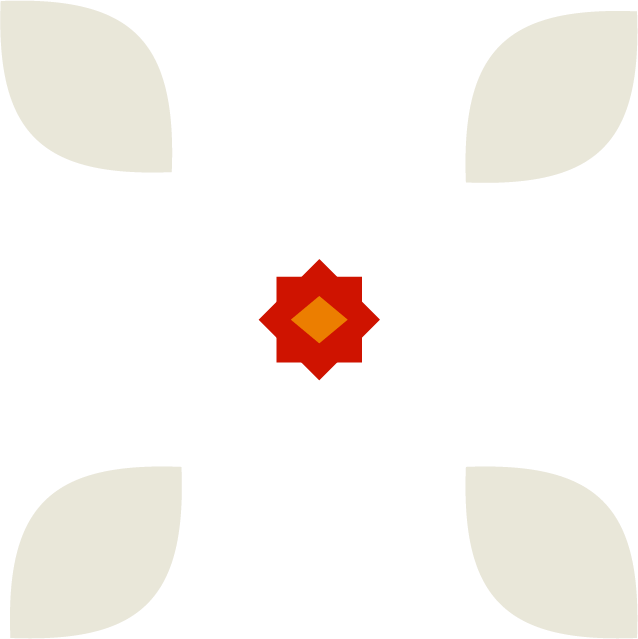
จากประตูแห่งความทุกข์ สู่แยกแห่งความ "สำราญ" ราษฎร์
From the gate of misery to a Delightful intersection of Samranrat
ไม่ค่อยมีคนรู้ที่มาของสี่แยกแห่งนี้ ว่าเดิมเป็นประตูของเมืองเก่า หากว่าคนจะเรียกกันอยู่ในชื่อของ "ประตูผี" ใบ้ว่าเนื่องจากการสัญจรเข้าออกประตูนี้เป็นทางที่คนใช้สำหรับงานอวมงคล แต่เมื่อมีการขยายเมืองและรื้อประตูเมืองและกำแพงลง ทำให้ที่นี่กลายเป็นย่านอยู่อาศัยและของกินที่อร่อยไม่แพ้แถวถนนดินสอเลยทีเดียว
Not many people know the origin of this intersection, which used to be one of the old city gates. If locals refer to it, they might call it the "Ghost Gate" because it was traditionally used for ritualistic purposes. However, with the expansion and demolition of the city gates and walls, this area has transformed into a residential neighborhood and a hub for delicious food, comparable to the famous Dinso Road.
ชื่อว่า "ประตูผี" ก็มีที่มาจากแต่ก่อนคนกรุงเทพเขาไม่เผาศพในเขตกําแพงเมือง จะมีก็แต่พระมหากษัตริย์ และพระบรมวงศานุวงศ์เท่านั้นที่สามารถออกเมรุเผาที่ทุ่งพระเมรุท้องสนามหลวงได้ ราษฎรทั่วไปจะต้องเผาวัดนอกกําแพงเมือง คุณเคยได้ยินวลีที่ว่า แร้งวัดสระเกศ เปรตวัดสุทัศมั้ย เรื่องราวนั้นมีที่มาเดียวคือ ในสมัยรัชกาลที่ 2 เกิดโรคห่าระบาดอย่างหนักในกรุงเทพ ว่ากันว่ามีคนตายประมาณ 30000 คน ศพเผาไม่ทัน และในสมัยรัชกาลที่ 4 ก็เกิดโรคอหิวาตกโรคขึ้นอีก ตายกันเกิน 40000 คน ชาวบ้านหวาดกลัวหนีออกจากเมือง ศพถูกขนออกนอกกําแพงเมืองไปไว้ที่วัดสระเกศ สมัยนั้นมีนกแร้งบินลงมาจิกกินซากศพเป็นที่หน้าหวาดกลัวของกรุงเทพ แถบนี้จึงได้ชื่อว่าประตูผี คือประตูที่ขนร่างไร้วิญญาณออกไปไว้ที่วัดนอกเมือง ในสมัยจอมพล ป. ทางการจึงเปลี่ยนชื่อย่านนี้ใหม่ เป็นสําราญราษฎร์ ประกอบกับการที่มีโรงหนังศาลาเฉลิมไทยมาตั้งที่เชิงสะพานผ่านฟ้า ทําให้ย่านนี้คึกคักขึ้นมา และมีร้านอาหารรอบดึกชื่อดังเกิดขึ้นบริเวณนี้จํานวนมาก ร้านข้าวต้มเป็ดที่เดินออกมาเมื่อกี้ก็เคยอยู่ที่แยกนี้มาก่อน
The name "ประตูผี" (Ghost Gate) has its origins in the past when people in Bangkok did not cremate bodies within the city walls. Only kings and royal family members were allowed to cremate at the field in front of Sanam Luang. Commoners had to cremate bodies at temples outside the city walls. You might have heard the phrase "แร้งวัดสระเกศ เปรตวัดสุทัศมั้ย" (Do you fear Wat Sa Ket or do you fear Wat Suthat?). This saying comes from the time of the second reign when a severe cholera outbreak occurred in Bangkok, claiming around 30,000 lives. The bodies couldn't be cremated in time. In the fourth reign, another epidemic, probably cholera again, resulted in more than 40,000 deaths. Villagers were scared and fled the city. The bodies were transported outside the city walls and placed at Wat Sa Ket, where vultures swooped down to eat the corpses, creating a fearful image for Bangkok residents. Hence, the area got the name "ประตูผี" (Ghost Gate), as it was the gate where lifeless bodies were taken out to be placed at the temple. During the time of Field Marshal Plaek Pibulsongkram, the area was renamed to Saranrom Ratchawong, aligning with the establishment of the Sala Chalerm Thai Pavilion over the elevated walkway. This transformation led to the area becoming vibrant, with many renowned night dining places. The famous duck noodle shop that moved here recently used to be located at this intersection.
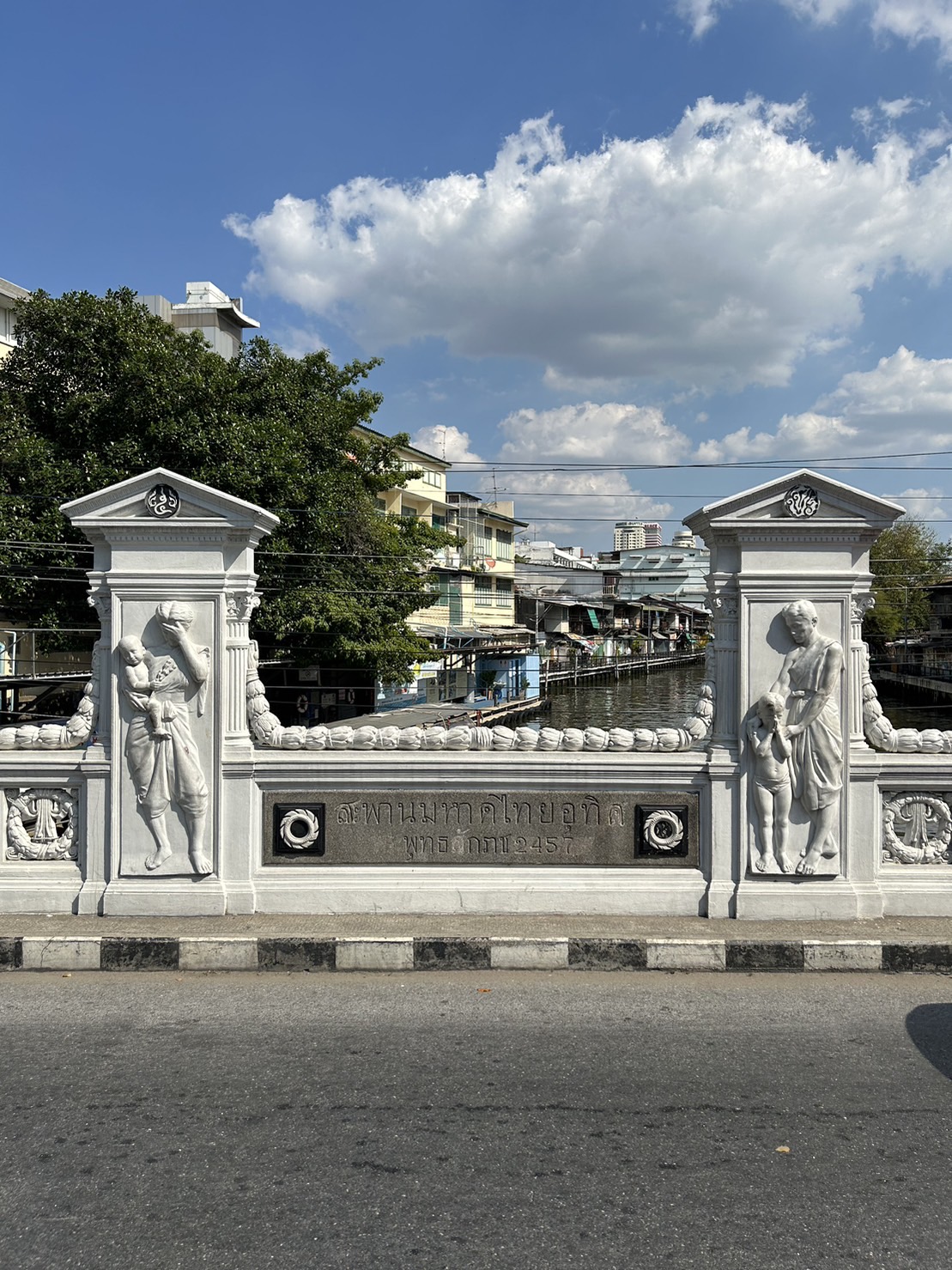
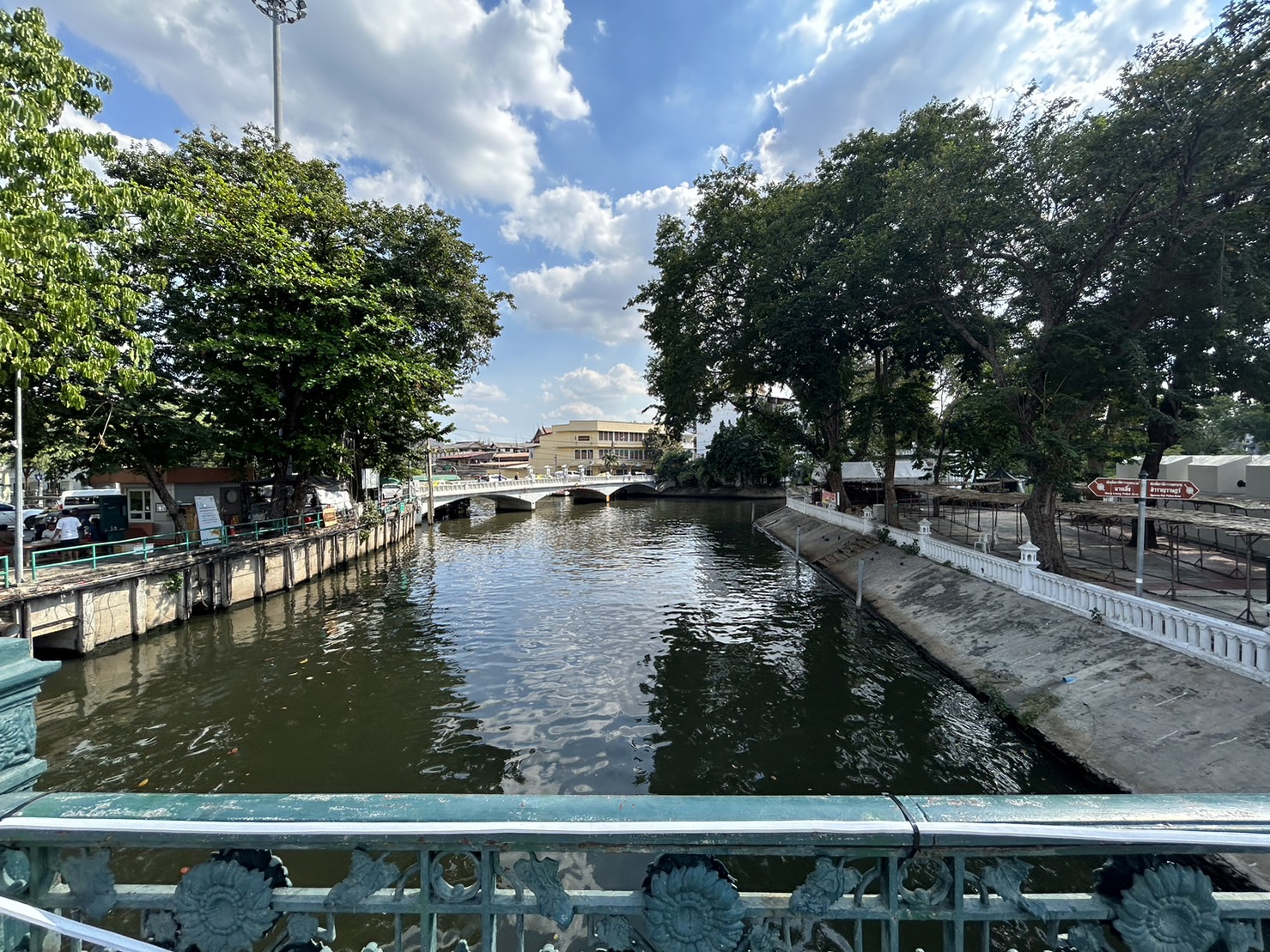
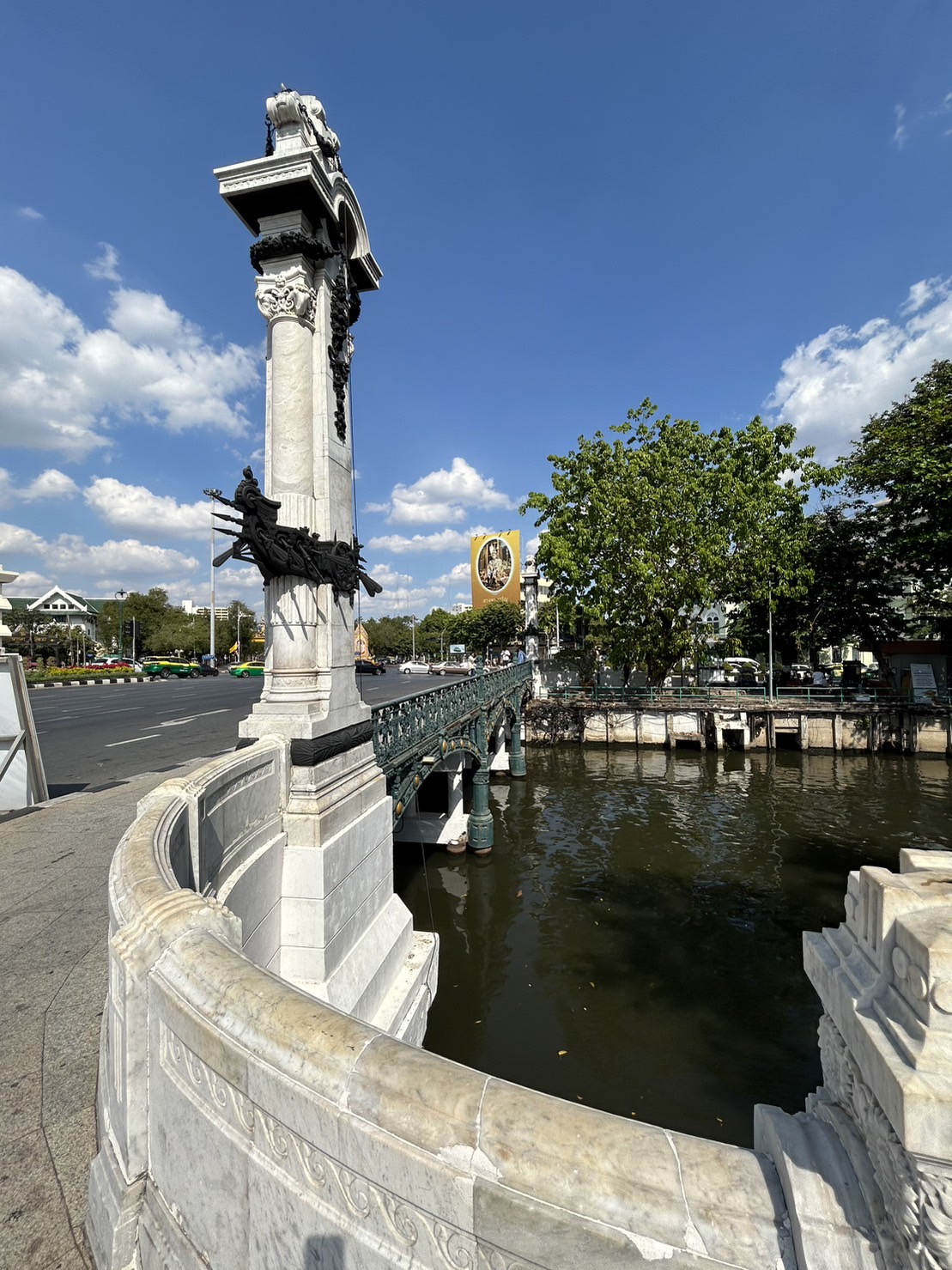

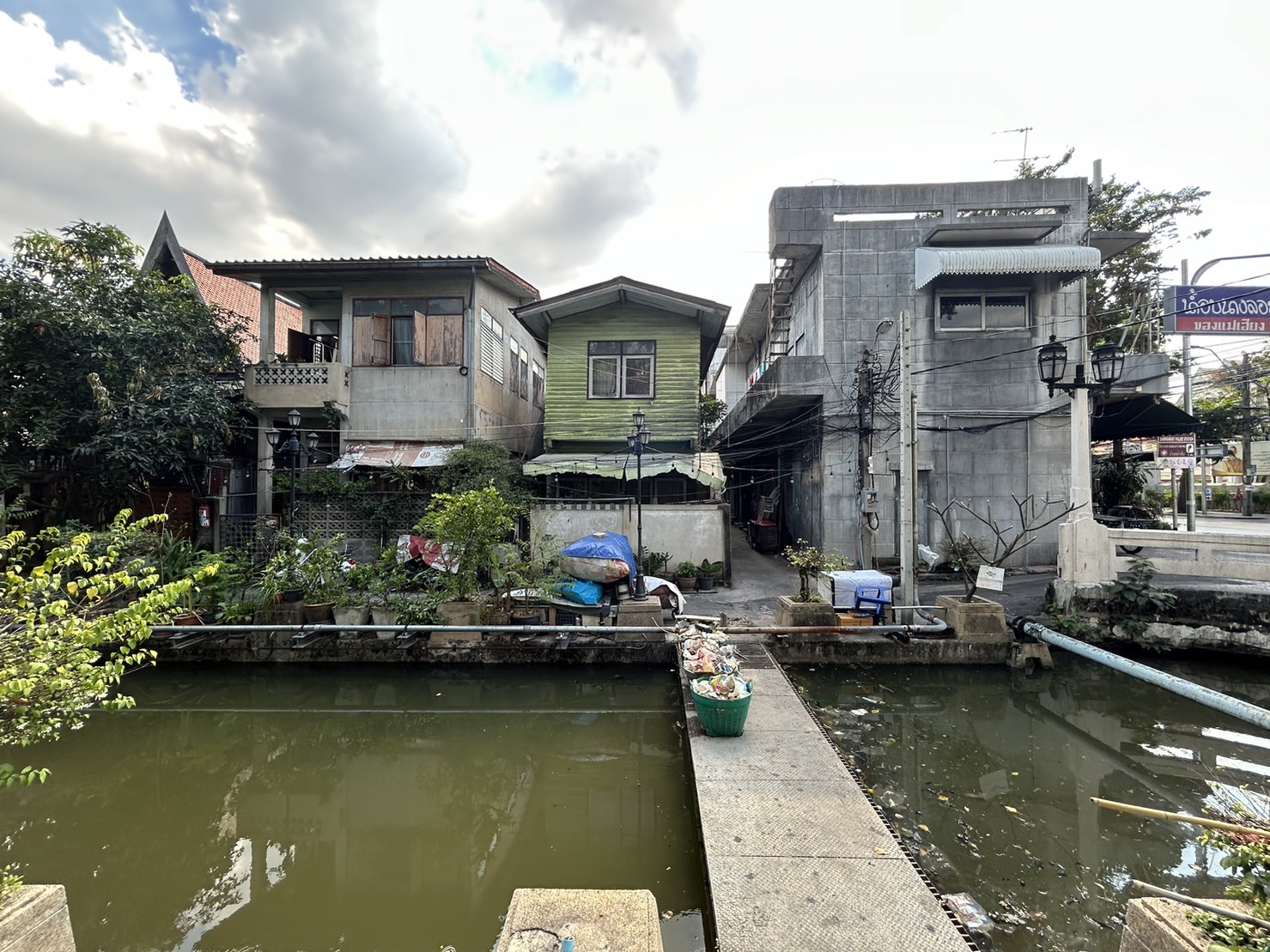
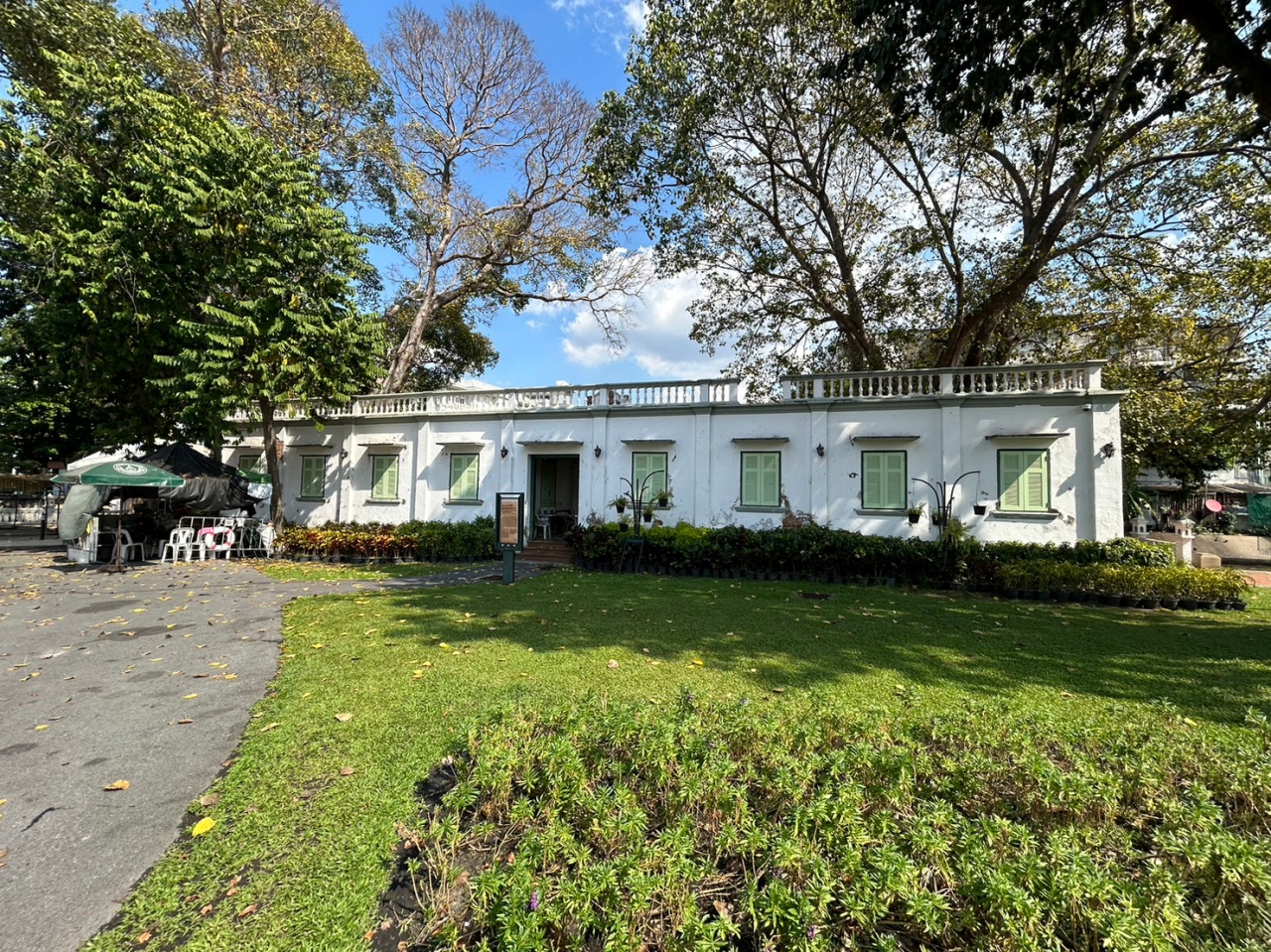
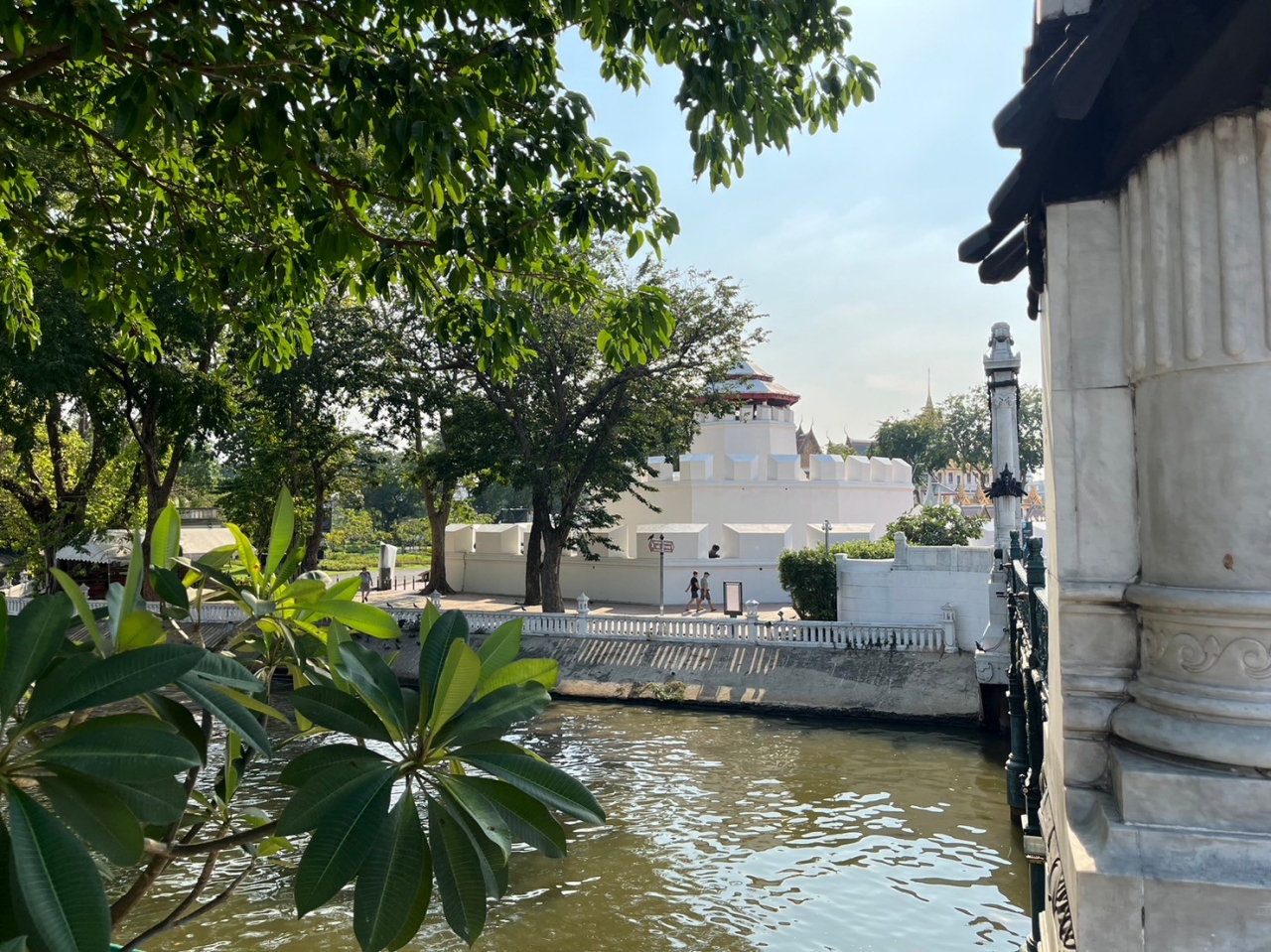
Contributed by
CODE STUDIO
โค้ดสตูดิโอ หรือ cultural Oriented design studio คือสตูดิโอออกแบบที่มุ่งเน้นการนําเรื่องราวทางวัฒนธรรมมาต่อยอดด้วยกระบวนการสร้างสรรค์ เพื่อสร้างงานออกแบบที่มีความสวยงาม บอกเล่าเรื่องราว และมีเอกลักษณ์โดดเด่นเฉพาะตัว พร้อมส่งมอบความภาคภูมิใจไปสู่คนรุ่นถัดไป
Studio Code or Cultural Oriented Design Studio is a design studio that focuses on integrating cultural narratives through a creative process to enhance and extend stories from different cultures. The goal is to craft designs that are aesthetically pleasing, narratively rich, and possess a distinctive identity, all while delivering a sense of pride to be passed on to the next generations.
Mahakarn Fortress
ปราการของเมืองกรุง รากฐานกําแพงเก่า ณ จุดเชื่อมต่อทางน้ํา และทางบก
Fortress at a linkage of land and water transport








Walking Path Overview
เที่ยวชมป้อมมหาฬ กำแพงเมืองเก่า และสวนที่ครั้งหนึ่งเป็นชุมชนเก่าแก่
Explore and enjoy the historical Mahakan Fort, the ancient city walls, and the garden that was once an old community.


มหากาฬ ปราการ ร่องรอยของรากเมือง
Mahakarn Fortress the trace of the old city
ป้อมปราการเมืองเก่าแห่งนี้มีที่มาตั้งแต่เริ่มสร้างพระนคร ในสมัยรัชกาลที่ โดยสร้างกําแพงเมือง ประตูเมือง และป้อมปราการทั้งหมด 14 ป้อม ล้อมรอบคลองรอบกรุง หนึ่งในนั้นคือป้อมมหากาฬ ซึ่งใช้เป็นปราการหลักในการดูแลเหตุทางด้านทิศตะวันออก เมื่อเกิดการขยายเมือง จึงมีการรื้อแนวกำแพงบางส่วนออก แต่ยังคงเหลือป้อมมหากาฬไว้ ชานกำแพงกับคลองรอบกรุง เคยเป็นที่ตั้งของชุมชนป้อมมหากาฬ แต่ ณ ปัจจุบันได้ถูกเปลี่ยนเป็นสวนสาธารณะของชานพระนคร
The history of Mahakarn Fortress dates back to the establishment of the Rattanakosin during the reign of King Rama I. It was part of the defensive system, which included city walls, gates, and a total of 14 forts surrounding the city along the Khlong rob krung canal. Mahakarn Fortress served as the main fortification for monitoring the east. As the city expanded, some parts of the walls were demolished, but Mahakarn Fort was kept remain. The area around the wall and the canal was once a community associated with Mahakarn Fortress. However, it has now been transformed into a public park known as Mahakarn Fort Park.
เมื่อครั้งที่รัชกาลที่ 1 ทรงเริ่มสร้างพระนคร ทรงให้ขุดคลองรอบกรุง เริ่มตั้งแต่บางลําพู ไปออกปากคลองโอ่งอ่างทางทิศใต้ และให้ขุดคลองมหานาค เป็นคลองแยกจากคลองรอบกรุงช่วงป้อมมหากาฬ ไปเชื่อมคลองบางกะปิ เพื่อเล่นเพลงสักวาอย่างอยุธยา สร้างกําแพงเมือง ประตูเมือง และป้อมปราการ ปัจจุบันเหลือแนวกําแพงเมืองบริเวณมหาวิทยาลัยธรรมศาสตร์ ป้อมพระสุเมรุ ประตูเมืองบริเวณหน้าวัดบวรนิเวศ และป้อมมหากาฬ ซึ่งได้รับการขึ้นทะเบียนเป็นโบราณสถานสําหรับชาติวันที่ 18 พฤศจิกายน พ.ศ. 2492 ตามพระราชบัญญัติว่าด้วยโบราณสถานศิลปวัตถุ และการพิพิธภัณฑ์แห่งชาติ พระพุทธศักราช 2477 ถือเป็นโบราณสถานที่สําคัญที่แสดงให้เห็นถึงการตั้งถิ่นฐานและขอบเขตเมืองแต่โบราณ
ทางขวามือของป้อม จะเห็นอาคารเก่ารูปทรงสวยงามตั้งอยู่ นั่นคือท่าเรือพระยาญาณประกาศ สร้างเมื่อพ.ศ. 2459 สําหรับเป็นท่าเรือต้นทางของเจ้านาย และข้าราชการที่จะเดินทางไปเฝ้าสมเด็จพระศรีสวรินทราบรมราชเทวี พระพันวัสสาอัยยิกาเจ้า ซึ่งเสด็จไปประทับณวังสระปทุม ภายหลังที่พระบาทสมเด็จพระเจ้าอยู่หัวรัชกาลที่ 5 สวรรคต
ถ้าเดินเล่นที่สวนสาธารณะป้อมมหากาฬนี้ จะเห็นป้ายบอกข้อมูลที่พยายามอธิบายประวัติศาสตร์เรื่องราวของพื้นที่และชีวิตความเป็นอยู่ของคนในชุมชนที่เคยมี ก่อนที่จะถูกรื้อลงไปเพื่อสร้างสวนสาธารณะนี้
When Rattanakosin was established, The king ordered the digging of canals around the city, starting from Bang Lamphu on the North and extending to the mouth of Ong-ang Canal in the south. The Mahanak Canal was also dug, branching off from the city canal near Mahakarn Fort and connecting to the Bang Kapi Canal, providing a waterway for the people to commute and have recreational event such as sing a song "Sakwa" on a boat as the same as people use to do in the Ayutthaya period. City walls, city gates, and forts, including Mahakarn Fort, were built as part of the defensive system. Currently, remnants of the city wall can be found near Thammasat University, Phra Sumen Fort, the city gate area in front of Wat Bowonniwet, and Mahakan Fort. Mahakan Fort was officially registered as an archaeological site on November 18, 2492 B.E., according to the Ancient Monuments, Antiques, Objects of Art and National Museums Act, signifying its importance in showcasing the historical origins and boundaries of the ancient city.
To the right of the fort, you'll notice the beautiful historic building known as Praya Yannaprakard Pier, constructed in 2459 B.E. as the embarkation point for officials and dignitaries traveling to pay a visit to Queen Savang Vadhana which had been staying in Sa Pathum Palace since the death of King Rama V.
If you explore the public park around Mahakan Fort, you'll find information signs attempting to explain the history and community life that once existed in this area before it was demolished to create the current public park. Feel free to take a stroll and read more about it!







Contributed by
CODE STUDIO
โค้ดสตูดิโอ หรือ cultural Oriented design studio คือสตูดิโอออกแบบที่มุ่งเน้นการนําเรื่องราวทางวัฒนธรรมมาต่อยอดด้วยกระบวนการสร้างสรรค์ เพื่อสร้างงานออกแบบที่มีความสวยงาม บอกเล่าเรื่องราว และมีเอกลักษณ์โดดเด่นเฉพาะตัว พร้อมส่งมอบความภาคภูมิใจไปสู่คนรุ่นถัดไป
Studio Code or Cultural Oriented Design Studio is a design studio that focuses on integrating cultural narratives through a creative process to enhance and extend stories from different cultures. The goal is to craft designs that are aesthetically pleasing, narratively rich, and possess a distinctive identity, all while delivering a sense of pride to be passed on to the next generations.
Jedi Cafe
ร้านกาแฟฮีลใจร่วมสมัยที่อยู่เคียงวัดภูเขาทอง
Soothing your mind at a chic cafe side by side with the Golden Mountain temple
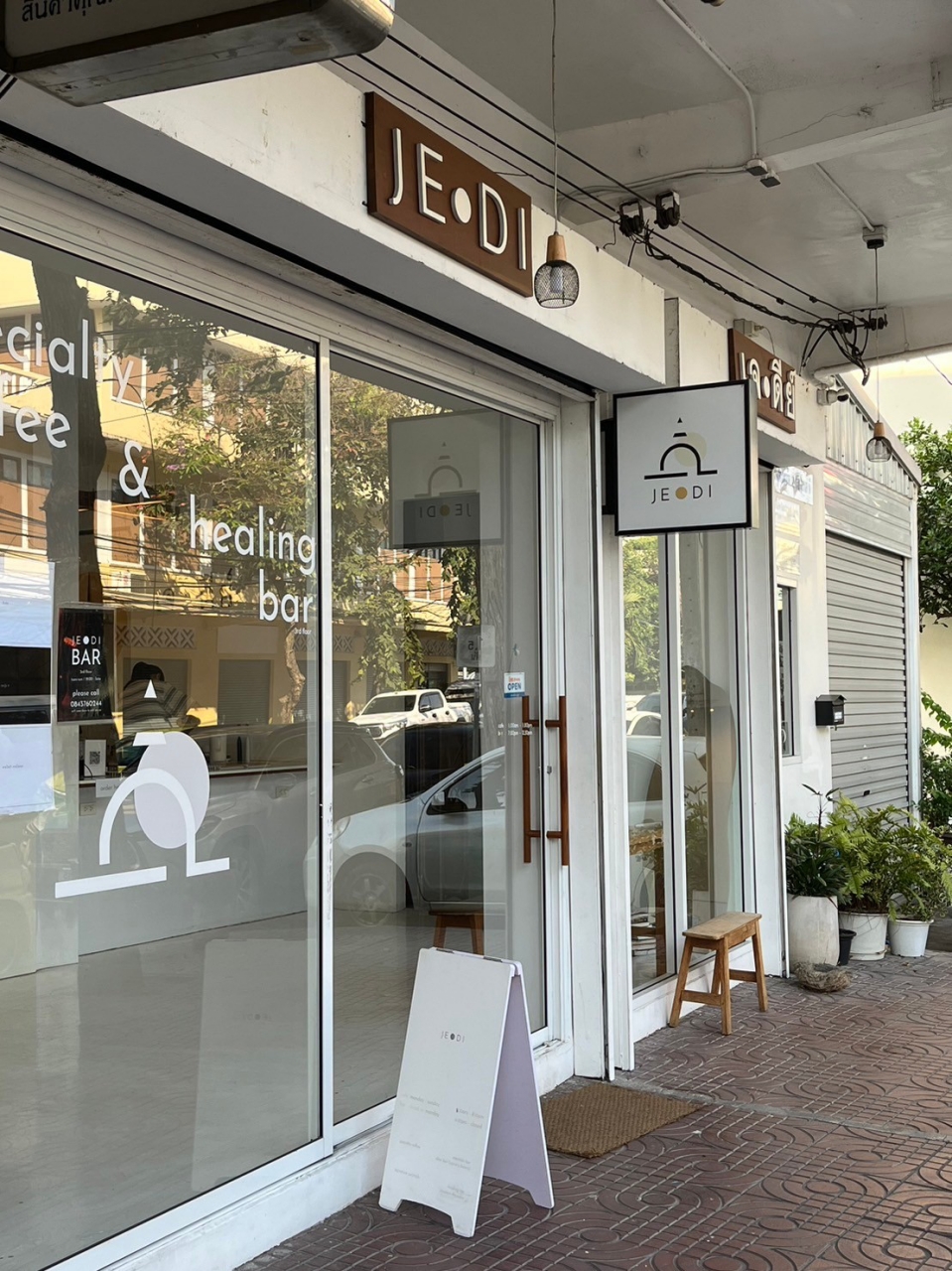
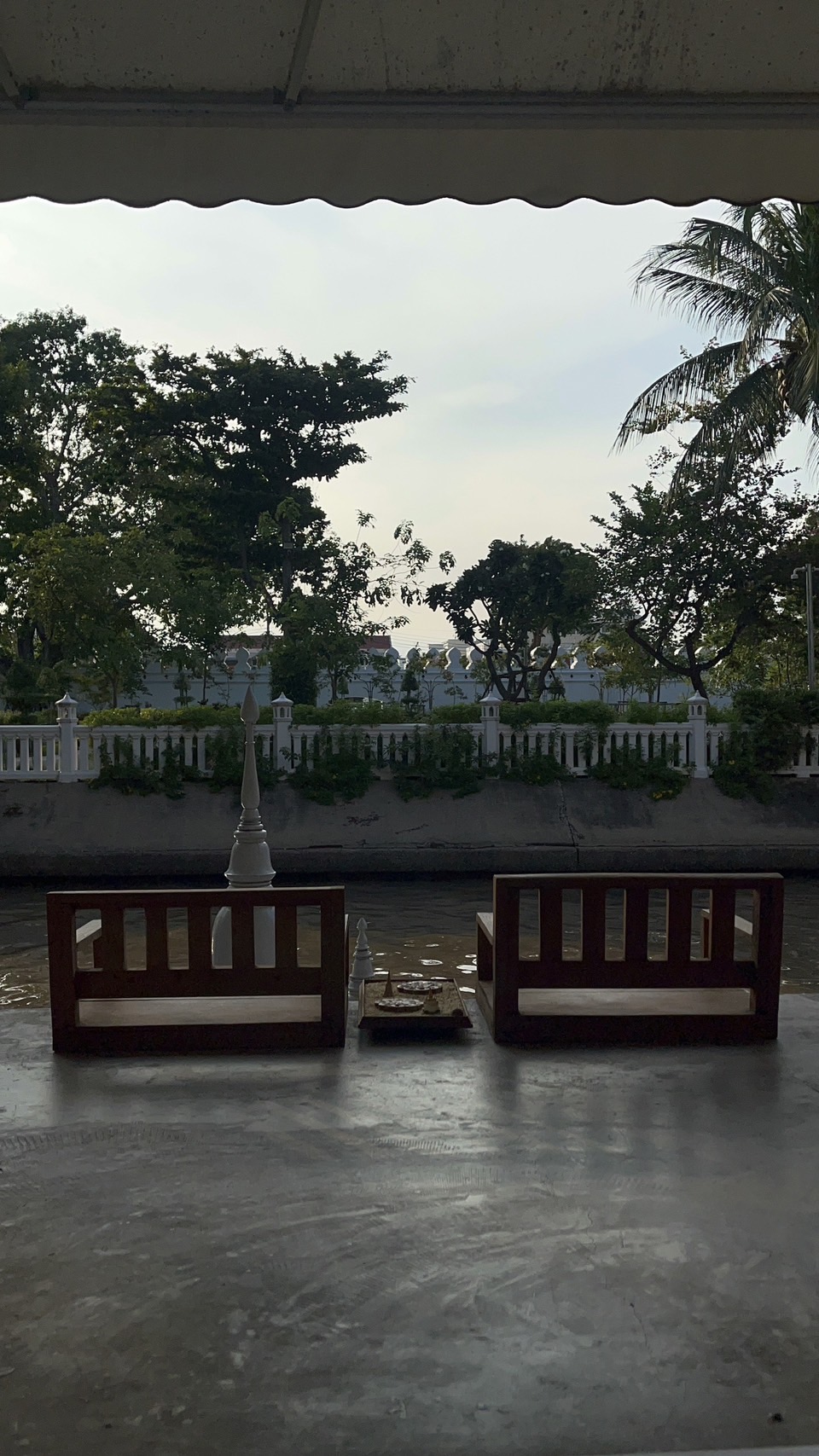
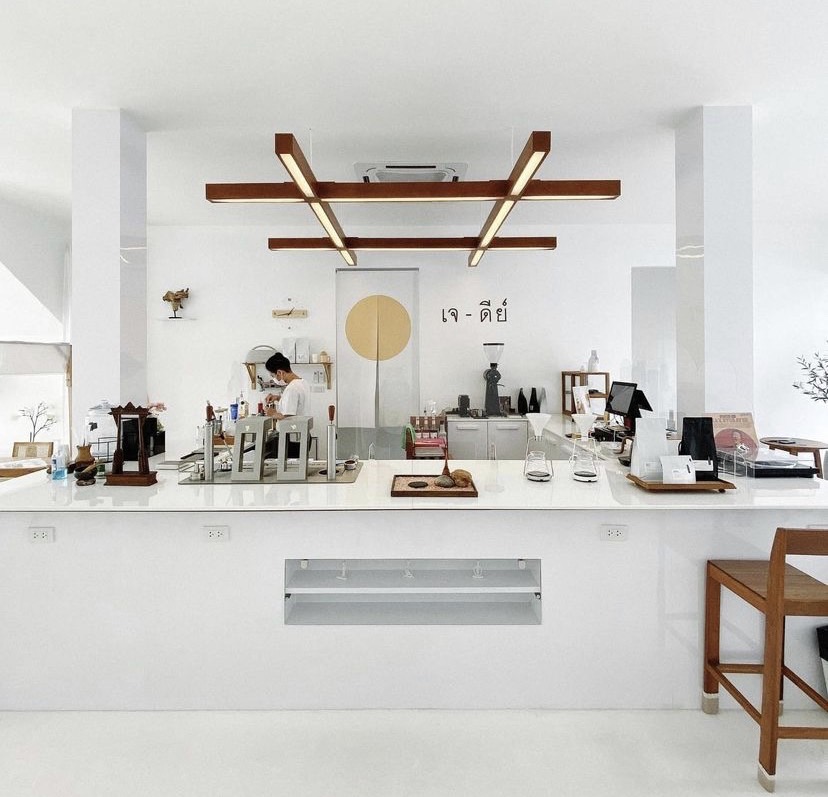
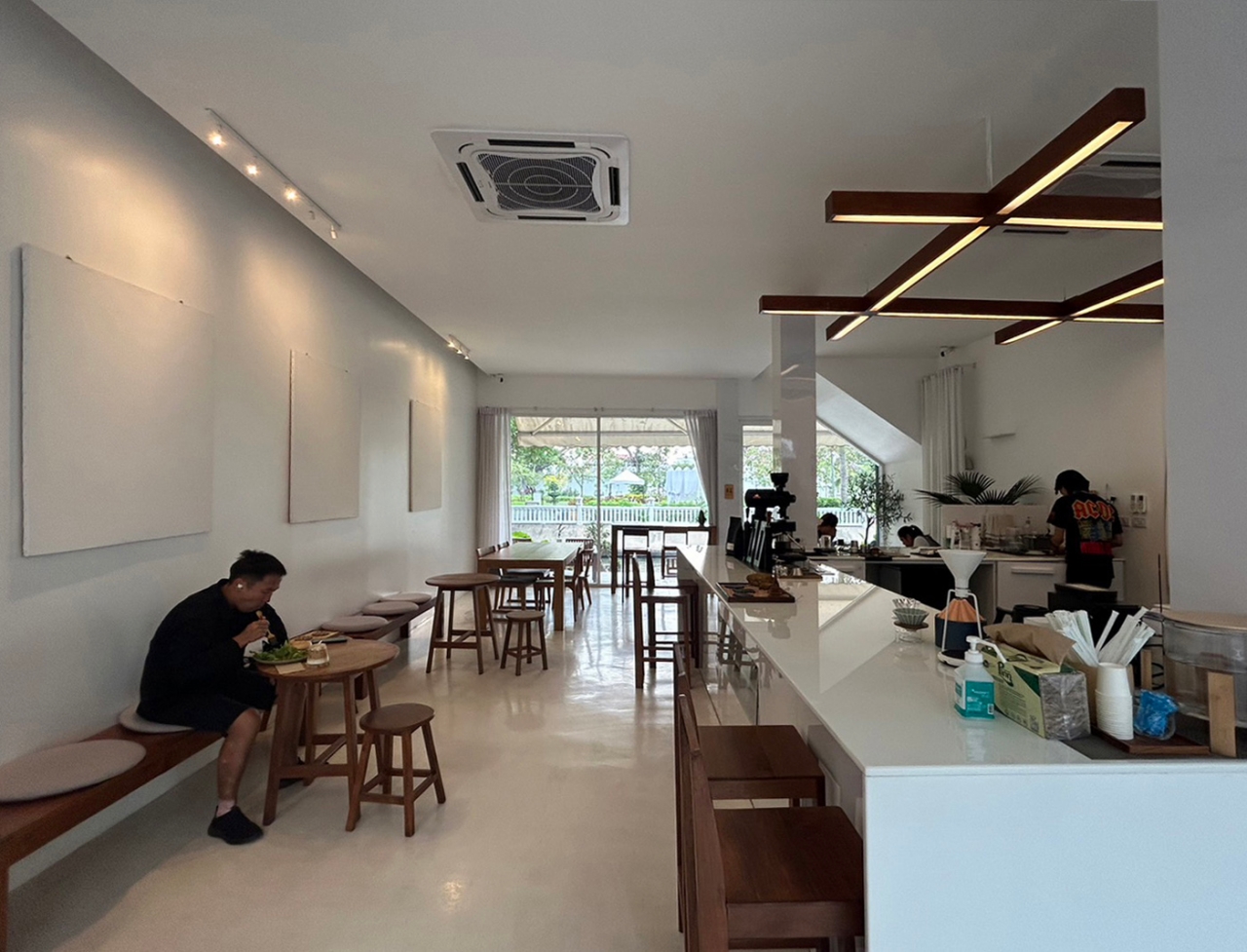


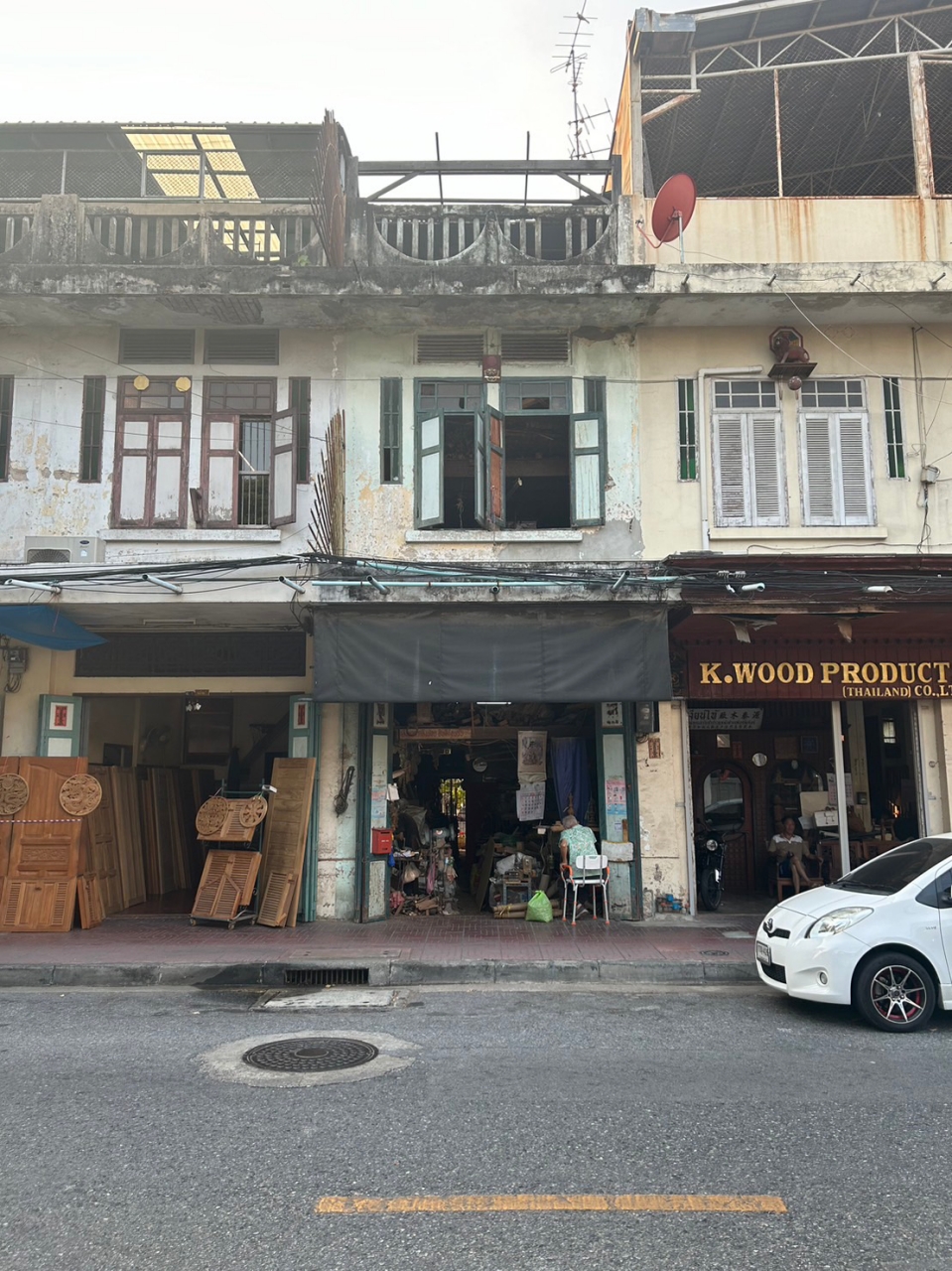
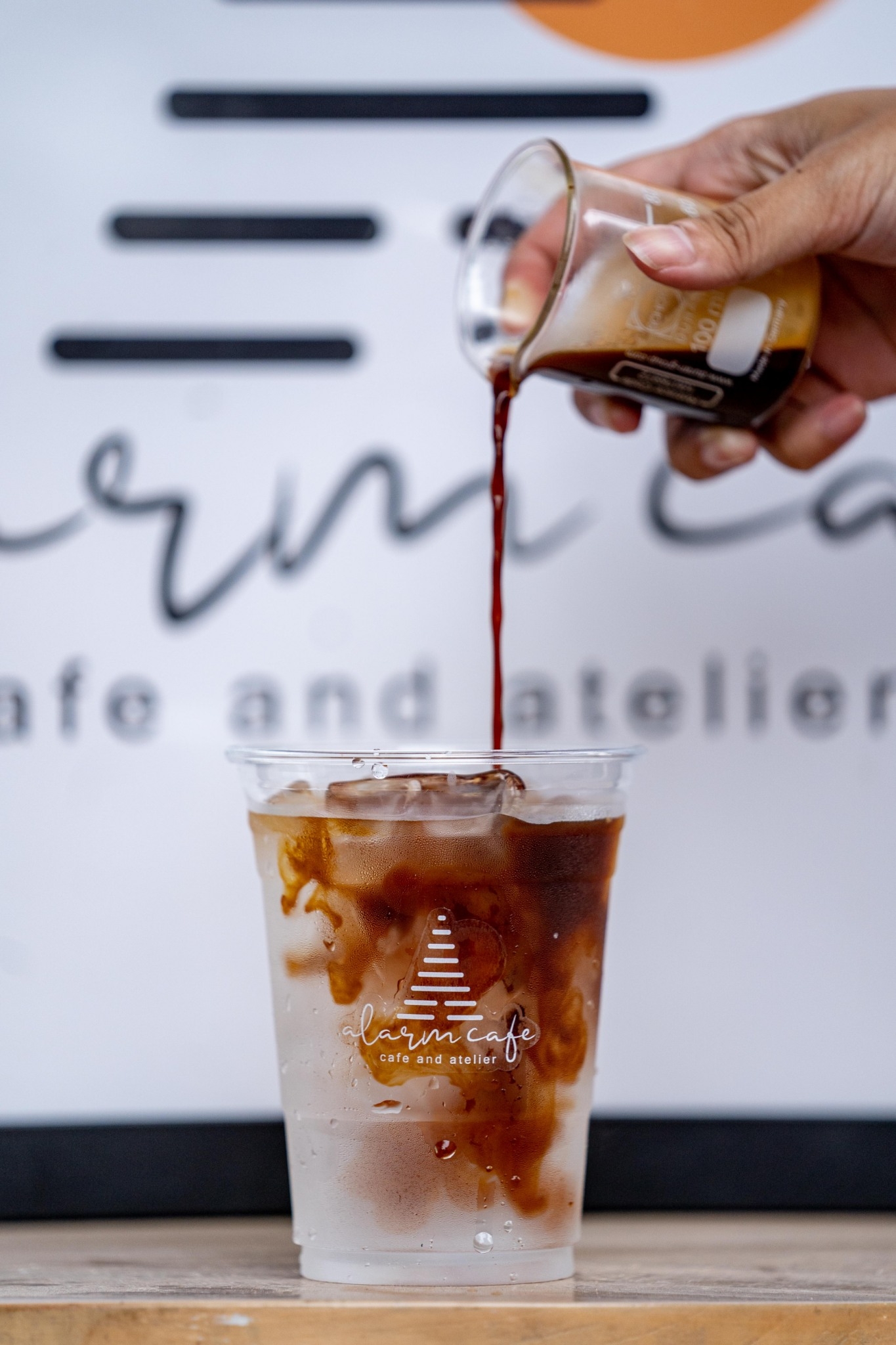

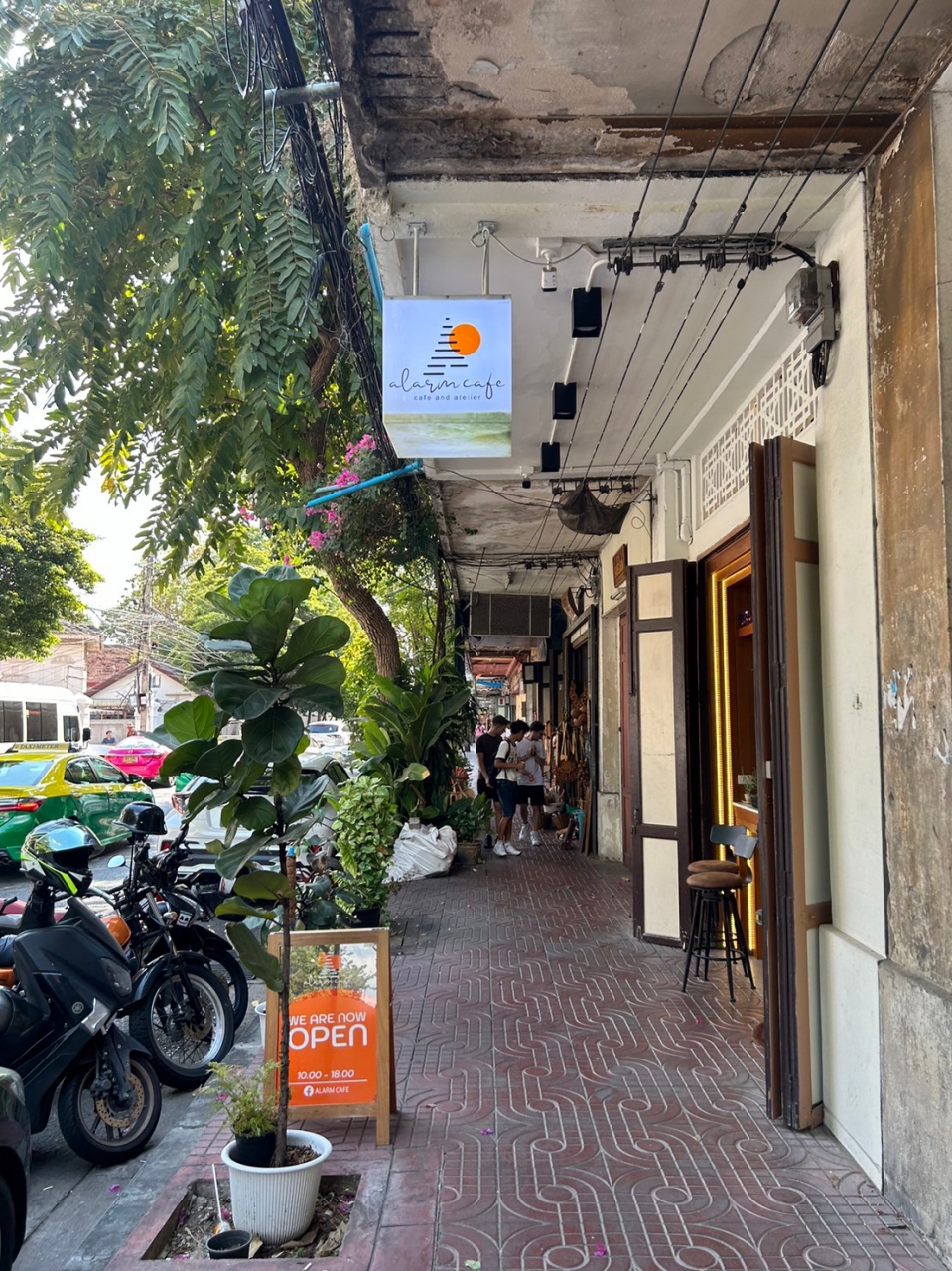
Walking Path Overview
ดื่มกาแฟให้สติในคาเฟ่ของย่าน เดินเที่ยวในชุมชนค้าไม้แห่งชานกระนคร เดินชมภูเขาทองวัดสระเกศ
Sip a coffee and heal your mind in a district cafe. Visit one of the original wooden commercial district and explore around Wat Saket temple
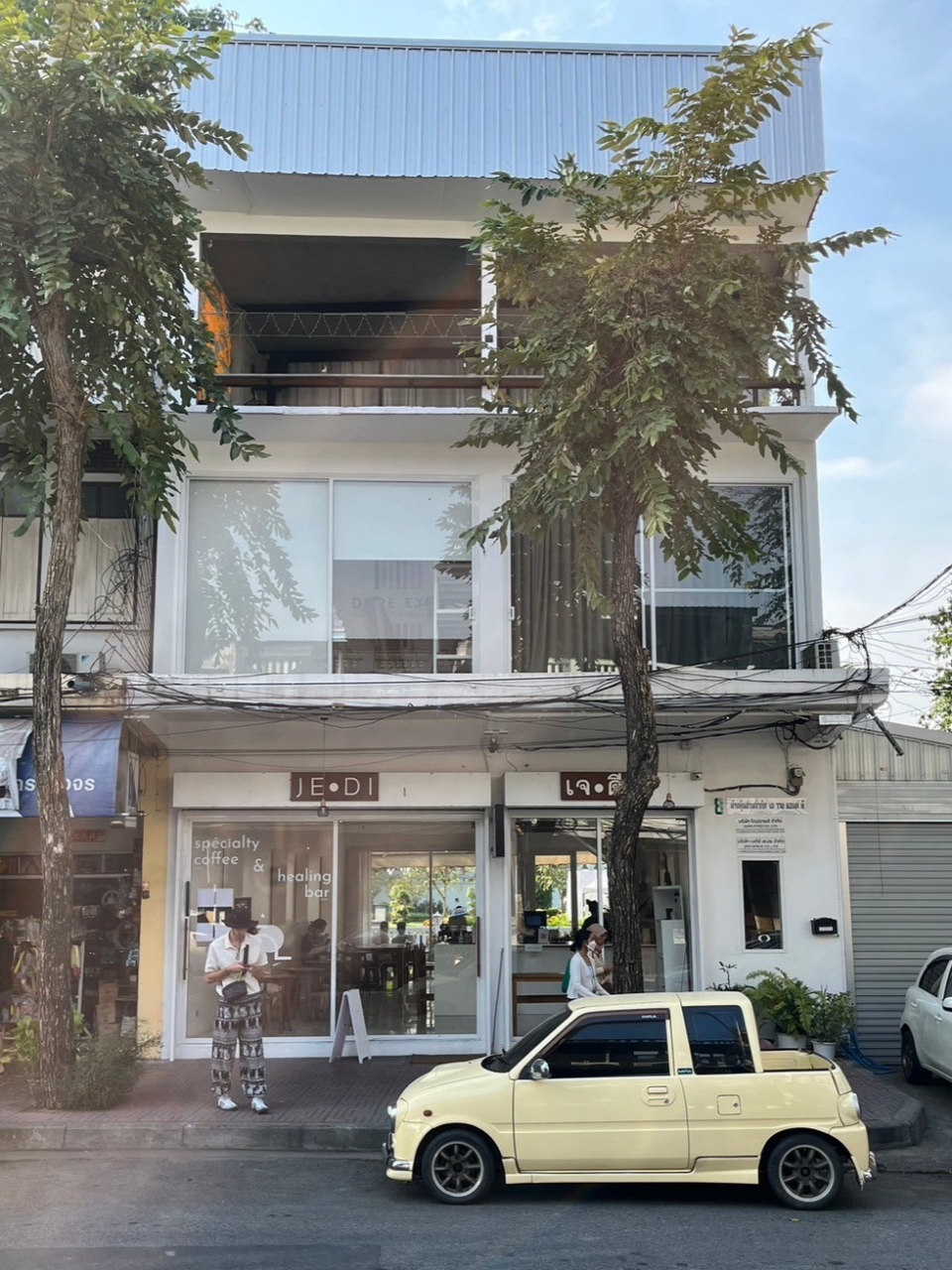
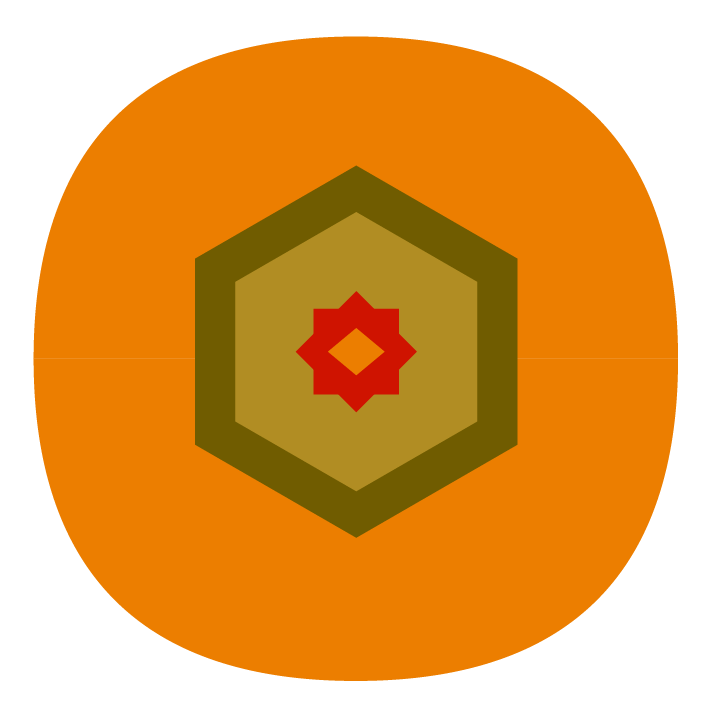
ย่านค้าไม้ที่ยังหลงเหลืออยู่ในชานพระนคร ที่มีร้านคาเฟ่เกิดใหม่สุดชิค
เมื่อเดินข้ามสะพานมหาดไทอุทิศมาแล้ว จะพบกับคาเฟ่สีขาวสะอาด ณ ตึกแถวเลขที่ 8 ถนนบริพัตร ริมคลองรอบกรุง เป็นที่ตั้งของ ร้านเจดีย์คาเฟ่ เดิมเป็นที่เก็บของของร้านขายดอกไม้ไฟ คุณยายแอ๊ด ปัจจุบันคุณกานต์ หลานของคุณยายเป็นผู้เข้ามาใช้พื้นที่ ร่วมกับเพื่อนชื่อคุณ PJ ทั้งสองเคยเป็น Marketing agency freelance ตั้งแต่ปี พ.ศ. 2560 จนกระทั่งเมื่อปี พ.ศ. 2563 กิจการเติบโตขึ้น จึงเปิดเป็นบริษัทและจําเป็นต้องมีพื้นที่ทํางาน จึงได้ใช้พื้นที่ตึกแถวนี้ มาปรับปรุงเป็นสํานักงานที่ชั้นบน โดยใช้วัสดุในพื้นที่
When crossing the Mahadthai-Utit bridge we can see a bright white cafe at No. 8,on Boripat Road, along the canal surrounding the city, is the location of Jedi Coffee. Originally, this space served as a storage area for a flower shop owned by Grandma Aed. At present, Khun Karn, Grandma's grandchild, has taken over the space along with his friend named PJ. Both were marketing freelance since 2017 until their business grew in 2020, leading them to open a company and necessitate office space. They renovated the upper floor of this shophouse for office use, using materials available on-site.
เนื่องจากกาน มีความสนใจในกาแฟ ได้ไปเรียนด้านกาแฟโดยเฉพาะ ที่สถาบันกอดองเบอ เพื่อตั้งใจจะมาเปิดร้านกาแฟที่ตึกนี้ เนื่องจากร้านอยู่ใกล้วัด จึงอยากให้คนรุ่นใหม่สามารถมานั่งและเข้าถึงวัดได้โดยไม่รู้สึกเคอะเขิน ชื่อเจดีย์คาเฟ่เลยเป็นชื่อที่เลือกขึ้นมาเพื่อให้ยึดโยงกับพื้นที่ ที่สามารถมองเห็นเจดีย์ภูเขาทองได้ แนวคิดการออกแบบพื้นที่และรูปลักษณ์ของร้าน ออกแบบให้มีลักษณะสว่าง สงบ เป็นฮีลลิ่งคาเฟ่ นําเสนออกมาในรูปแบบของเมล็ดกาแฟ สติ สมาธิ และปัญญา ภายในร้านมีพื้นที่จัดแสดงงานศิลปะตามโอกาส ศิลปินหมุนเวียนกันนํางานมาแสดง ด้านในร้าน มีพื้นที่ริมคลอง มองเห็นสวนสาธารณะป้อมมหากาฬ ถือเป็นจุดพักผ่อนหย่อนใจที่สงบ และน่าเข้ามาใช้งานแห่งหนึ่งในย่านนี้
As Khun Karn has a keen interest in coffee, he pursued specialized studies at the Cordon Bleue Institute with the intention of opening a coffee shop in this building. Since the shop is near a temple, they wanted to create an environment where the younger generation could comfortably sit and access the temple without feeling awkward. They named the coffee shop "Jedi Coffee" to connect it with the space where the Golden Mountain Pagoda is visible. The design concept of the space is to create a bright and serene atmosphere, presenting the coffee shop as a healing place. The interior showcases artworks on occasion, with rotating artists contributing their works. The canal-side area offers a view of the public park around Pom Mahakarn, providing a tranquil and inviting spot for visitors in the neighborhood.

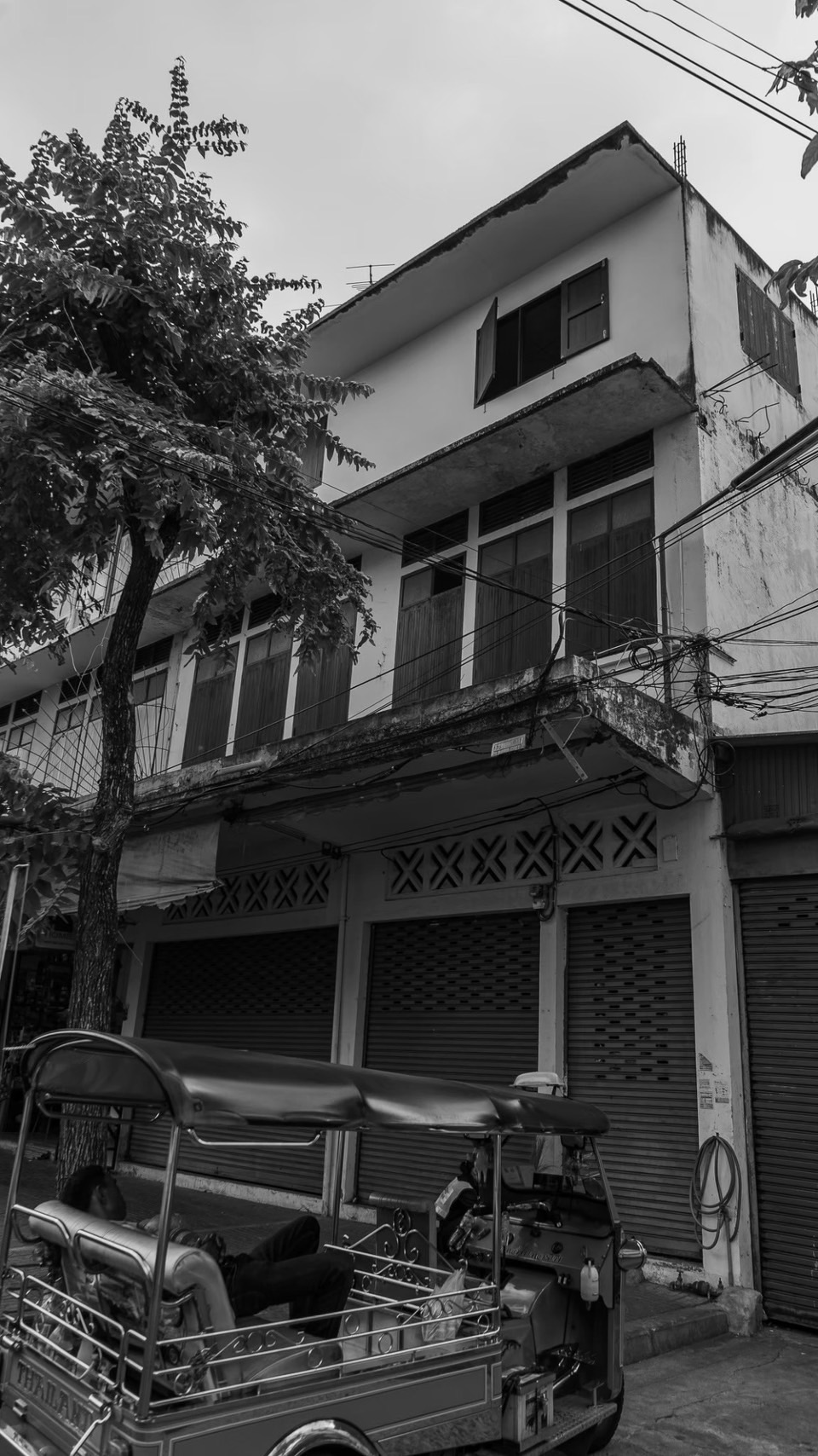

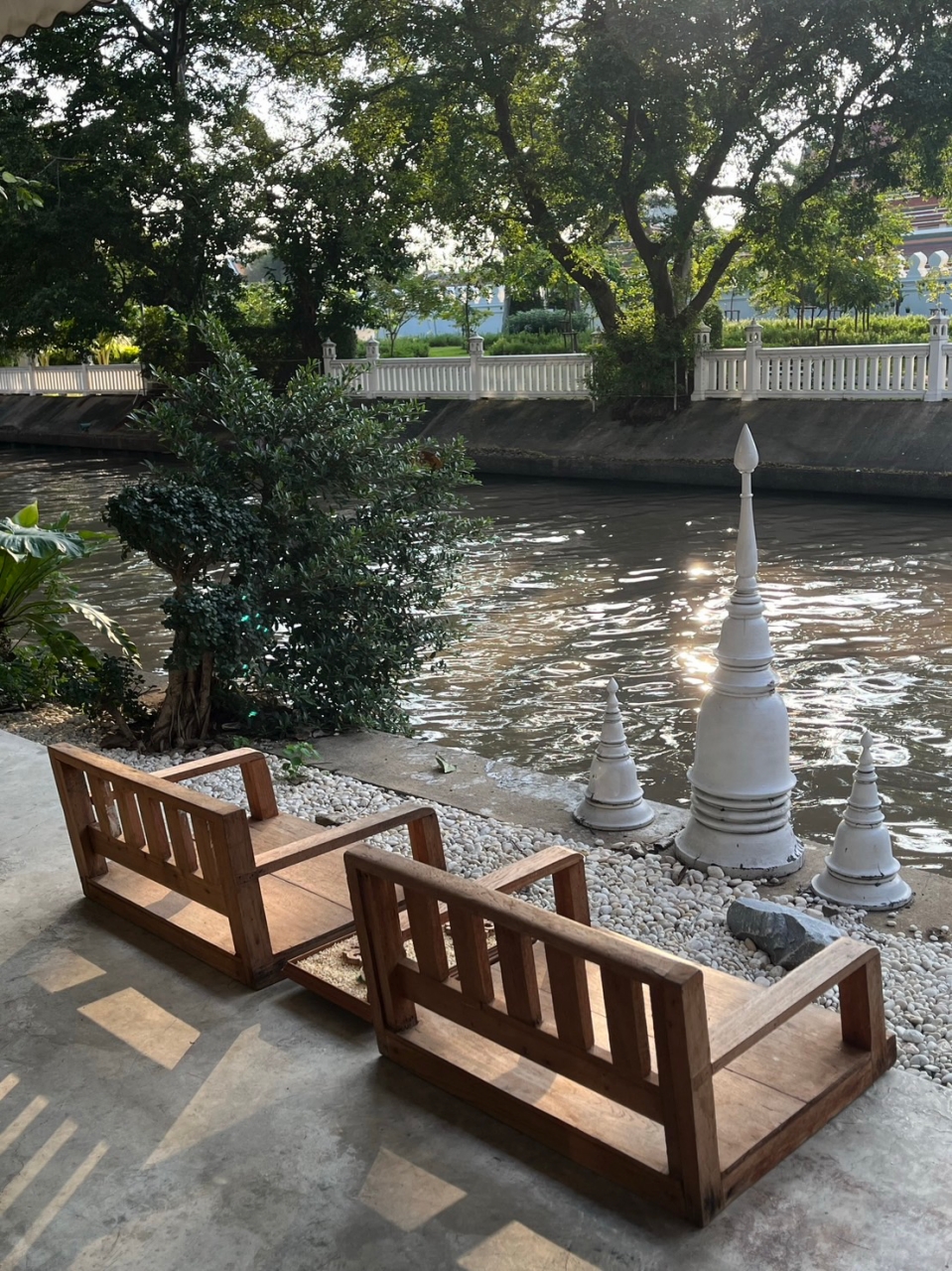

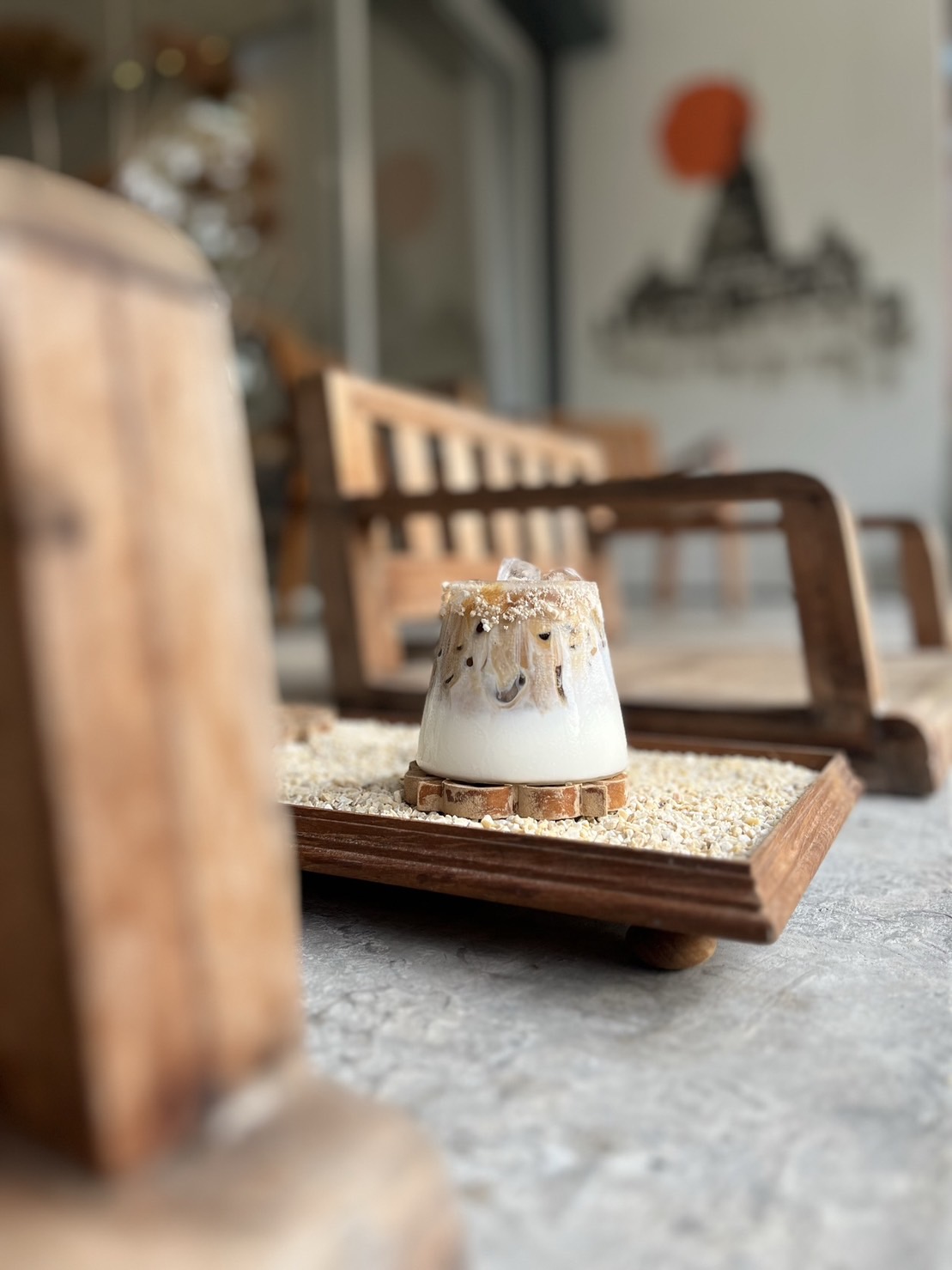


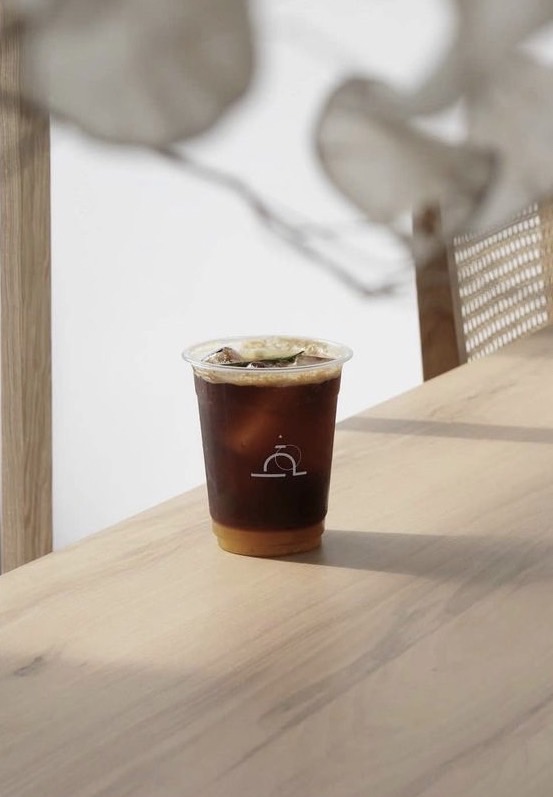



สำหรับย่านตึกแถวบนถนนบริพัตรนี้ เป็นย่านประกอบกิจการการค้าไม้ ประตู หน้าต่าง และเครื่องเรือนไม้ ดั้งเดิม นอกเกาะกรุงรัตนโกสินทร์ มีลักษณะเป็นอาคารตึกแถวคอนกรีตเสริมเหล็ก ยุคแรกของกรุงเทพ สร้างขนานไปกับถนนบริพัตร และคลองรอบกรุง โดยเป็นกรรมสิทธิ์ของวัดสระเกศ อยู่ภายใต้การบริหารจัดการของสํานักงานศาสนสมบัติ สํานักงานพระพุทธศาสนาแห่งชาติ โดยมีผู้ประกอบการดั้งเดิมที่ประกอบกิจการค้าไม้ ผลิตประตูหน้าต่างไม้ ยังคงประกอบกิจการอยู่ และเริ่มมีการเข้ามาของคนกลุ่มใหม่ ๆ ในการเข้ามาใช้พื้นที่เพื่อดําเนินกิจกรรมสร้างสรรค์อื่น ๆ เช่น ร้านอาหาร ร้านกาแฟ สํานักงาน เป็นต้น
In this row of buildings along Buri Pat Road, the area has traditionally been a hub for businesses related to wood, including doors and windows, and wooden furniture. Originally located outside the walls of Rattanakosin Island, these concrete and steel-reinforced shophouses date back to the early days of Bangkok. They are constructed alongside Bori pat Road and the surrounding canal, forming part of the property under the management of Wat Saket, overseen by the Office of National Buddhism. The original entrepreneurs engaged in the wood trade still producing wooden doors and windows, continue their businesses to this day. Recently, there has been an influx of new groups of people entering the area, utilizing the space for various creative activities such as restaurants, coffee shops, and offices. This transition reflects a shift from the traditional wood-related businesses to a more diverse range of creative enterprises within this historical row of buildings.
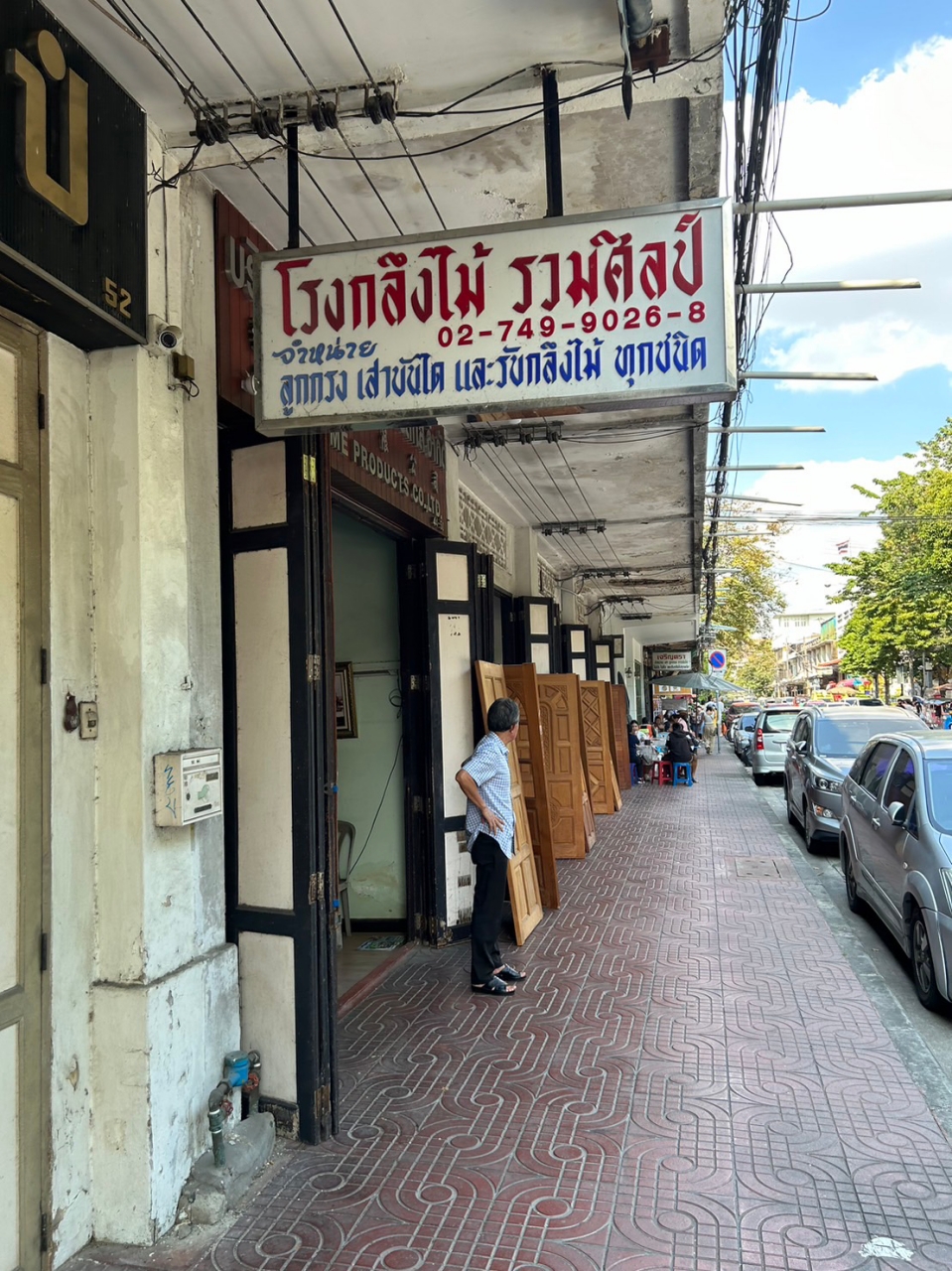


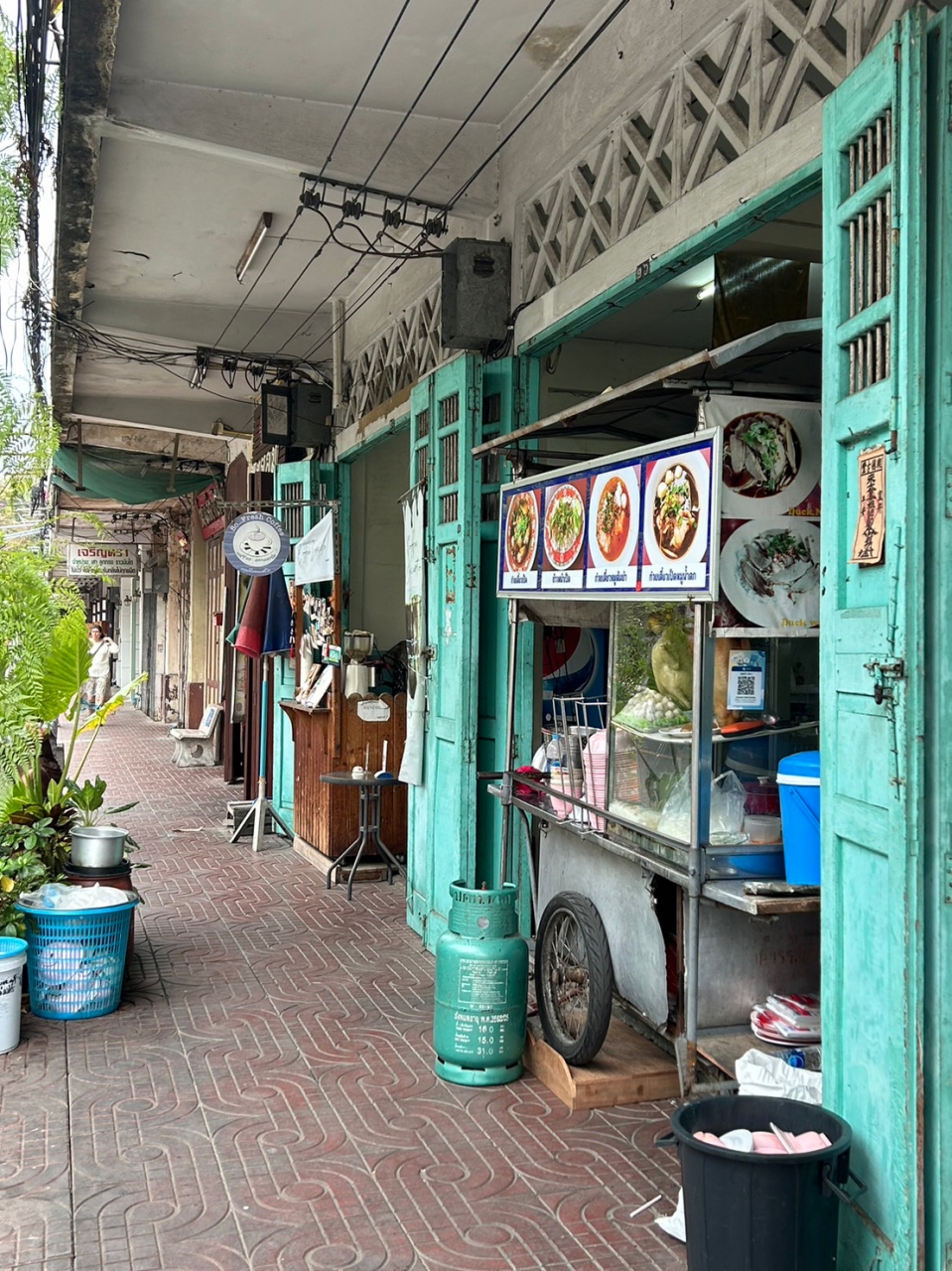


ณ เลขที่ 64 หนึ่งในห้องของตึกแถวชุดยาวของถนนบริพัตรนี้ เป็นที่ตั้งของอารามคาเฟ่ ตั้งขึ้นโดยพี่อ้อ และพี่กอบ ชาวหลังวัดสระเกศดั้งเดิม โดยพี่อ้อเป็นทายาทรุ่นที่ 2 ของร้านรวมศิลป์ ร้านที่เป็นตํานานแห่งการประดิษฐ์ และผลิตไม้เพื่อการตกแต่ง ไม่ว่าจะเป็นงานกลึง งานทําคิ้วบัวตกแต่ง บัวไม้ บันได ราวลูกกรง ไม้แปรรูปต่าง ๆ โดยคุณพ่อของพี่อ้อ ได้เข้ามาเริ่มกิจการร้านรวมศิลป์ที่ตึกแถวหลังวัดสระเกศ เมื่อปี พ.ศ. 2018 กิจการเติบโตมีลู่ทาง คุณพ่อจึงเปิดโรงงานที่บางนาในปีถัดไป พี่อ้อเล่าให้ฟังว่า คุณแม่ขายเก่งมาก ถ้าลูกค้าเข้าร้านแล้วต้องไม่กลับออกไปมือเปล่า ส่วนคุณพ่อก็ถือคติทําได้ทุกอย่าง ร้านนี้เป็นที่แรก ๆ ในประเทศที่นําเครื่องตัด CNC เข้ามาใช้ ในช่วงที่กิจการรุ่งเรื่องที่บ้านมีรถวิ่งของจากโรงงานวันละ 2-3 เที่ยว โรงงานดูแลช่างเป็นร้อยชีวิต พอสิ้นคุณพ่อไปลูกค้าเก่า ๆ บางคนมาสั่งของที่หน้าร้านรู้ ถึงกับนั่งร้องไห้เลยก็มี ปัจจุบันยังคงมีโรงงานอยู่ และยังมีการผลิตชิ้นส่วนไม้ขายอยู่
ปัจจุบันพี่อ้อ และพี่กอบ ได้ปรับปรุงพื้นที่ตึกแถวเก่าห้องนี้มาเป็นร้านกาแฟ ชื่ออารามคาเฟ่ พ้องเสียงกับคําว่า alarm ที่แปลว่านาฬิกาปลุก และอารามในภาษาไทย ที่แปลว่าวัด โดยหวังจะให้พื้นที่นี้เป็นที่พบป่ะ หรือเป็นห้องรับแขกของคนในชุมชน
At no. 64 on Boripat Road, one of the rooms in this long row of buildings is home to Alarm Cafe, established by siblings P'Or and P'Kop, descendants of the community behind Wat Saket. P'Or is the second generation to the renowned Artisan Shop, a legendary establishment in the field of inventive woodwork and decoration. The shop specializes in turning, crafting lotus-themed artworks, decorative lotus flowers, railings, and various transformed wooden items. P'Or's father initiated the Artisan Shop in the row of buildings behind Wat Saket in 2018. As the business grew, he opened a factory in Bang Na the following year. P'Or mentioned that her mother was an excellent salesperson, and once customers entered the shop, they shouldn't leave empty-handed. On the other hand, her father believed in doing everything himself. This shop was one of the first in the country to introduce CNC cutting machines. During the peak of the business, there were two to three factory trips per day, and the factory employed over a hundred craftsmen. After her father passed away, some old customers who came to the shop cried upon hearing the news. Currently, the factory still operates, and they continue to produce and sell wooden parts. P'Or and P'Kop have transformed the old building into Alarm Cafe, derived from the Thai word "aram" meaning temple and aligned with the English word "alarm." as a ticking clock. The intention is to create a space for the community, a meeting place, or a reception room for the locals.



Contributed by
CODE STUDIO
โค้ดสตูดิโอ หรือ cultural Oriented design studio คือสตูดิโอออกแบบที่มุ่งเน้นการนําเรื่องราวทางวัฒนธรรมมาต่อยอดด้วยกระบวนการสร้างสรรค์ เพื่อสร้างงานออกแบบที่มีความสวยงาม บอกเล่าเรื่องราว และมีเอกลักษณ์โดดเด่นเฉพาะตัว พร้อมส่งมอบความภาคภูมิใจไปสู่คนรุ่นถัดไป
Studio Code or Cultural Oriented Design Studio is a design studio that focuses on integrating cultural narratives through a creative process to enhance and extend stories from different cultures. The goal is to craft designs that are aesthetically pleasing, narratively rich, and possess a distinctive identity, all while delivering a sense of pride to be passed on to the next generations.
CODE STUDIO
โค้ดสตูดิโอ หรือ cultural Oriented design studio คือสตูดิโอออกแบบที่มุ่งเน้นการนําเรื่องราวทางวัฒนธรรมมาต่อยอดด้วยกระบวนการสร้างสรรค์ เพื่อสร้างงานออกแบบที่มีความสวยงาม บอกเล่าเรื่องราว และมีเอกลักษณ์โดดเด่นเฉพาะตัว พร้อมส่งมอบความภาคภูมิใจไปสู่คนรุ่นถัดไป
Studio Code or Cultural Oriented Design Studio is a design studio that focuses on integrating cultural narratives through a creative process to enhance and extend stories from different cultures. The goal is to craft designs that are aesthetically pleasing, narratively rich, and possess a distinctive identity, all while delivering a sense of pride to be passed on to the next generations.





Walking Path Overview
เข้าสู่โค้ด สตูดิโอ พื้นที่แห่งการออกแบบที่อยู่คู่ร้านแซมฟ้าการช่าง เรียนรู้เรื่องราวของร้านขายประตูหน้าต่างไม้อันเก่าแก่ผ่านร่องรอยของที่ว่าง
Entering CODE Studio, the design space located on Samfa Karnchang. Learning the intriguing story of the antique wooden door and window shop through the traces of the empty space.
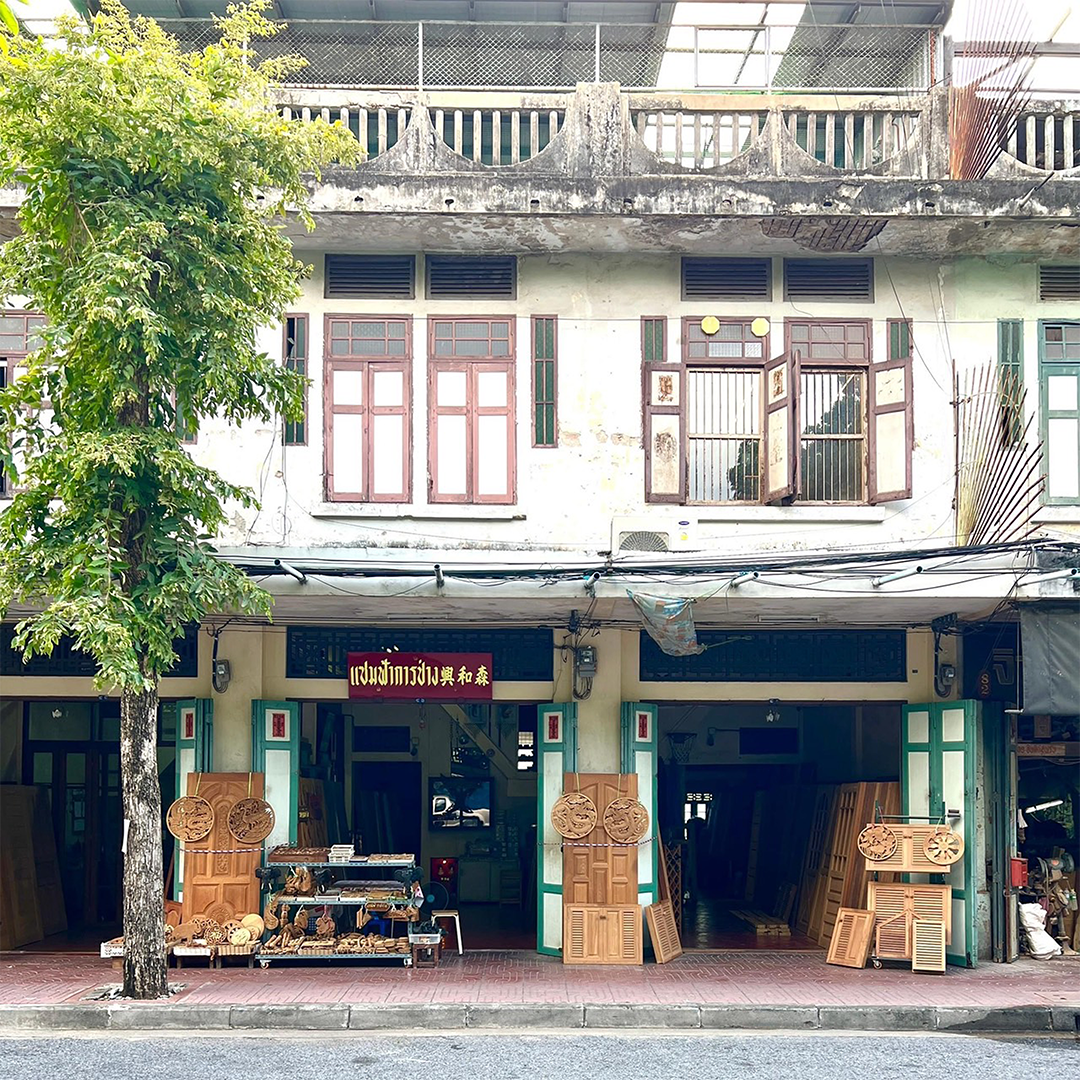

สตูดิโอที่เลือกกลับมาทำงานในย่านเมืองเก่า เพื่อหวังจะส่งเสริมและต่อยอดกิจการดั้งเดิม
ร้านแซมฟ้าการช่าง เป็นร้านค้าประตูหน้าต่างไม้ เปิดดำเนินการมากกว่า 67 ปี ที่ชั้น 2 ตึกแถวเลขที่ 84 เป็นที่ตั้งของ CODE Studio สตูดิโอสถาปัตย์ที่มุ่งเน้นการออกแบบที่ต่อยอดและพัฒนาวัฒนธรรม มองเข้าไปข้างในใต้แป้นบาส จะเห็นทางขึ้น สามารถเดินขึ้นไปทางบันไดโบราณได้
Sam Fa Karn Chang Shop is a wooden door and window store that has been established for over 67 years. The second floor of building number 84 and is the location for CODE Studio, an architectural studio that focuses on developing culture driven design that could preserve old wisdom and trasfer to new generations. When you look inside Samfah Karnchang Shop, which is situated on the second floor of building number 84, you will see an ancient staircase that allows visitors to walk up.
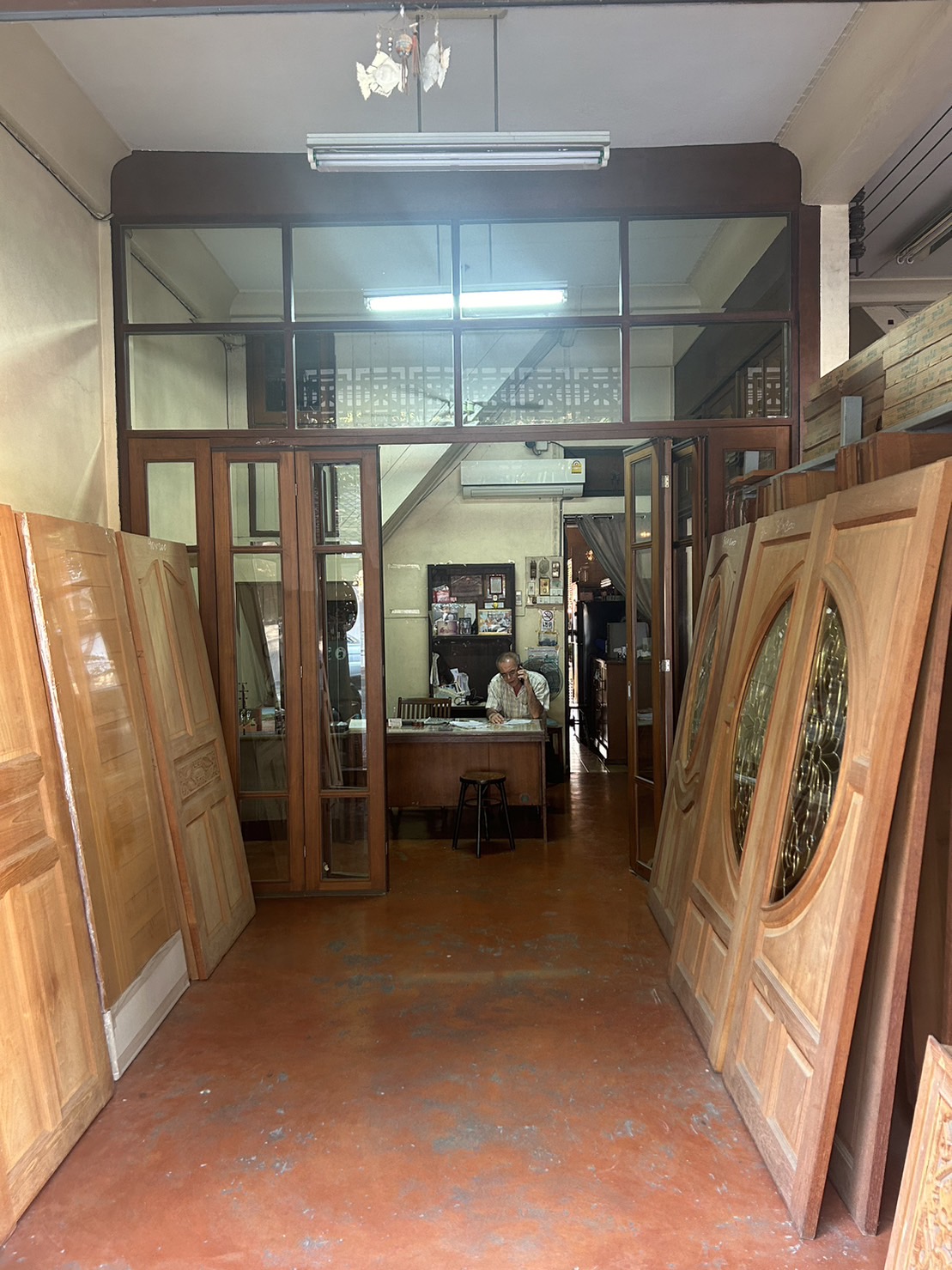
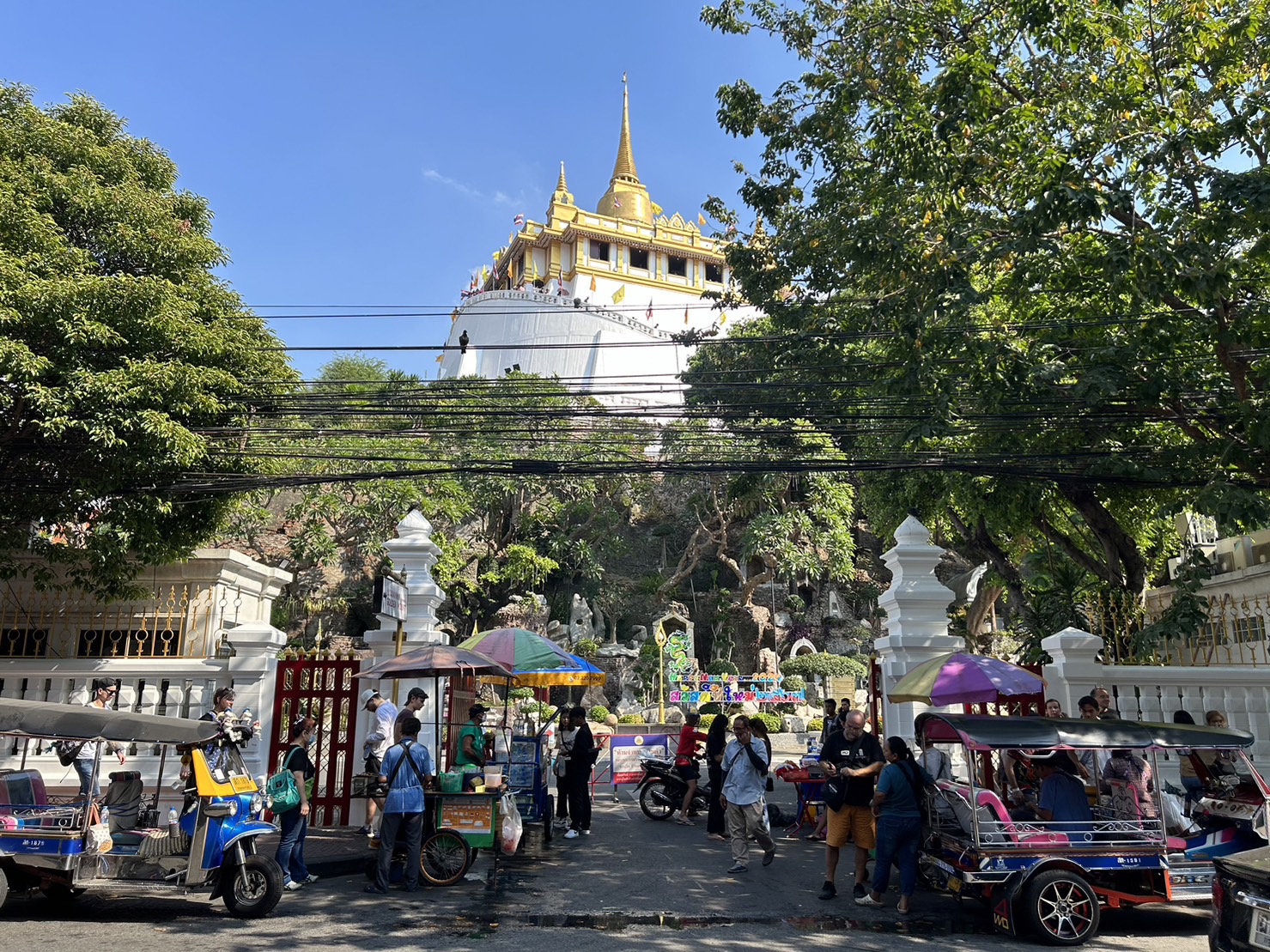
โค้ดสตูดิโอ หรือ cultural Oriented design studio คือสตูดิโอออกแบบที่มุ่งเน้นการนําเรื่องราวทางวัฒนธรรมมาต่อยอดด้วยกระบวนการสร้างสรรค์ เพื่อสร้างงานออกแบบที่มีความสวยงาม บอกเล่าเรื่องราว และมีเอกลักษณ์โดดเด่นเฉพาะตัว โดยตั้งอยู่ที่ตึกแถวเลขที่ 84 ถนนบริพัตร ที่ชั้น 2 ของร้านแซมฟ้าการช่าง
พื้นที่ชั้น 2 ของตึกแถวแต่เดิมเป็นโรงงานขนาดเล็กที่ดําเนินการแปรรูปและผลิตประตูหน้าต่างไม้ และงานเฟอร์นิเจอร์ไม้ชิ้นเล็ก แต่ด้วยความเปลี่ยนแปลงต่าง ๆ ทําให้พื้นที่ภายในตึกแถวชั้น 2 ถูกทิ้งร้างเป็นเวลานาน ด้วยความสนใจในการอนุรักษ์และการปรับพื้นที่ใช้สอยในอาคารเก่า สตูดิโอจึงได้ขอเข้าไปใช้พื้นที่และปรับปรุงเพื่อให้เกิดการใช้สอยขึ้นอีกครั้ง หากว่าในขั้นตอนการปรับปรุงที่ยาวนานและประสบการณ์ที่ได้จากการทํางานจริง ทําให้เราได้พบความน่าสนใจ ทั้งในเรื่องกระบวนการปรับปรุง และการได้เข้าไปใช้พื้นที่ รวมไปถึงการได้กลับเข้ามาอาศัยอยู่ในย่านเมืองเก่า จึงอยากจะแบ่งปันประสบการณ์นี้แก่ผู้ที่สนใจเข้าชม โดยเรื่องราวต่าง ๆ จะถูกนํามาจัดแสดงบนพื้นที่จริง เป็นนิทรรศการ DE-CODE Shophouse; The hidden story of the Samfah Karnchang’s building with CODE Studio
CODE Studio, or Cultural Oriented Design Studio, is a design studio that focuses on integrating cultural narratives through the creative process to create beautiful, storytelling, and distinctive designs. Located at 84 Boripat Road, on the second floor of Samfa Karnchang's woodwork shop.
The second floor of the original row building used to be a small-sized factory that processed and produced small wooden doors and windows and small wooden furniture. However, various changes resulted in the interior space of the second floor being abandoned for a long time. With an interest in conservation and adapting the usage of space in old buildings, the studio requested to utilize and renovate the space for renewed purposes. Through the lengthy renovation process and the experiences gained from practical work, interesting aspects were discovered, both in the renovation process and in reoccupying the space in the old town area. The studio aims to share these experiences with those interested through various narratives presented on the actual space, forming the exhibition titled "DE-CODE Shophouse; The hidden story of the Samfah Karnchang’s building with CODE Studio.
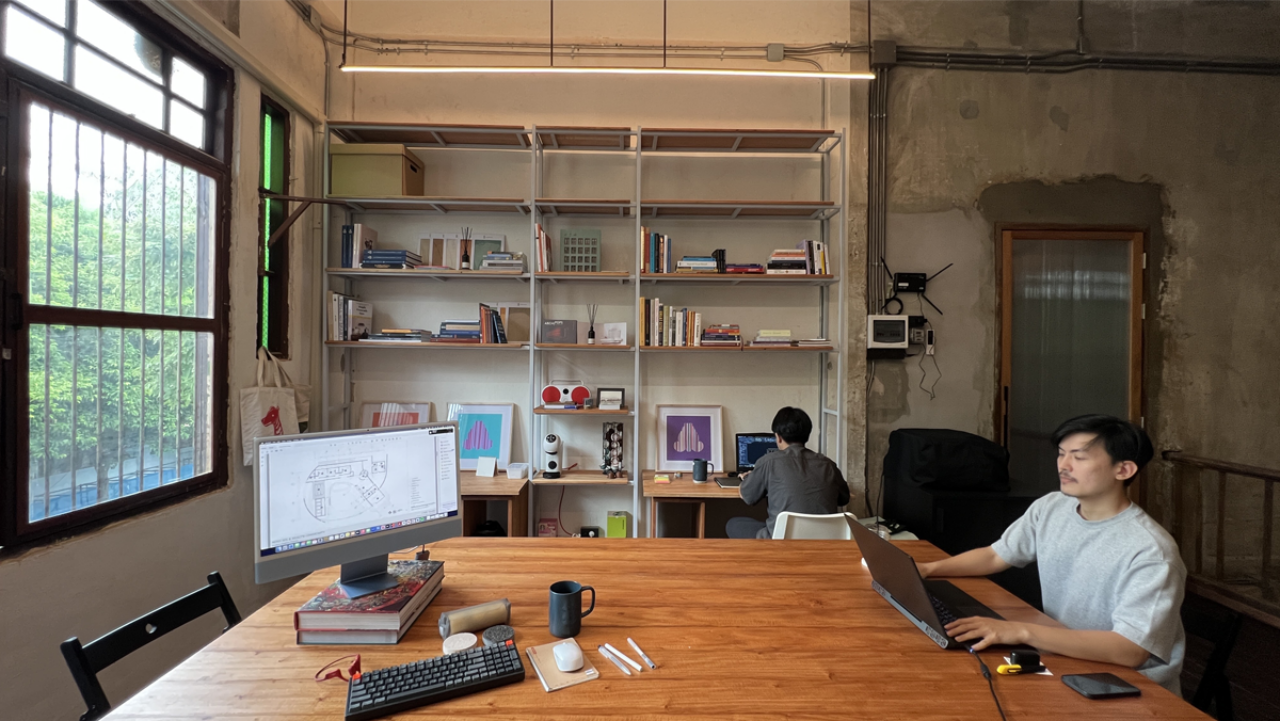
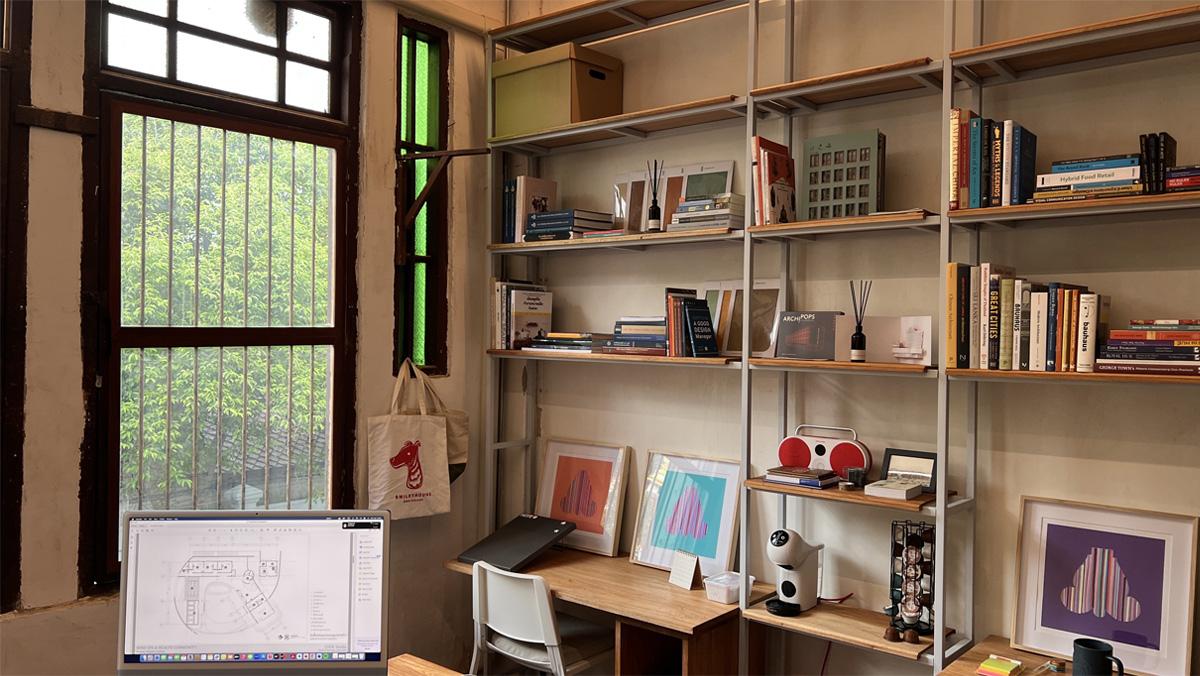
DE-CODE Shophouse; The Hidden Story of the Samfah Karnchang’s building with CODE Studio. นิทรรศการ “ถอดรหัสตึกแถว; เรื่องราวที่ซ่อนอยู่ในตึกแถวแซมฟ้าการช่าง กับ Cultural-Oriented Design Studio” เป็นนิทรรศการที่เล่าถึง เรื่องราวการเปลี่ยนแปลงของร้านแซมฟ้าการช่าง ร้านขายประตู หน้าต่างไม้ บนถนนบริพัตร ย่านค้าไม้หลังวัดสระเกศ หนึ่งในผู้ประกอบการค้าไม้ดั้งเดิมในพื้นที่ ที่ประกอบกิจการผลิตและจําหน่ายประตู หน้าต่างไม้ ตั้งแต่ปี 2500 มากว่า 67 ปี ผ่านความทรงจําของบุคคล 3 รุ่น ได้แก่ กูโผ่ คิวแดง และตุ่น ที่มีต่ออาคารตึกแถวเลขที่ 84-88 ถนนบริพัตร กับการเปลี่ยนแปลงการใช้งานที่ส่งต่อกันมา จากร้านขายกาแฟ สู่ร้านขายประตูหน้าต่างไม้ จนปัจจุบันเป็นที่ตั้งของ Cultural-Oriented Design Studio
นิทรรศการ แบ่งออกเป็น 3 ส่วน ประกอบด้วย
- Stories on the wall.
จัดแสดงเรื่องราวในอดีต ก่อนที่พื้นที่จะถูกเปลี่ยนแปลงสู่การใช้งานในปัจจุบัน -
Arch’s draws on the table.
จัดแสดงขั้นตอน วิธีการในการปรับปรุงอาคาร ตั้งแต่สํารวจ ไปจนถึงการเข้ามางาน - Cultural work’s on the bookshelf
จัดแสดงผลงานการทํางานของสตูดิโอ ตั้งแต่ก่อน และภายหลังจากการได้เข้ามาใช้งาน Space
Special for BKK Design Week: Bangkok’s town museum shop pop-up store
Souvenirs Shop ในพื้นที่เมืองเก่ากรุงเทพ ที่นําเสนอการนํา Cultural Heritage ที่พบเห็นได้ในเมือง มาเป็นจุดเริ่มต้นของงานออกแบบ และพัฒนาขึ้นมาเป็นสินค้าที่มีความโดดเด่นเป็นเอกลักษณ์ของชุมชน โดย The Town Museum Shop จะช่วยพัฒนา และเลือกสรร สินค้าประเภทของที่ละลึก ที่ได้รับแรงบันดาลใจจากเมือง และชีวิตของผู้คนในเมือง มารวบรวมไว้ให้บรรดา visitor ได้เลือกซื้อกลับเพื่อตอกย้ําภาพประทับใจที่ได้รับจากประสบการณ์การท่องเที่ยวเมืองกรุงเทพ
DE-CODE Shophouse; The Hidden Story of the Samfah Karnchang’s Building with CODE Studio" is an exhibition that narrates the transformation of Samfah Karnchang, a woodwork shop specializing in selling antique wooden doors and windows on Boripat Road, in the wood market area behind Wat Saket, spanning over 67 years, through personal memories of three generations, Grandma Gu-Po, Uncle dang, and Toon, witnessing the transition of its usage from a coffee shop to a wooden door and window shop, and now housing the Cultural-Oriented Design Studio.
The exhibition is divided into three parts:
- Stories on the Wall: Showcases the stories of the past before the space was transformed for its present use.
- Arch’s Draws on the Table: Displays the process and methods used in renovating the building, starting from the survey to the actual renovation work.
- Cultural Work’s on the Bookshelf: Exhibits the studio's work, both before and after occupying the space.
As a special feature for BKK Design Week, a pop-up store named "Souvenirs Shop" is introduced in the old town area of Bangkok. It presents cultural heritage found in the city as the starting point for design and development of unique community-inspired products. The Town Museum Shop aims to curate and select souvenirs inspired by the city's culture and life, offering visitors a chance to purchase items that reflect the impressive experiences gained from exploring the city.
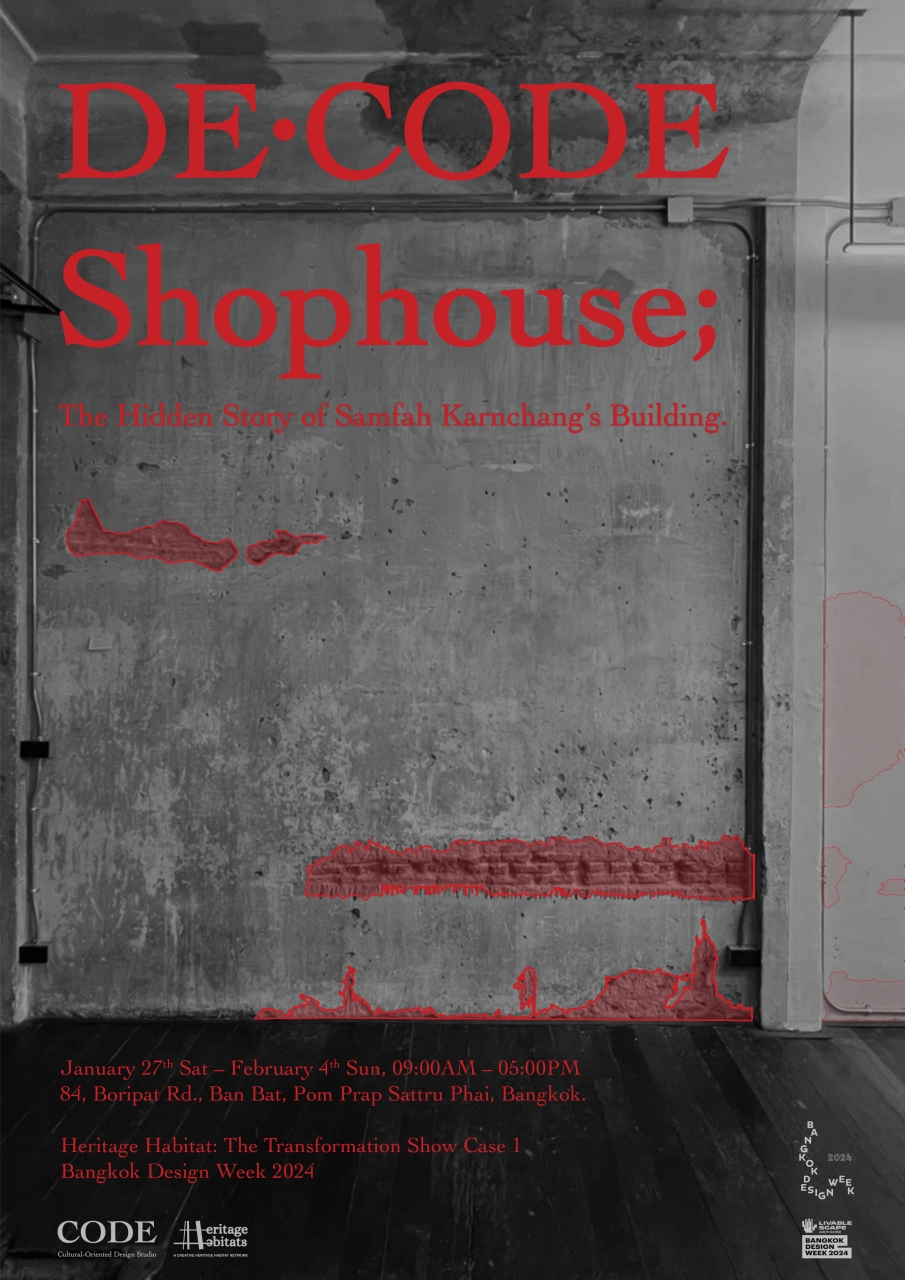
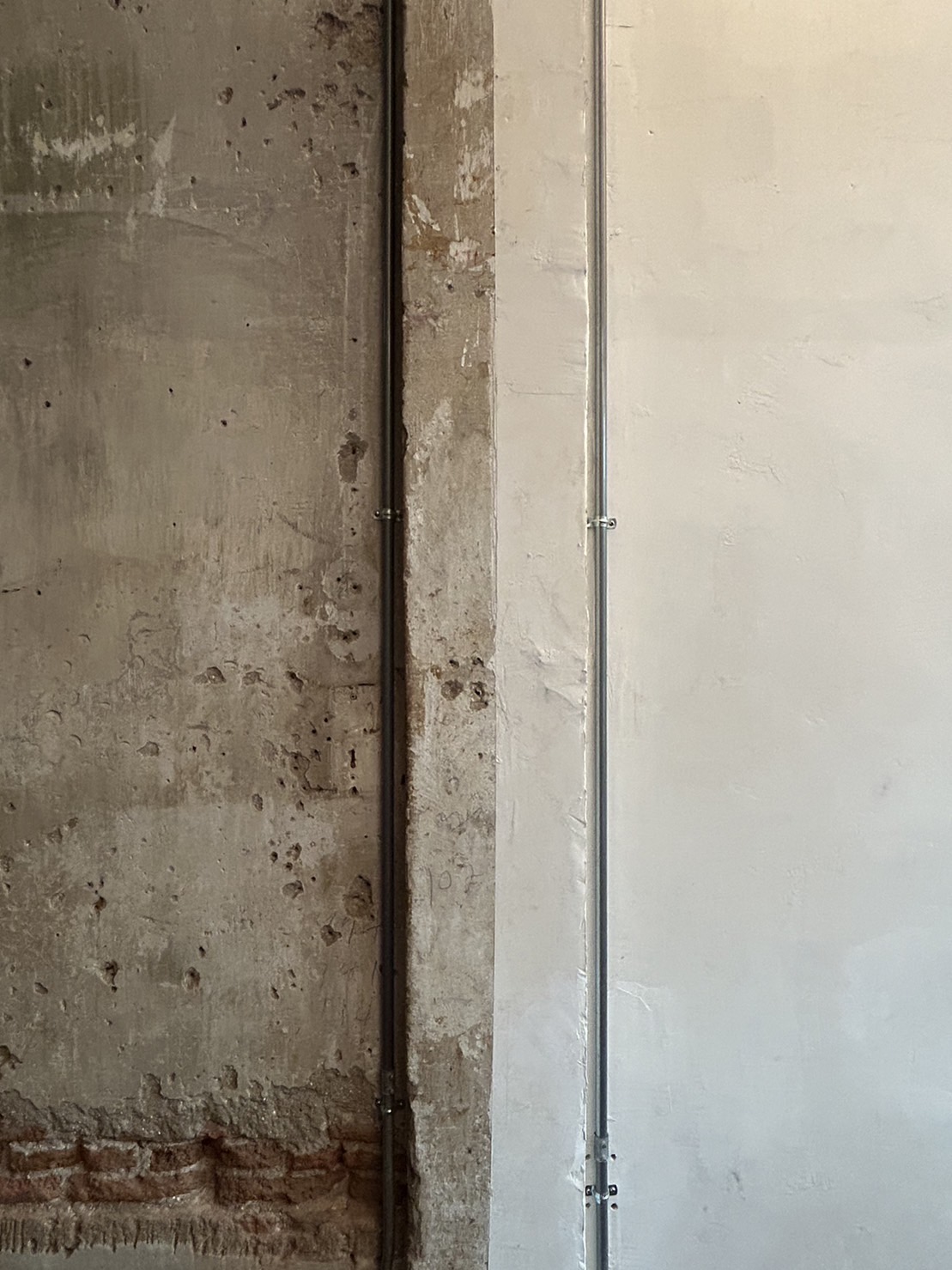
Contributed by
CODE STUDIO
โค้ดสตูดิโอ หรือ cultural Oriented design studio คือสตูดิโอออกแบบที่มุ่งเน้นการนําเรื่องราวทางวัฒนธรรมมาต่อยอดด้วยกระบวนการสร้างสรรค์ เพื่อสร้างงานออกแบบที่มีความสวยงาม บอกเล่าเรื่องราว และมีเอกลักษณ์โดดเด่นเฉพาะตัว พร้อมส่งมอบความภาคภูมิใจไปสู่คนรุ่นถัดไป
Studio Code or Cultural Oriented Design Studio is a design studio that focuses on integrating cultural narratives through a creative process to enhance and extend stories from different cultures. The goal is to craft designs that are aesthetically pleasing, narratively rich, and possess a distinctive identity, all while delivering a sense of pride to be passed on to the next generations.

